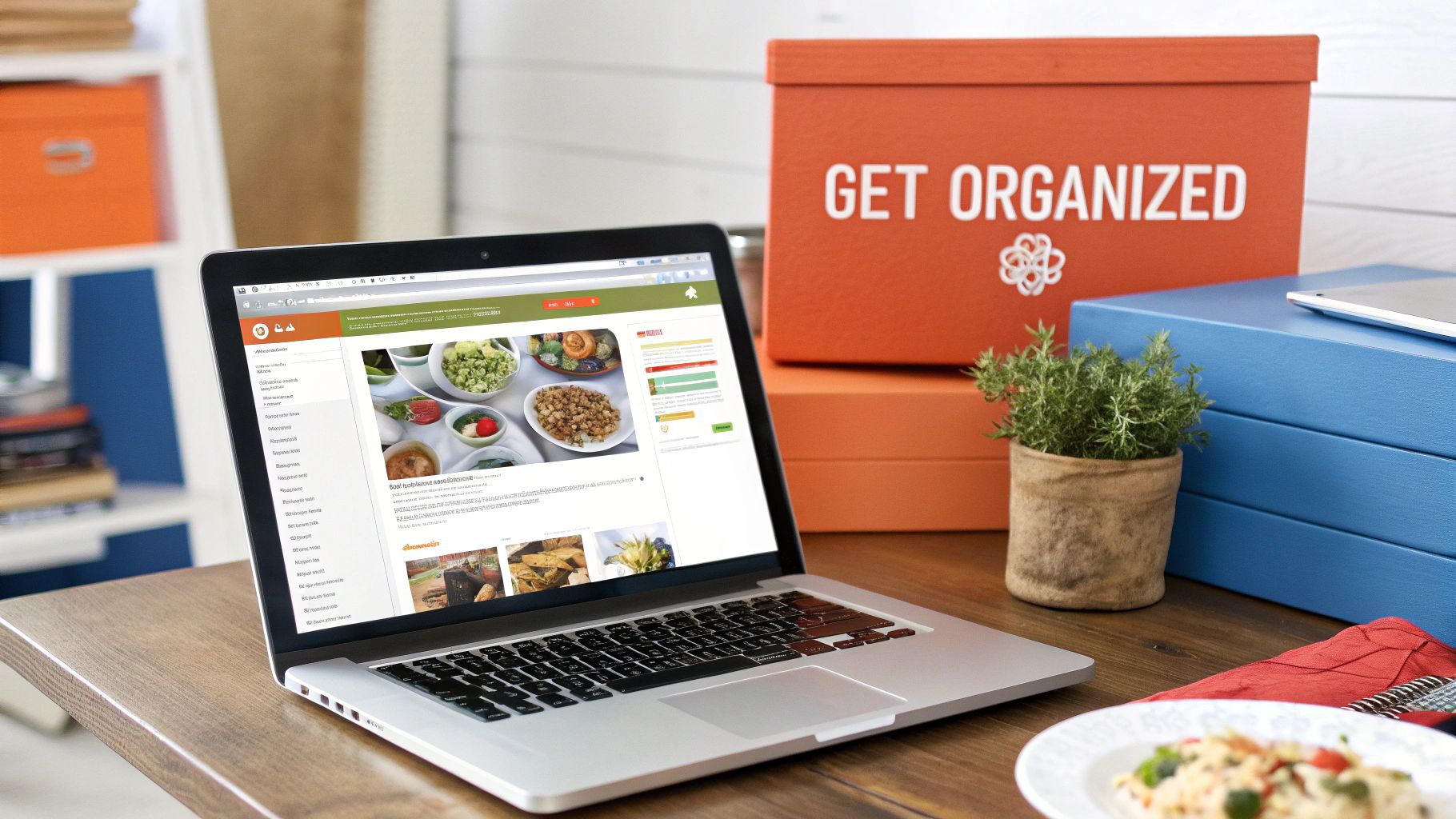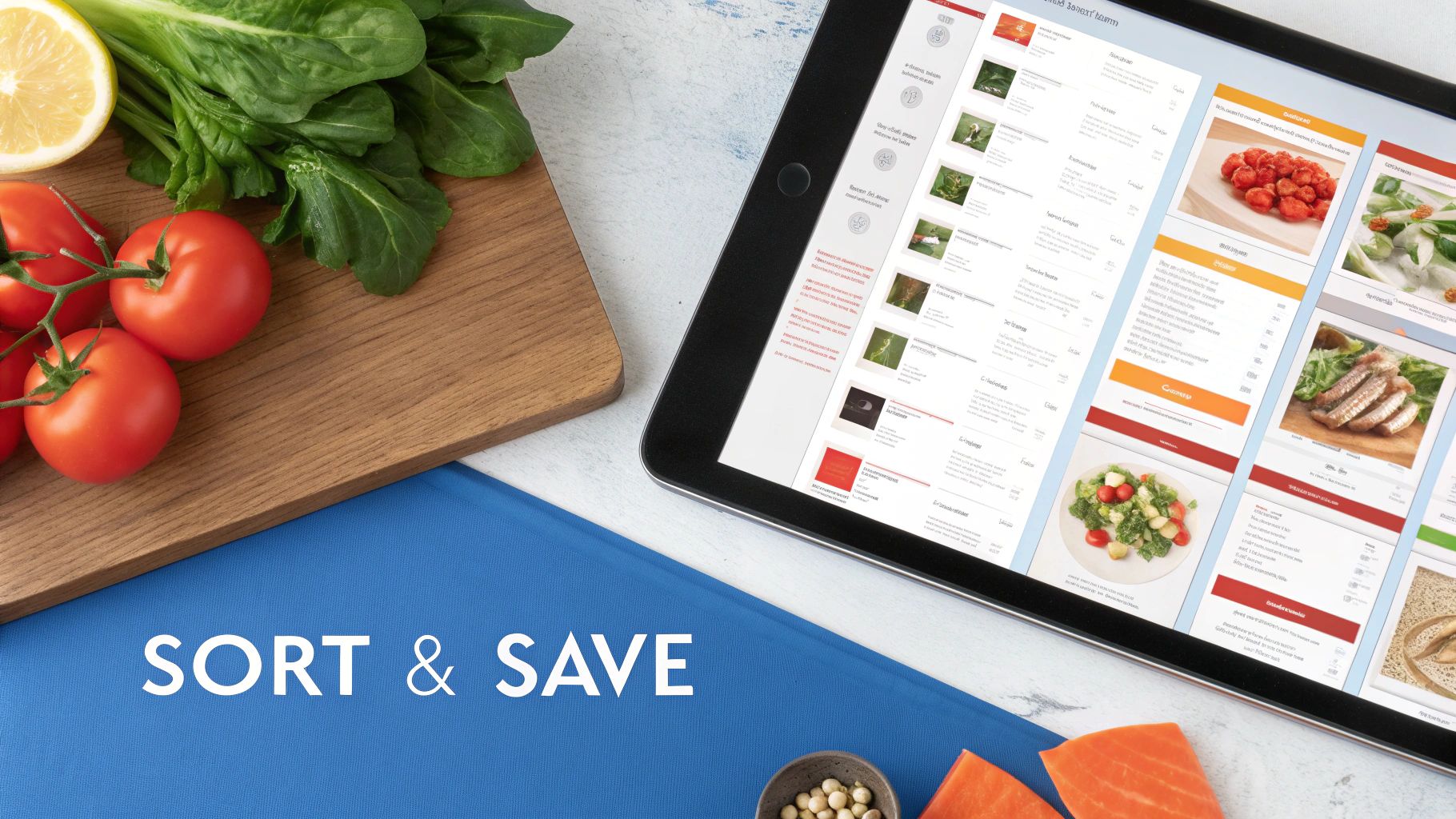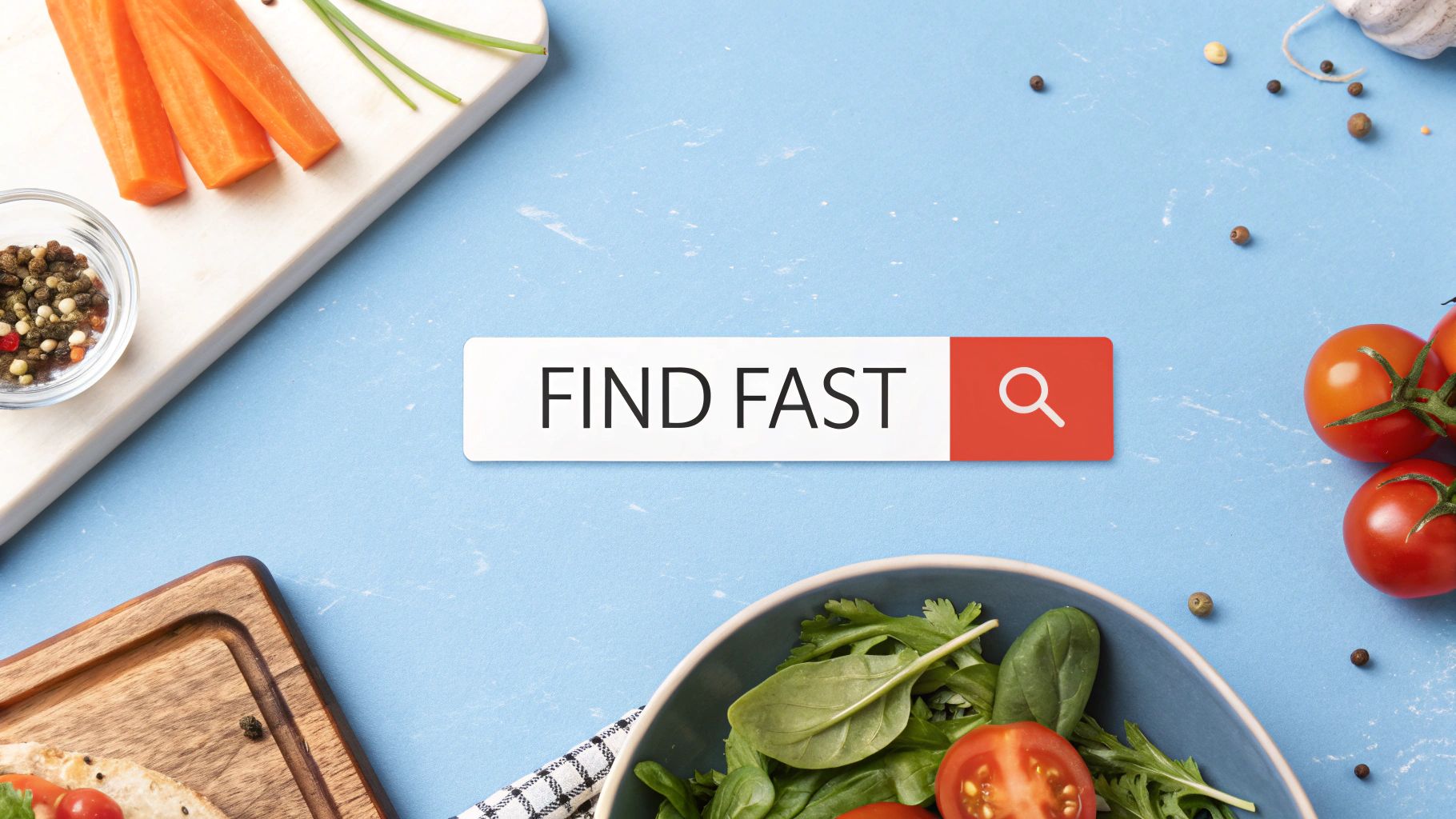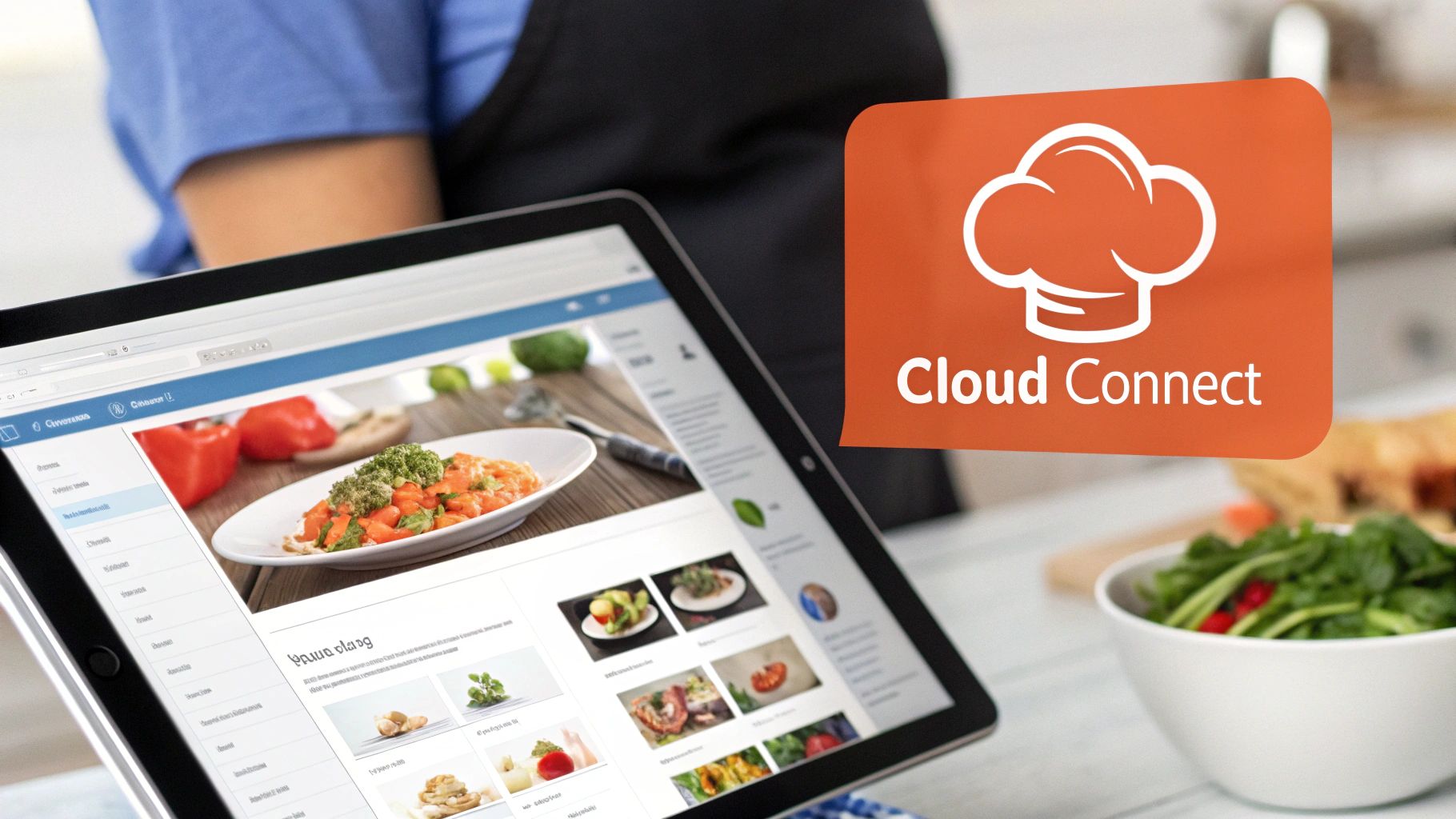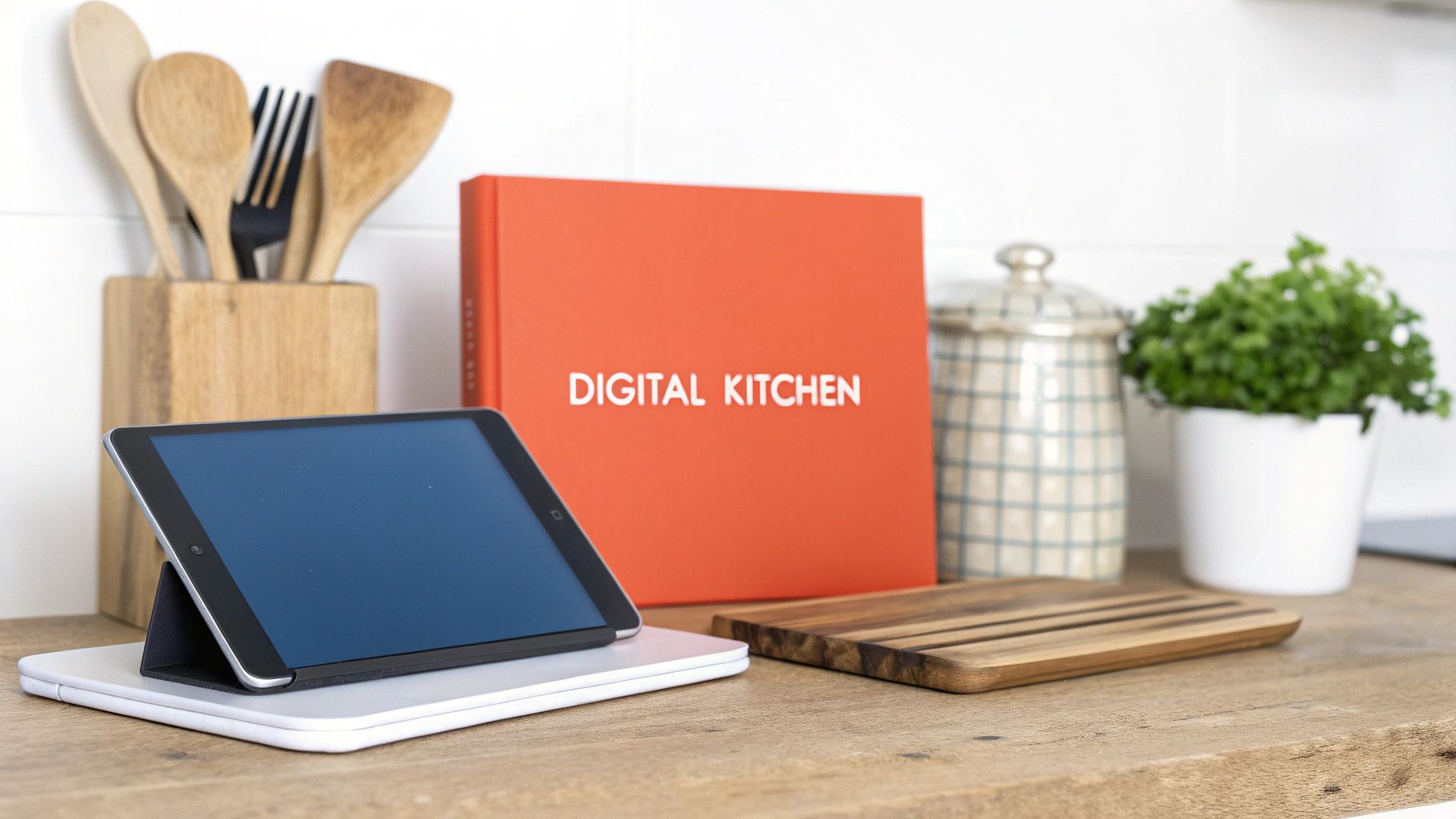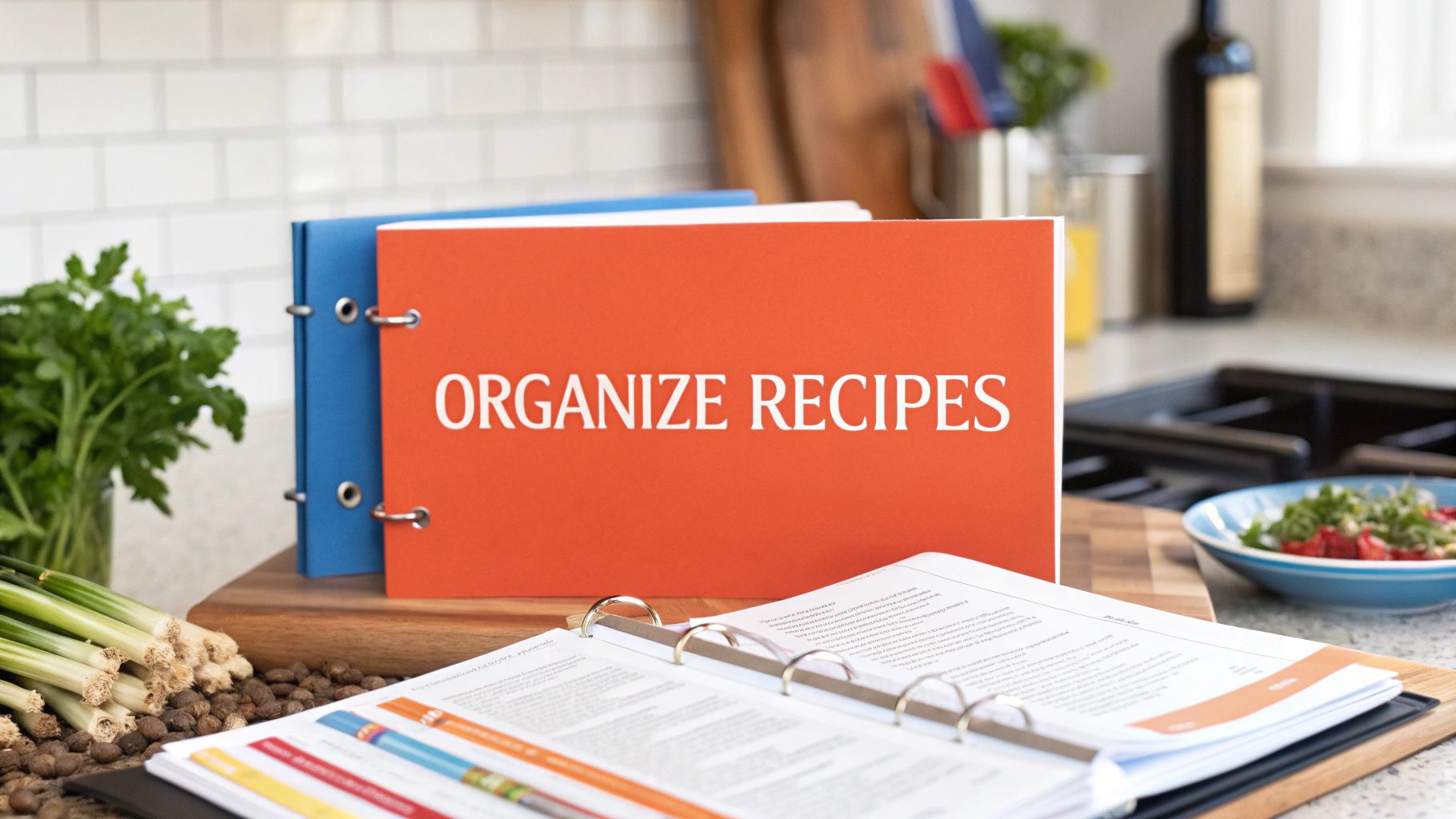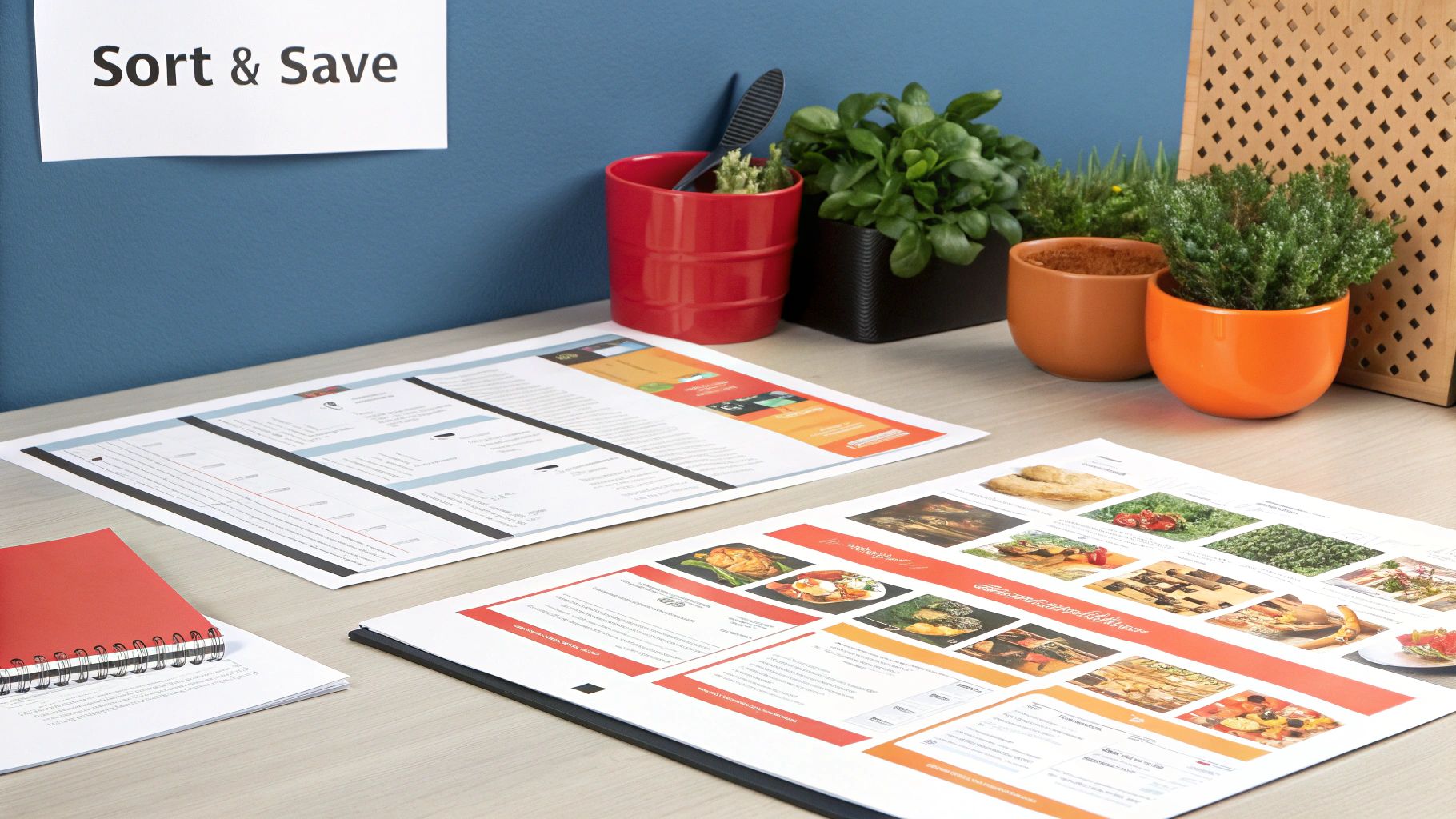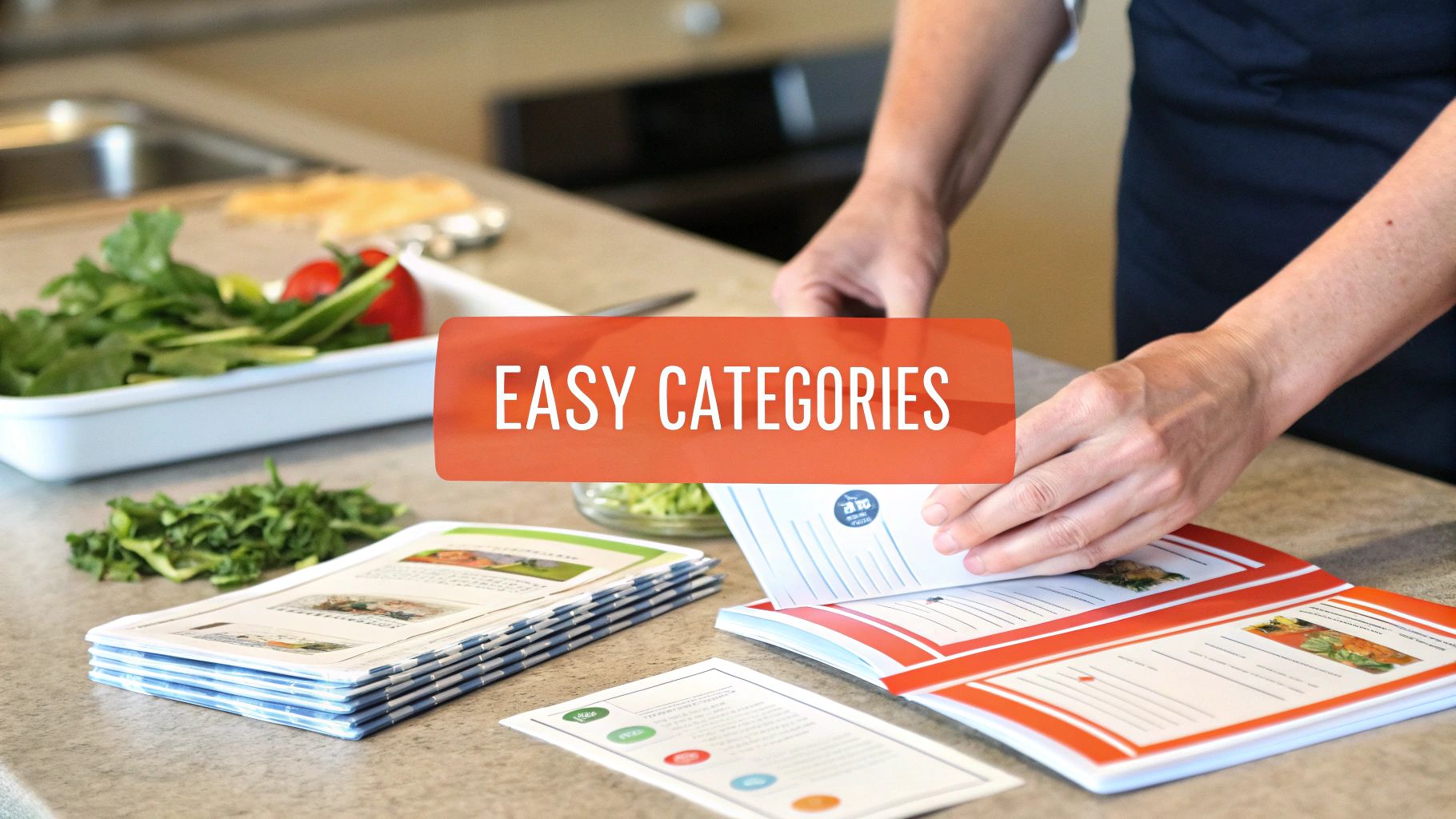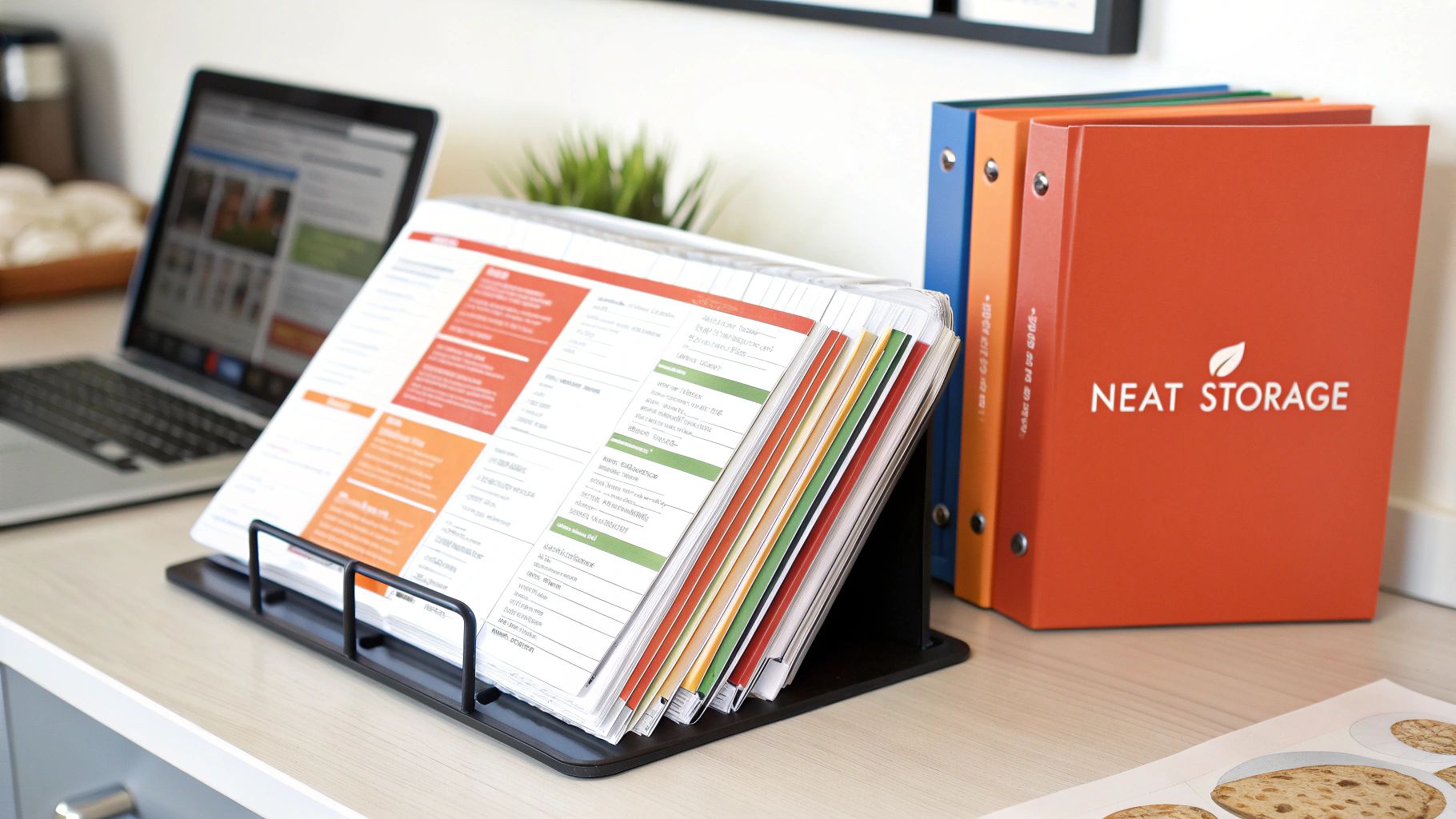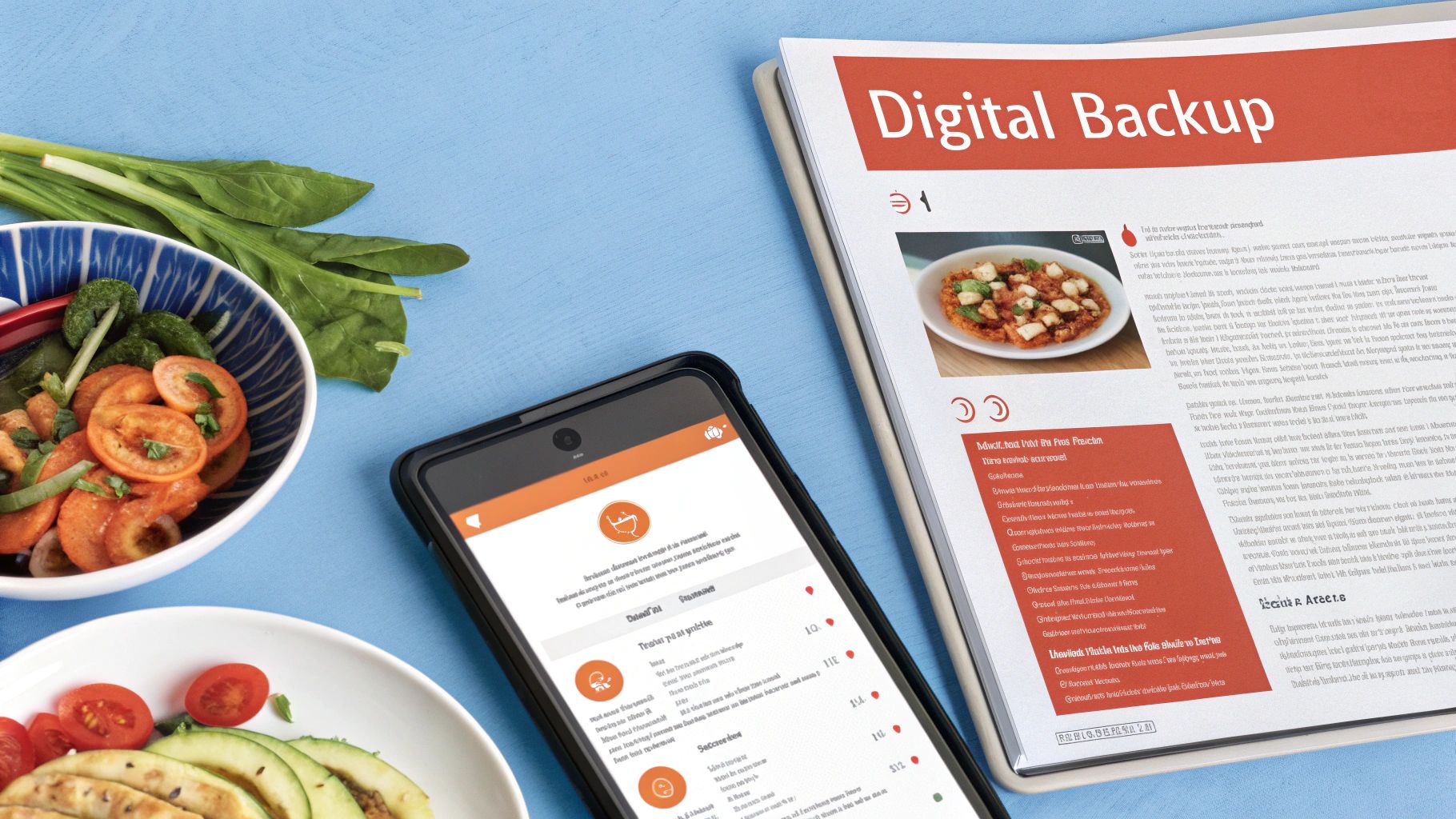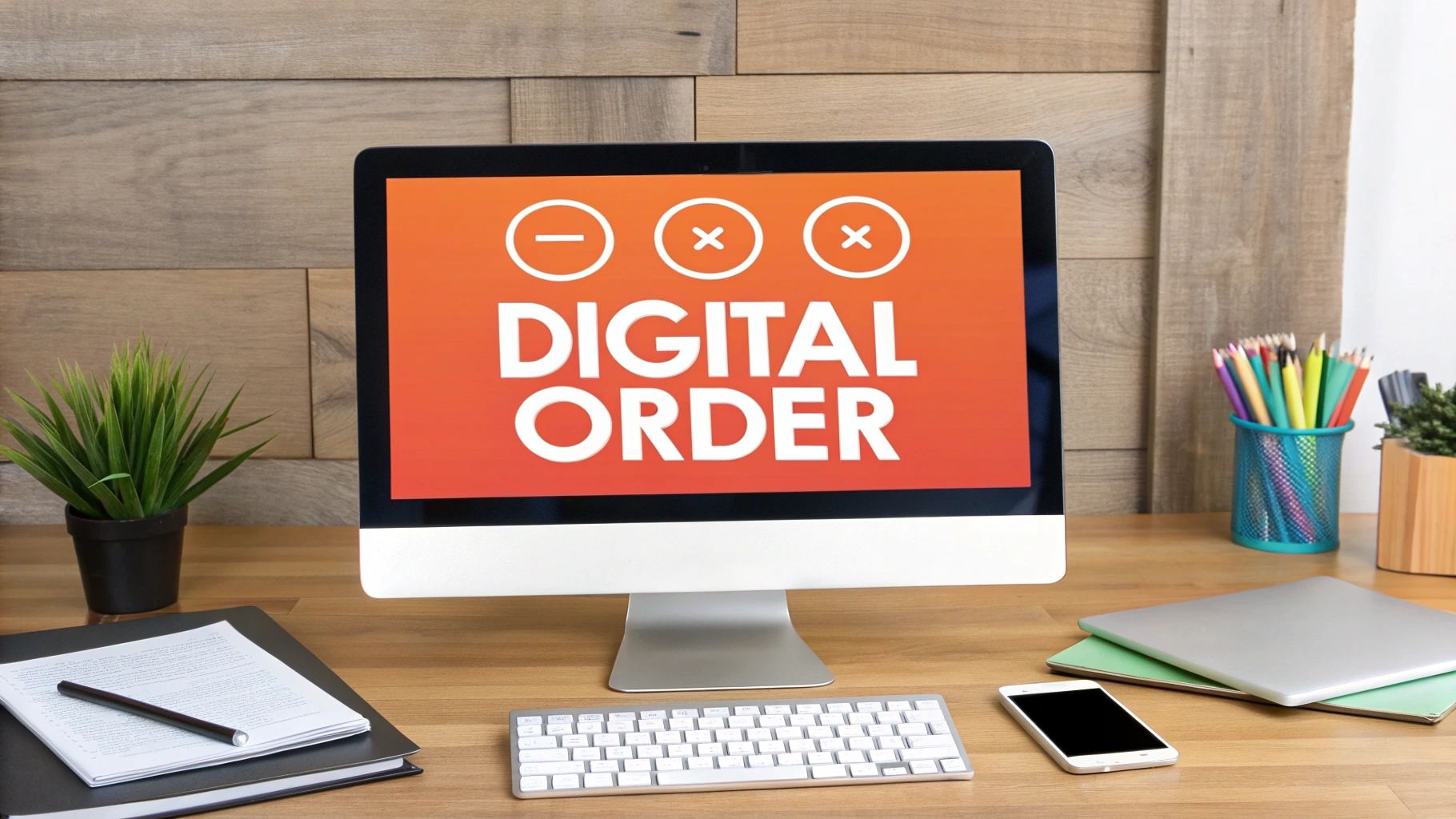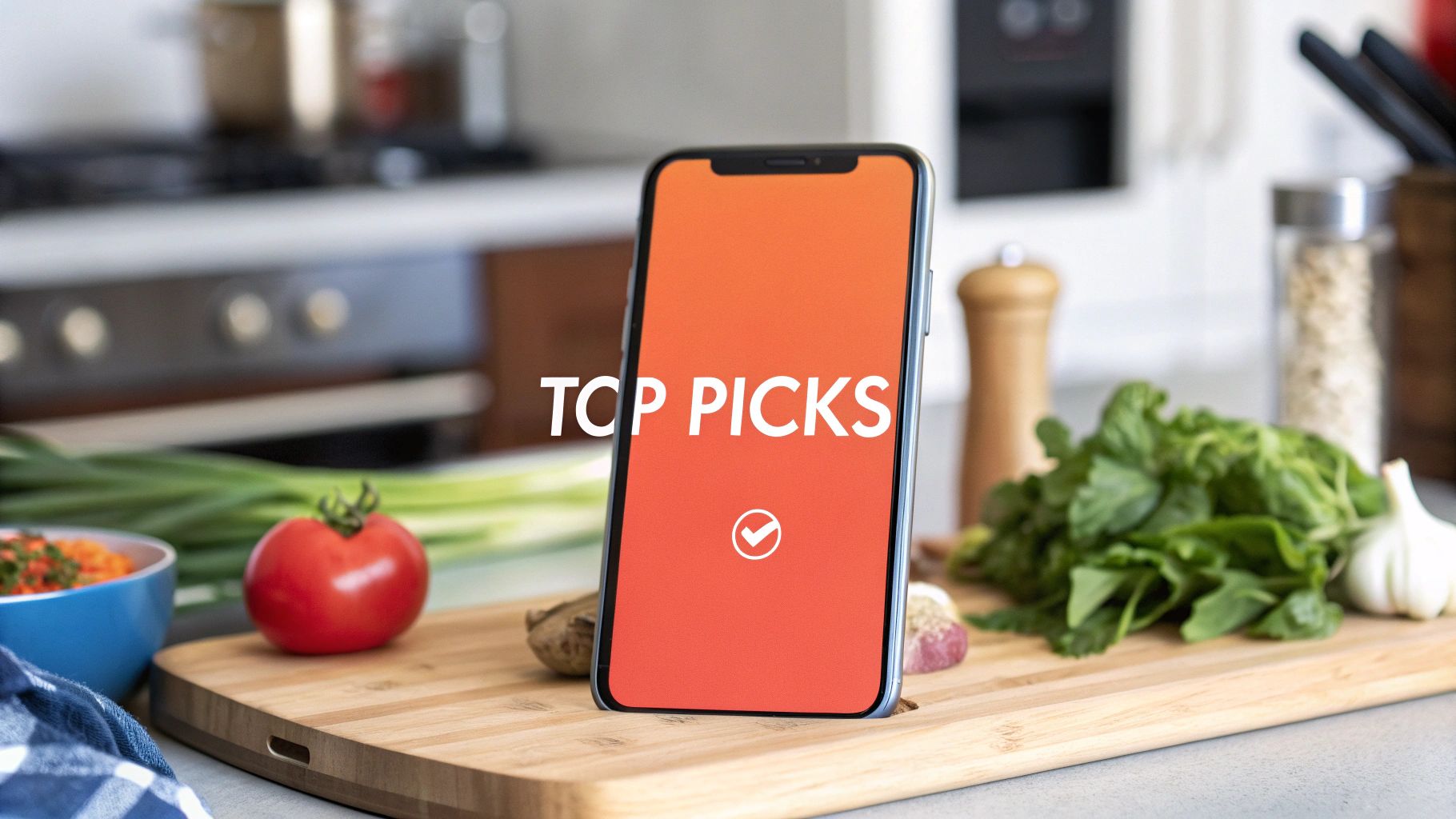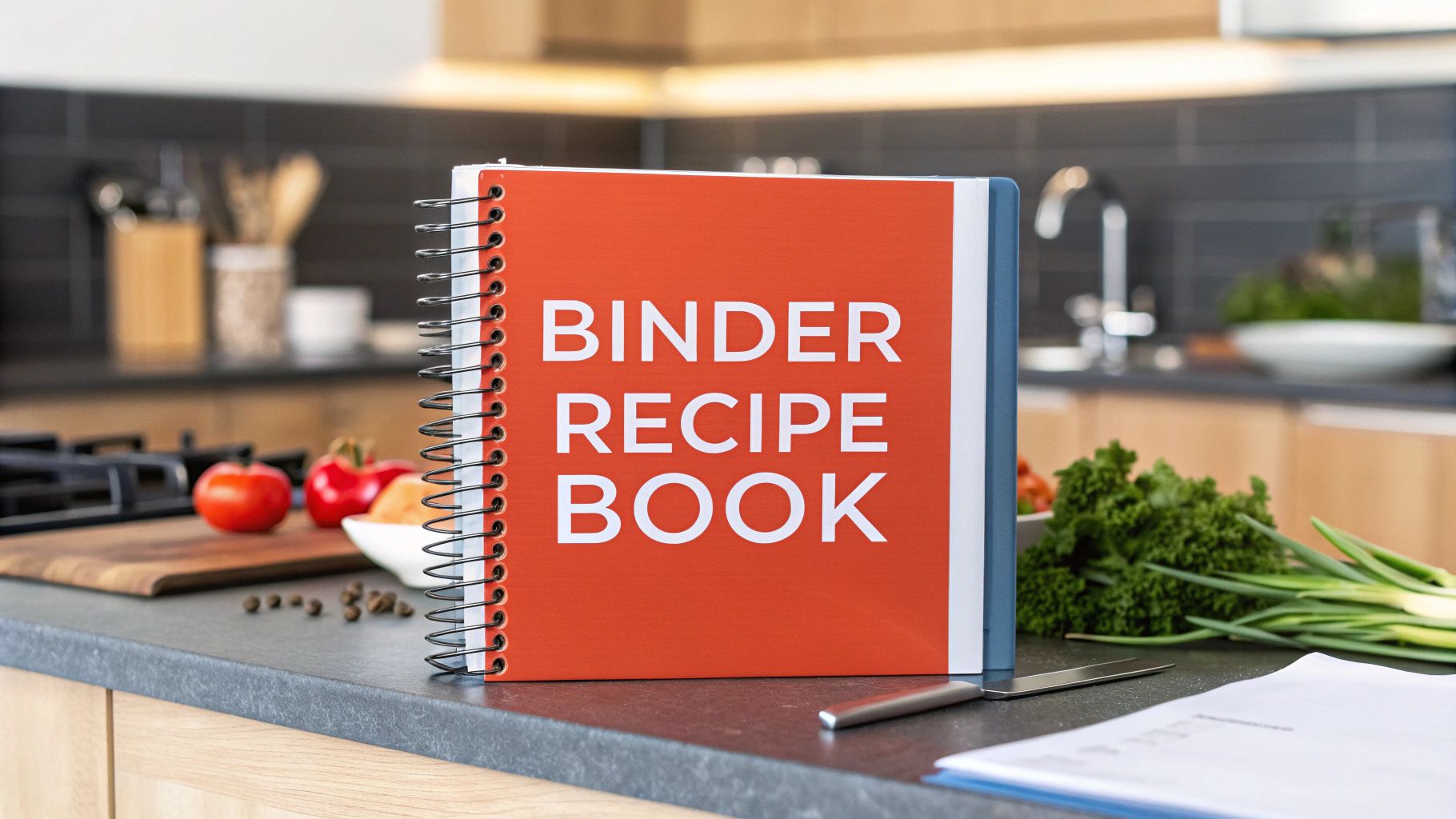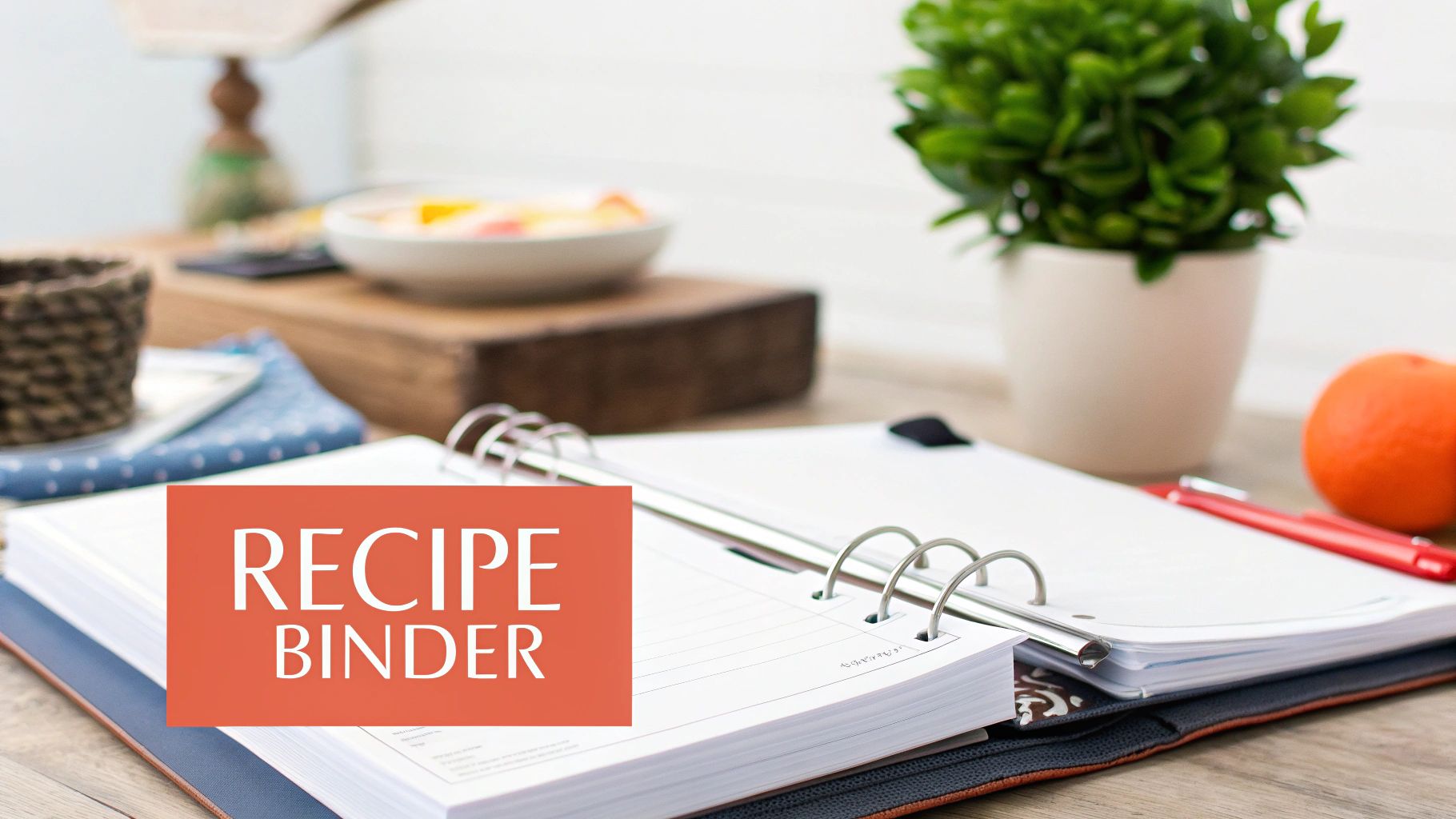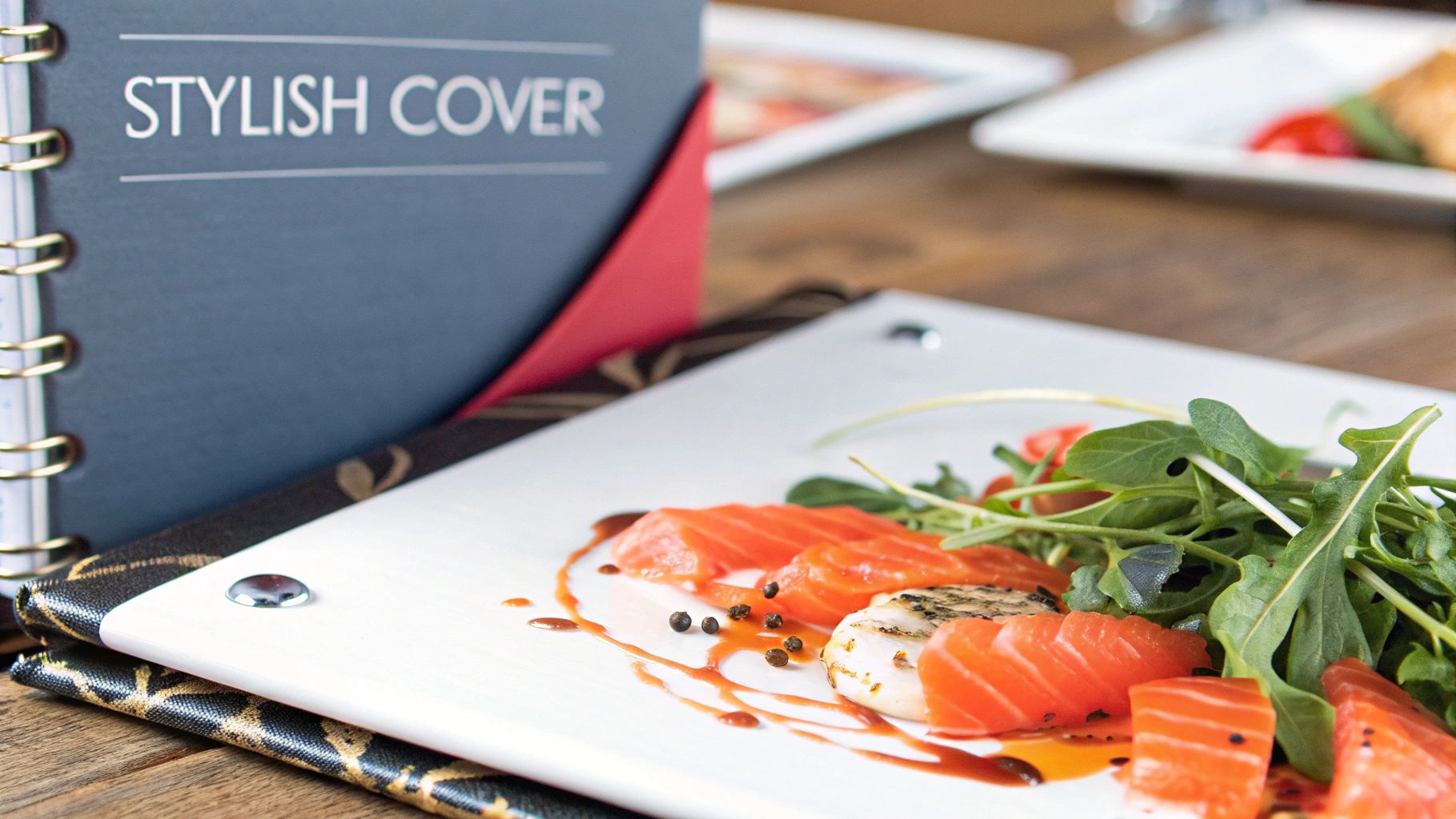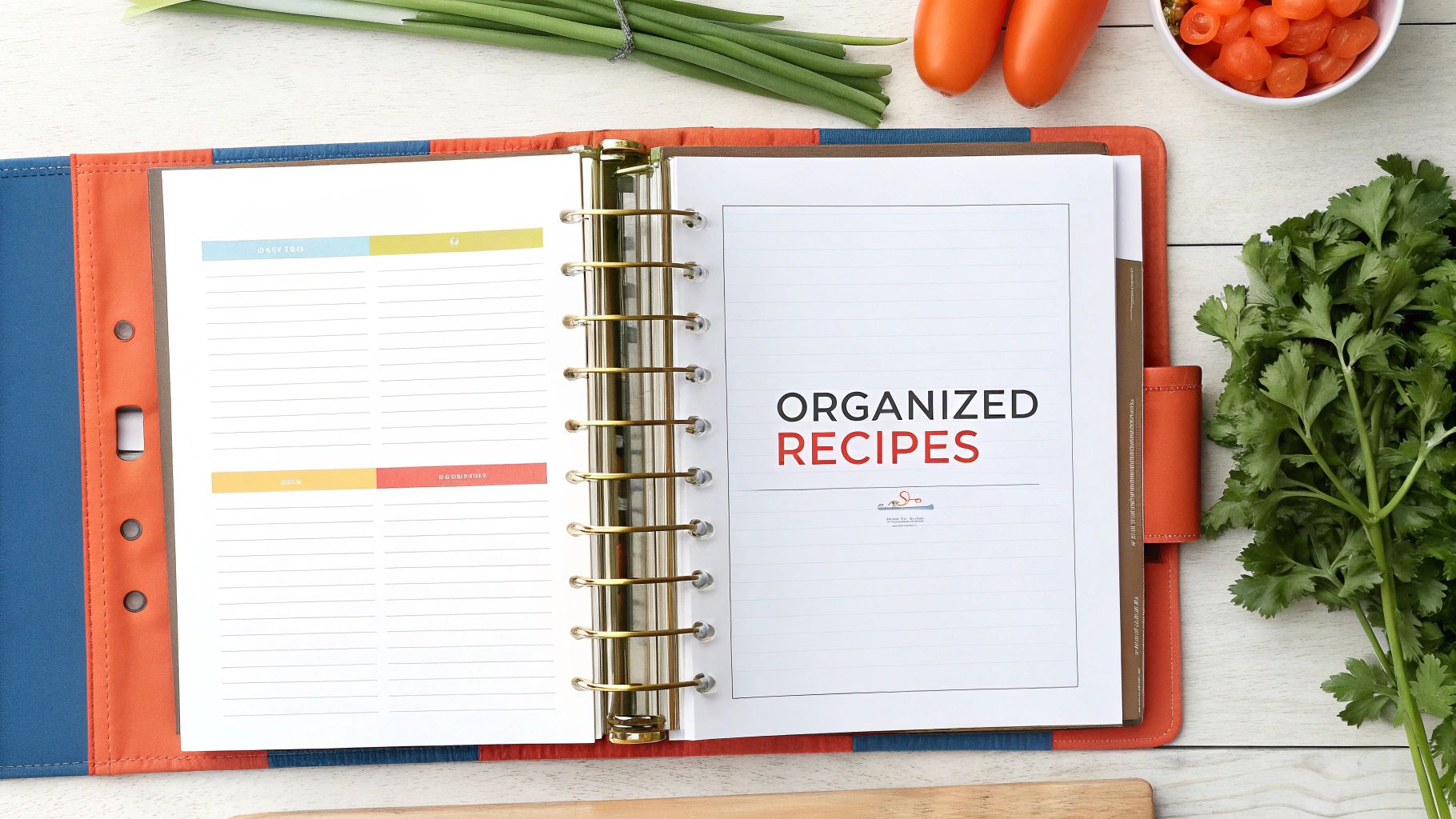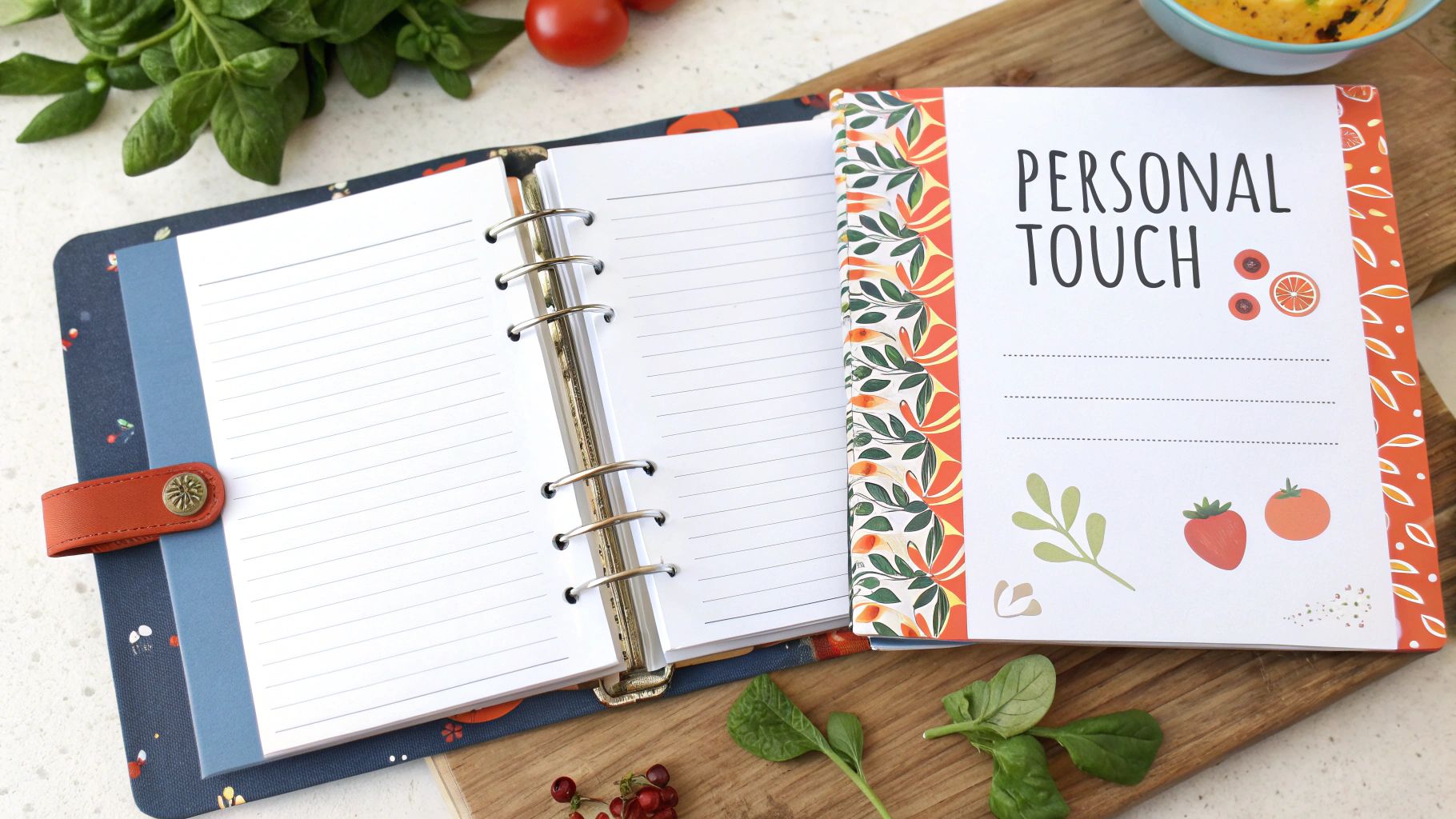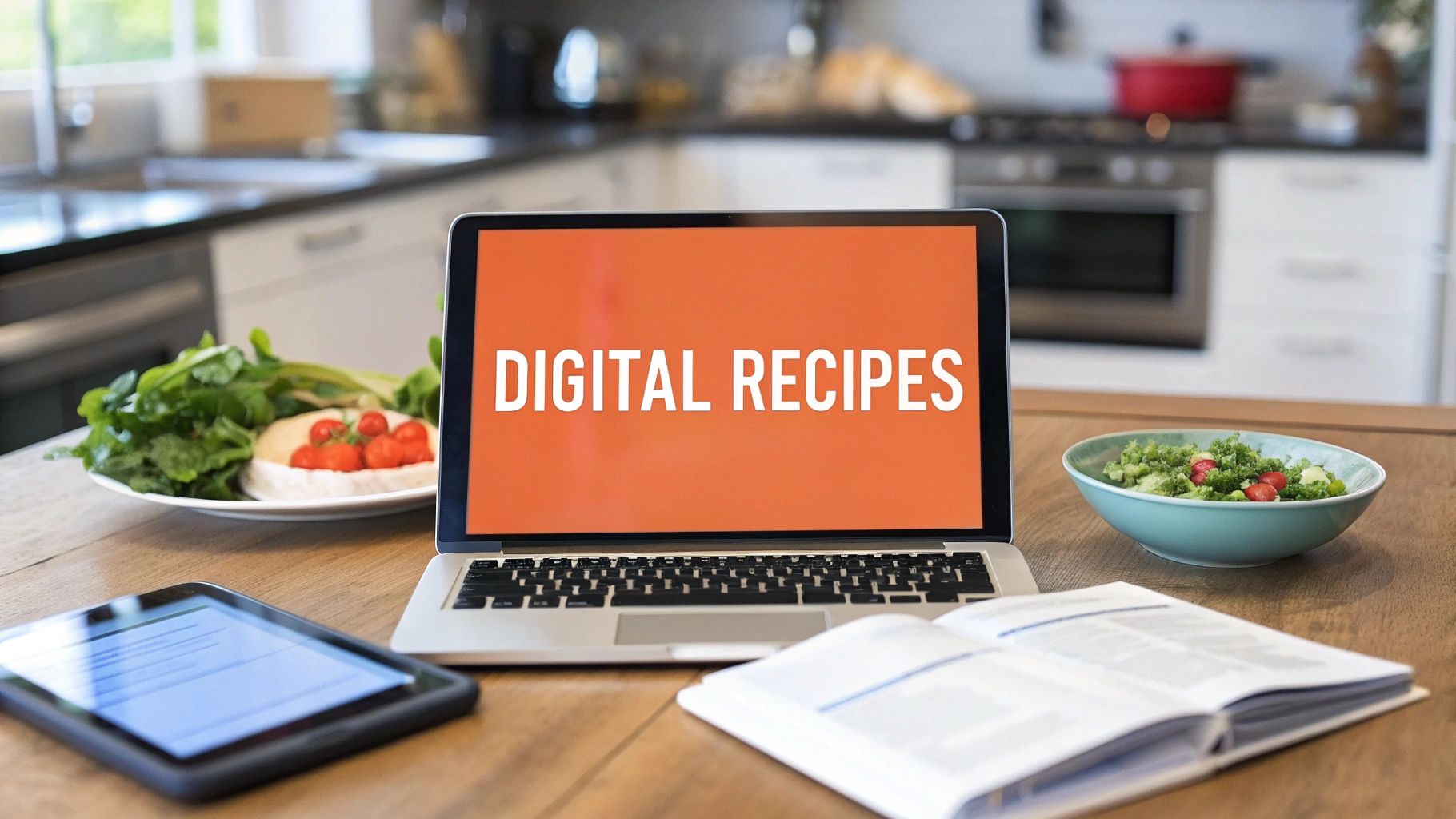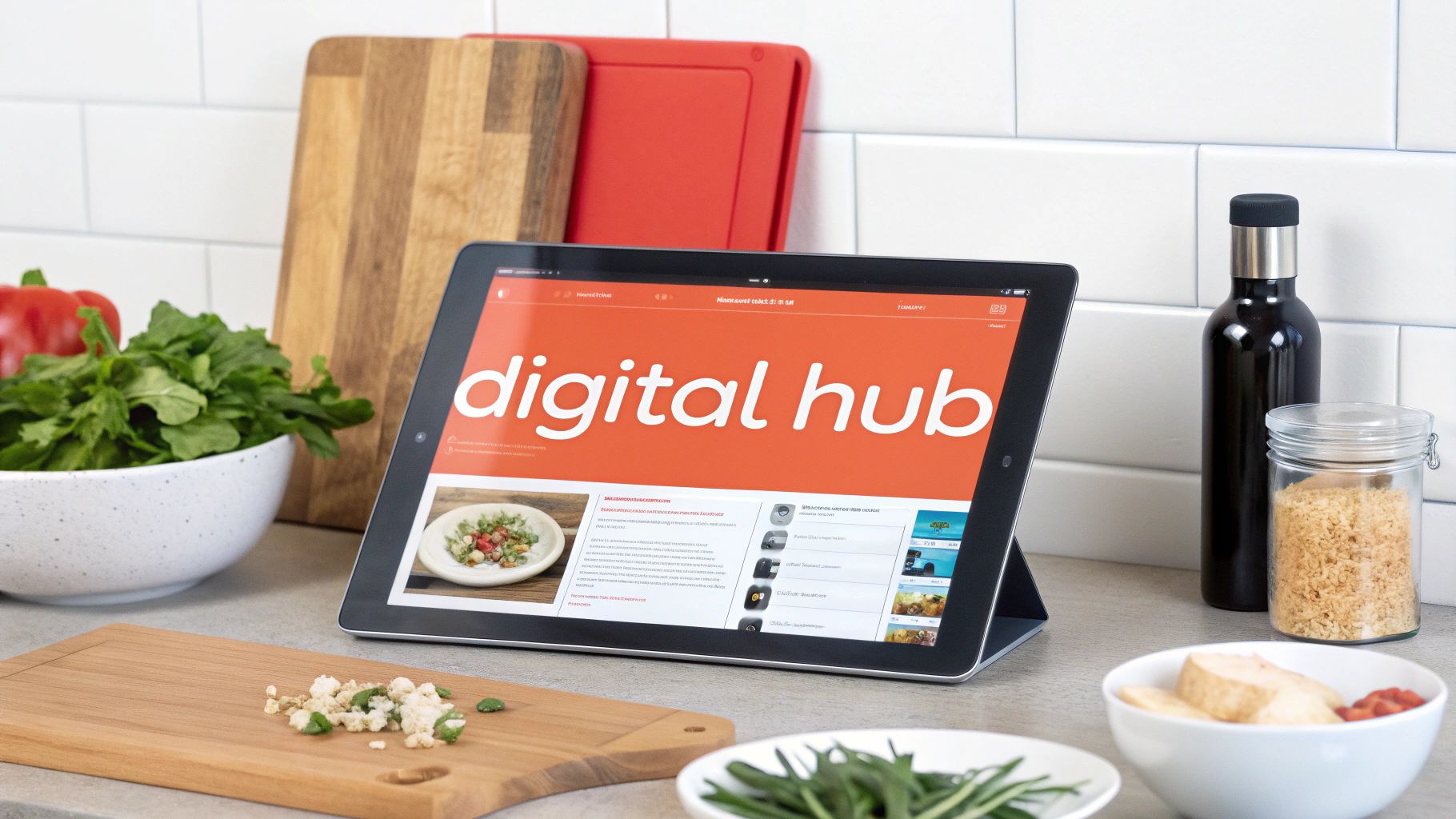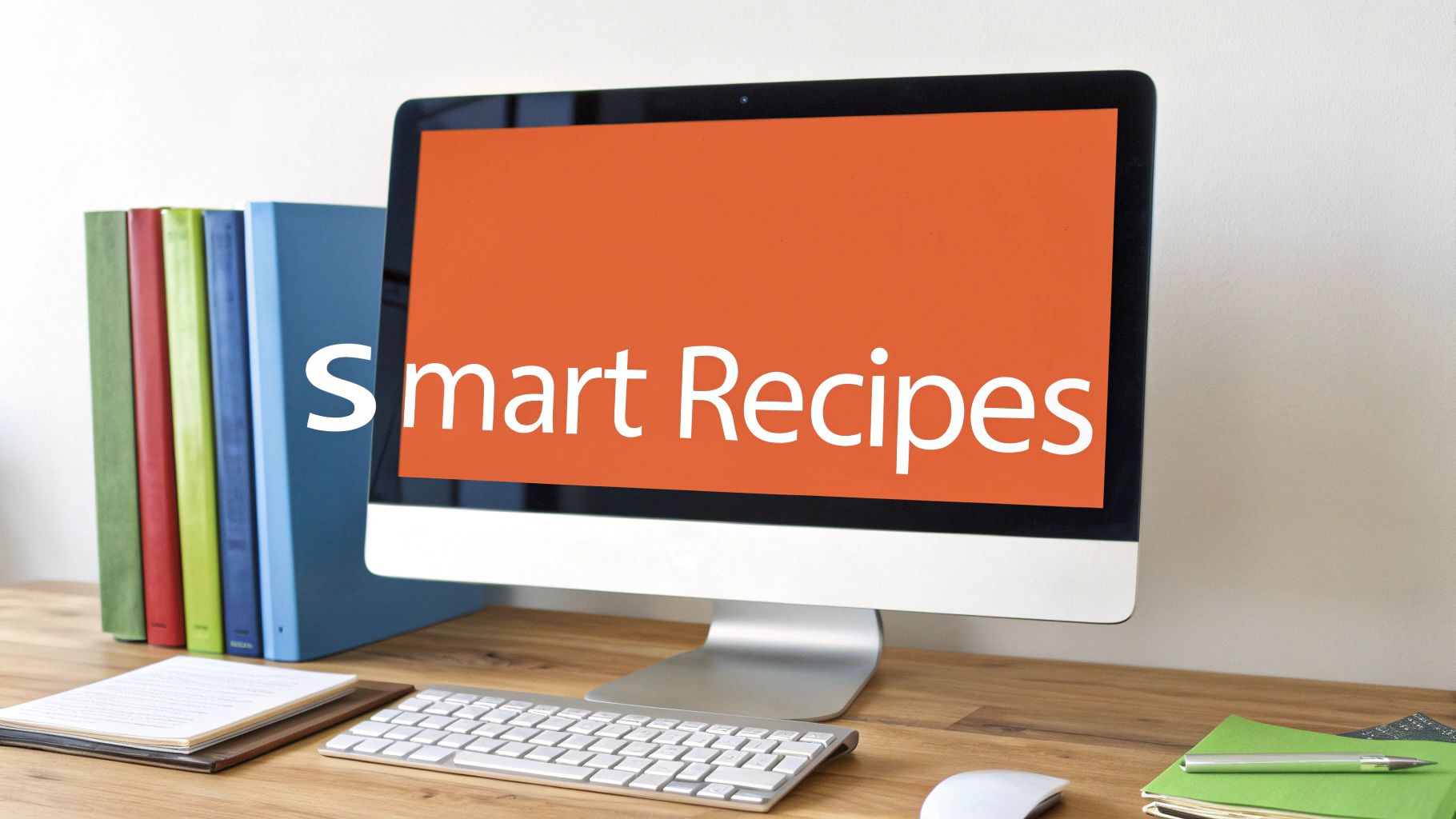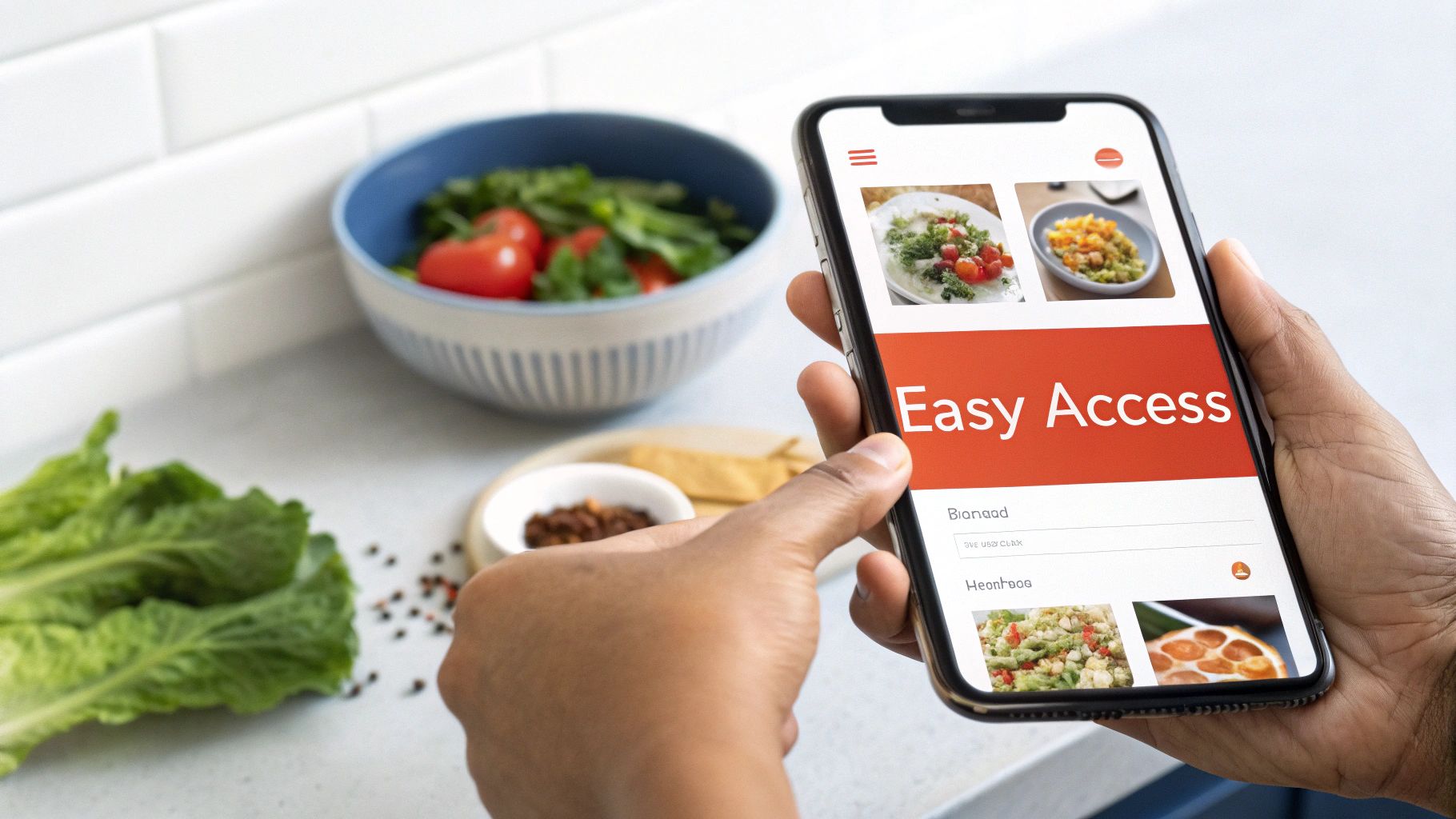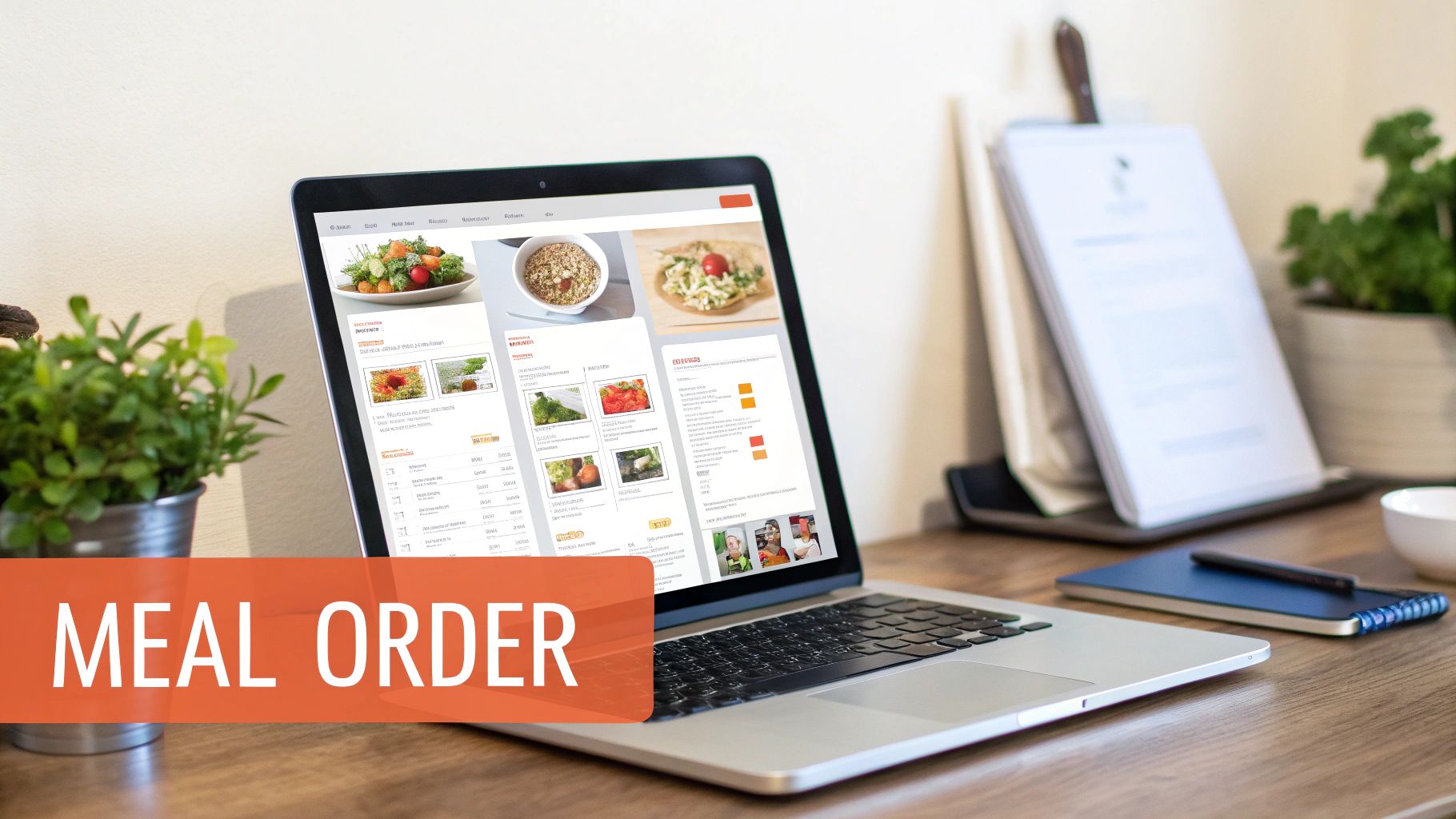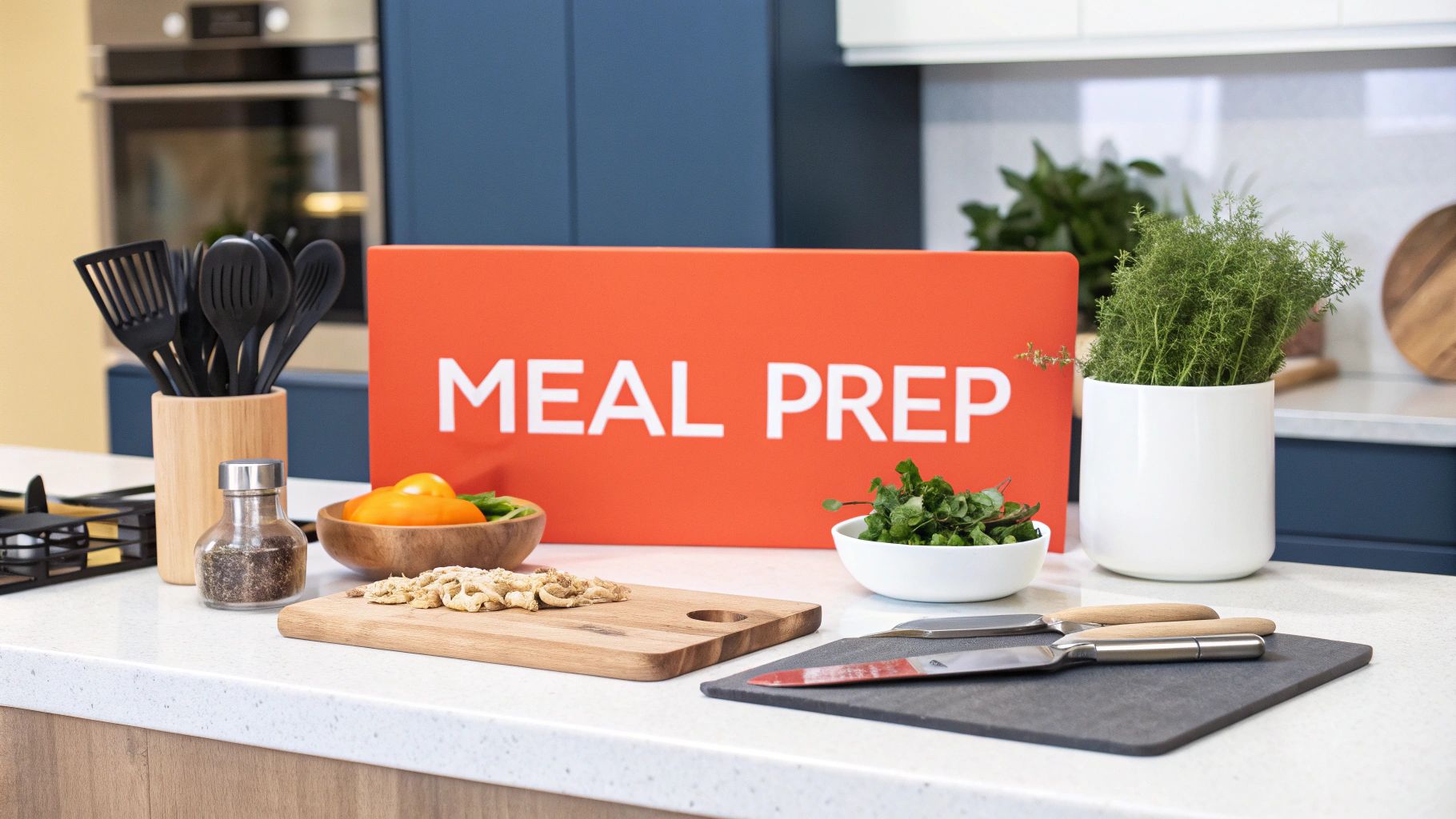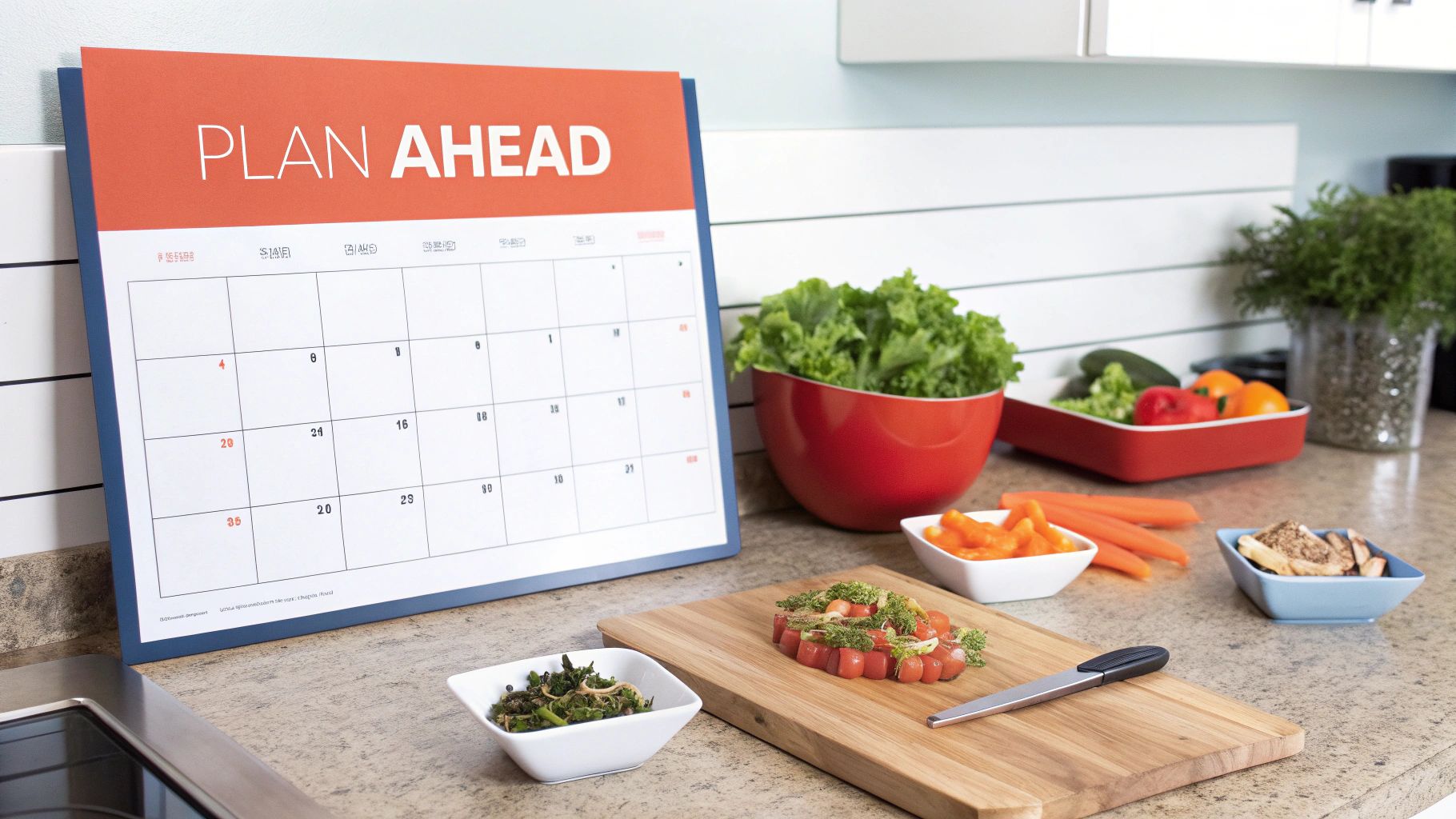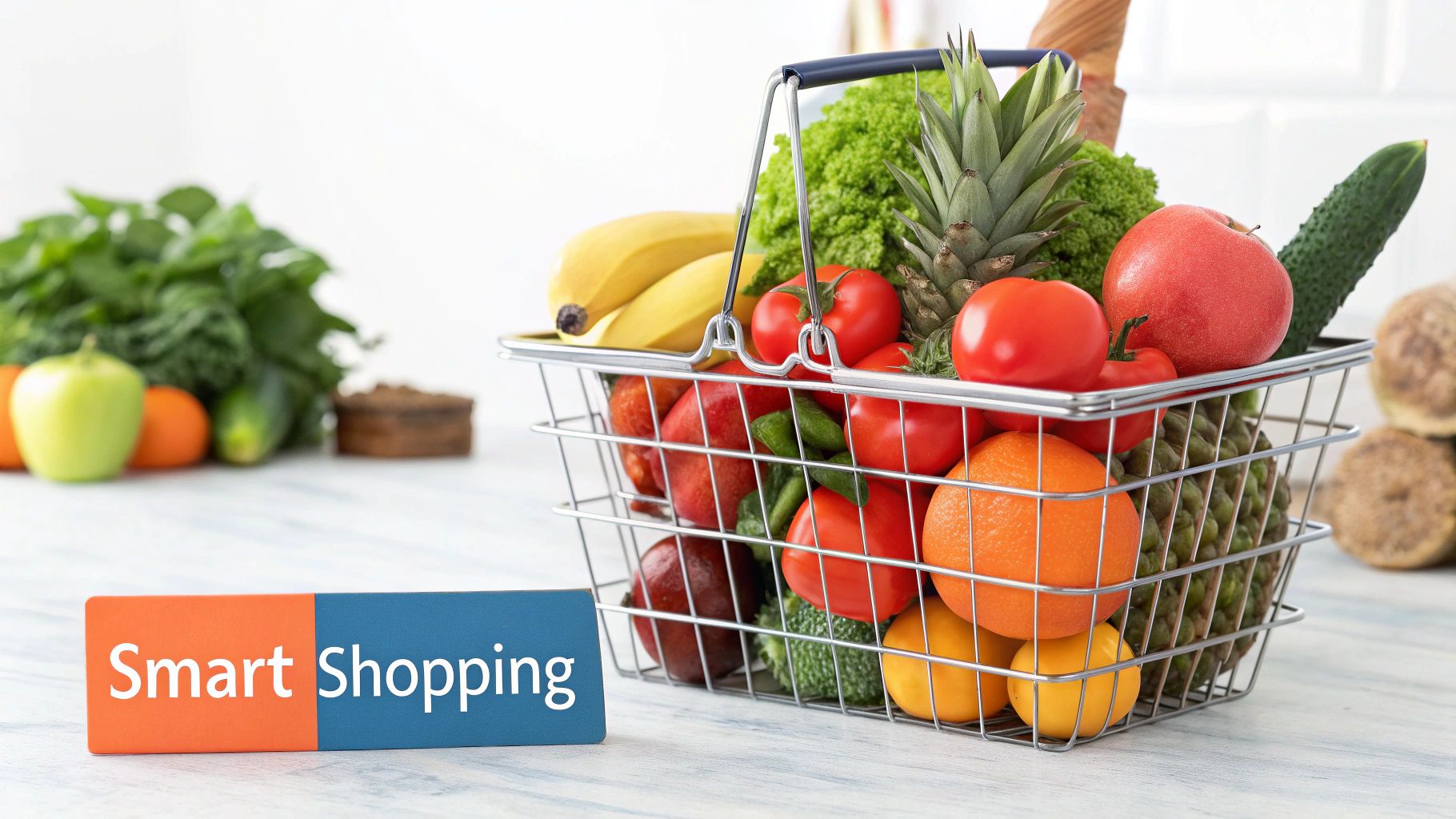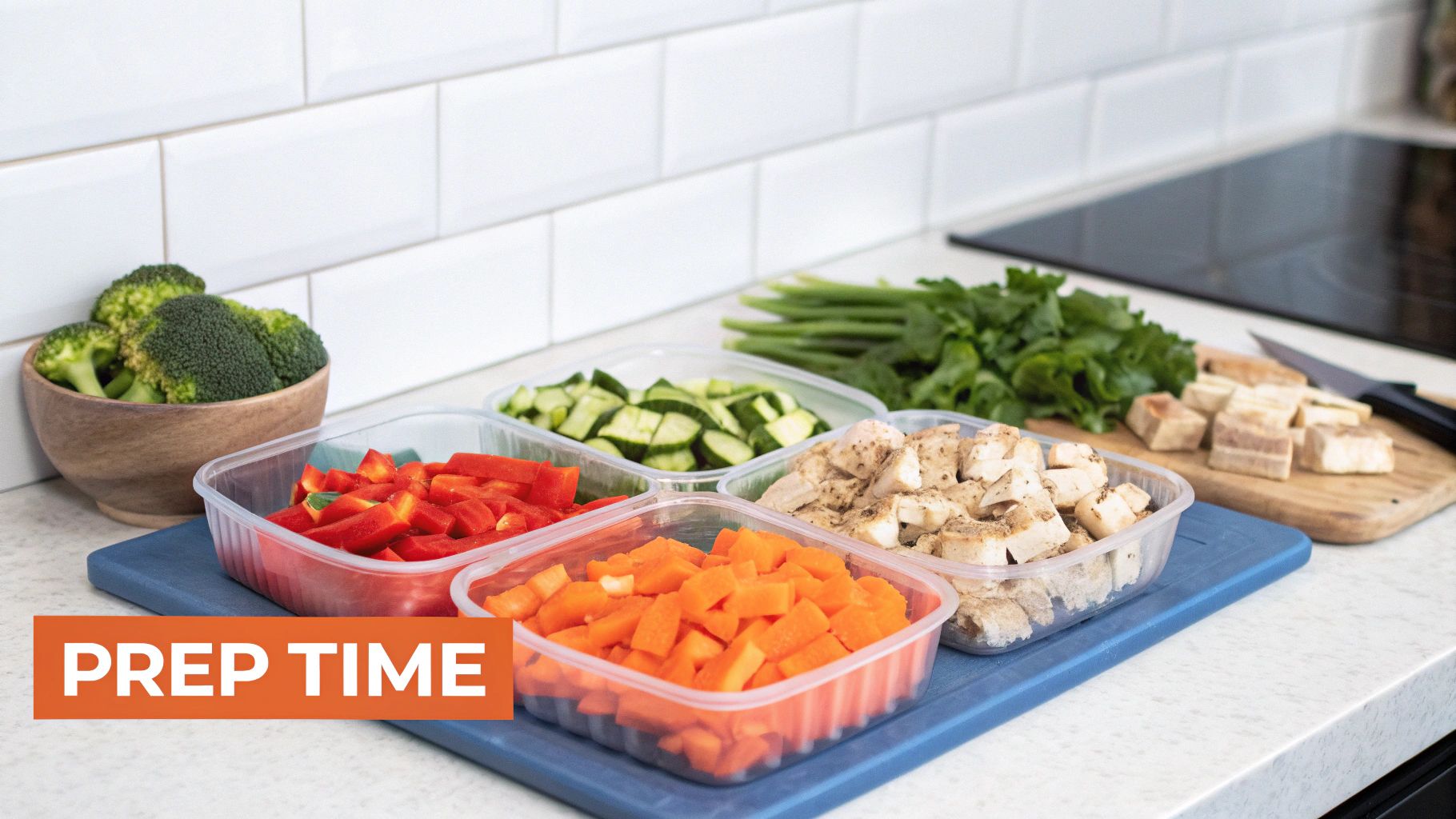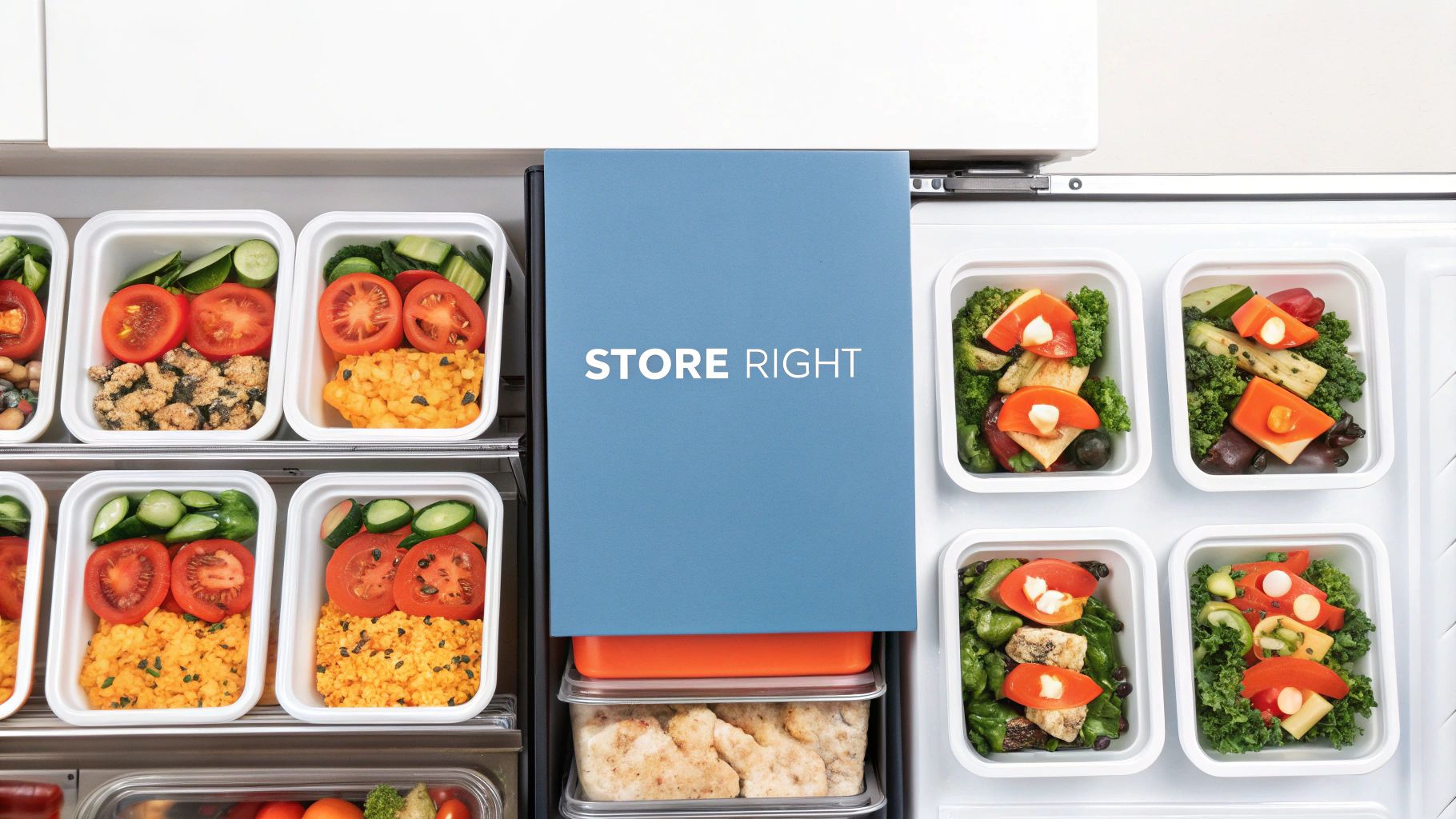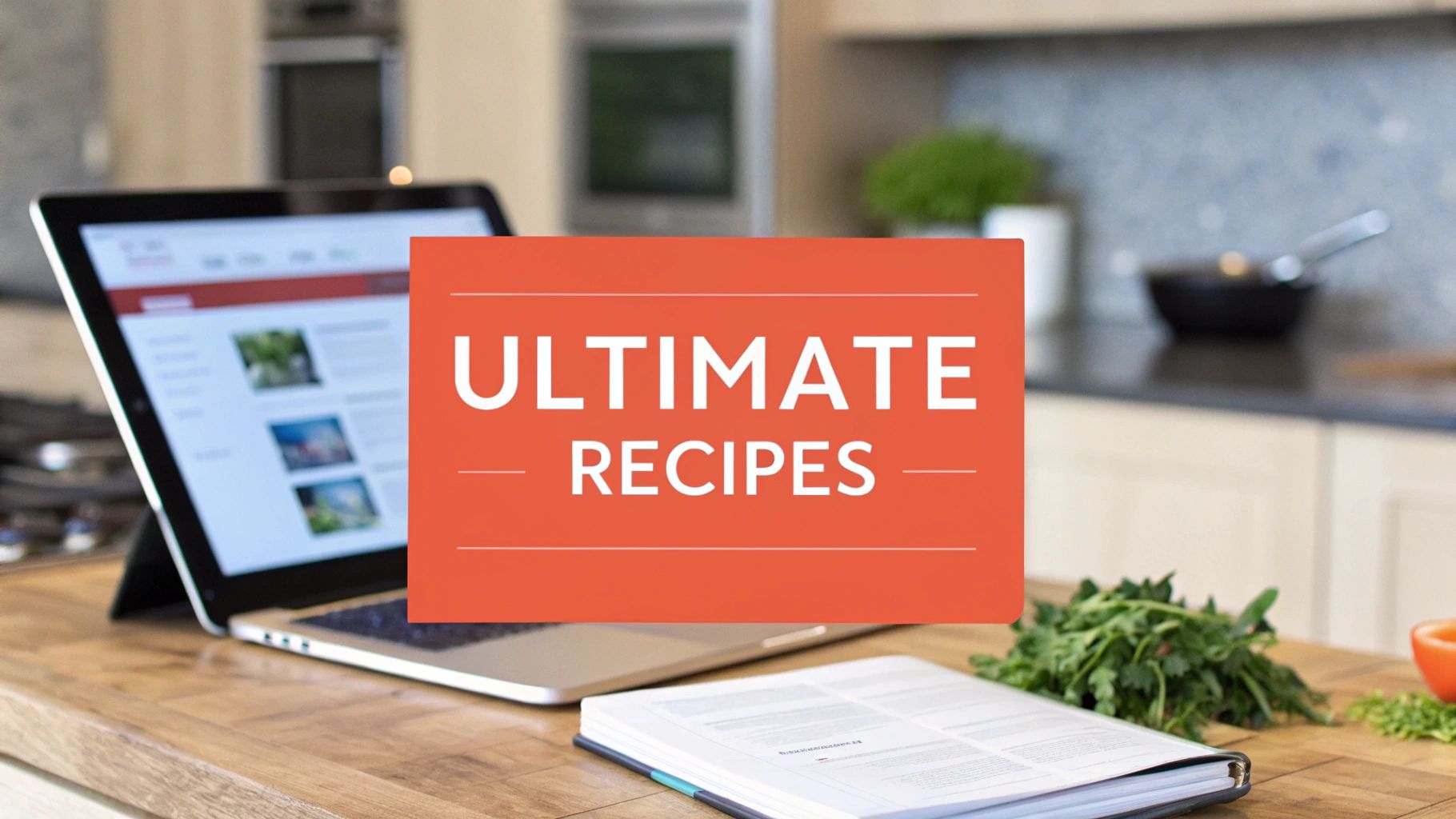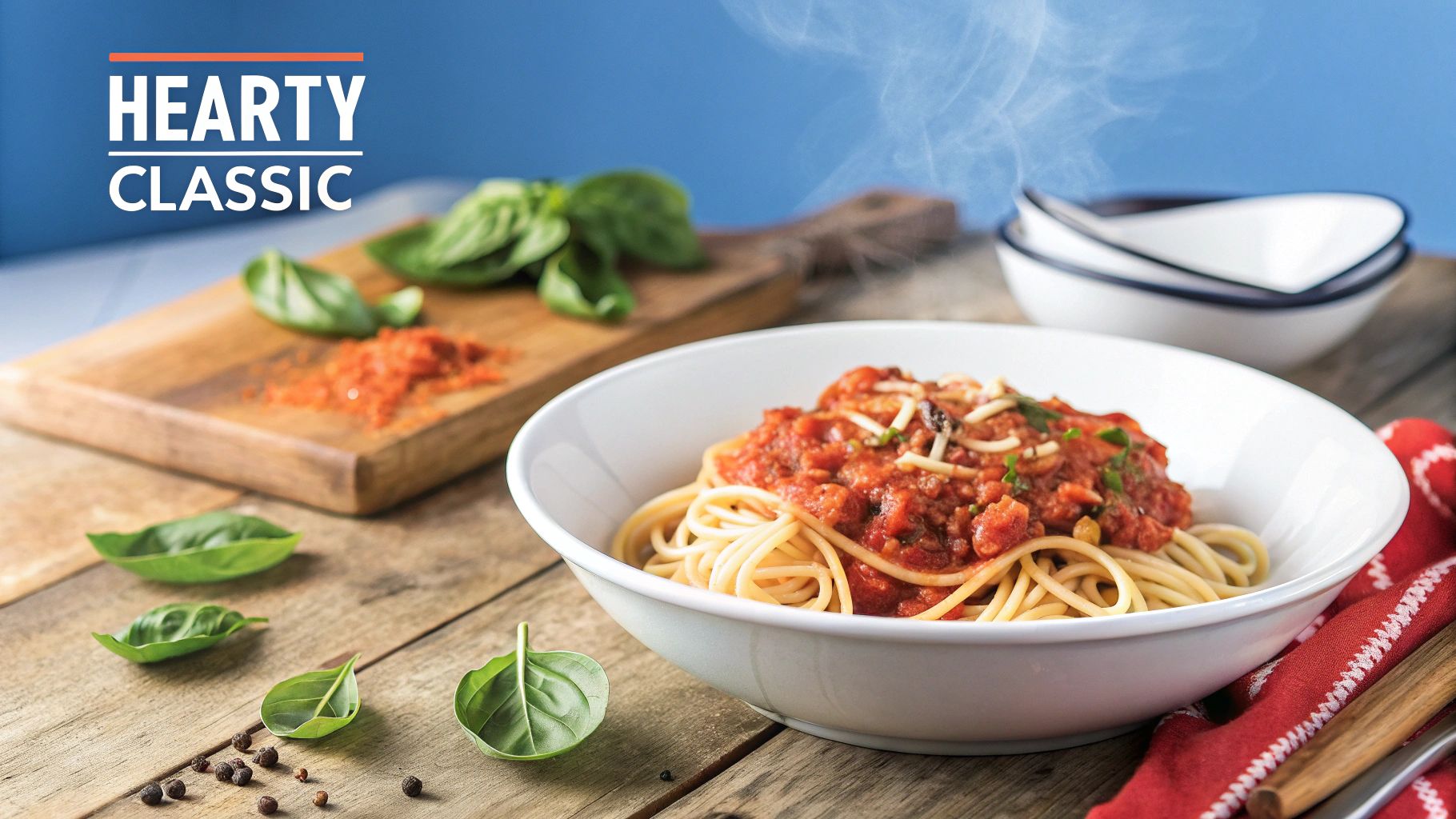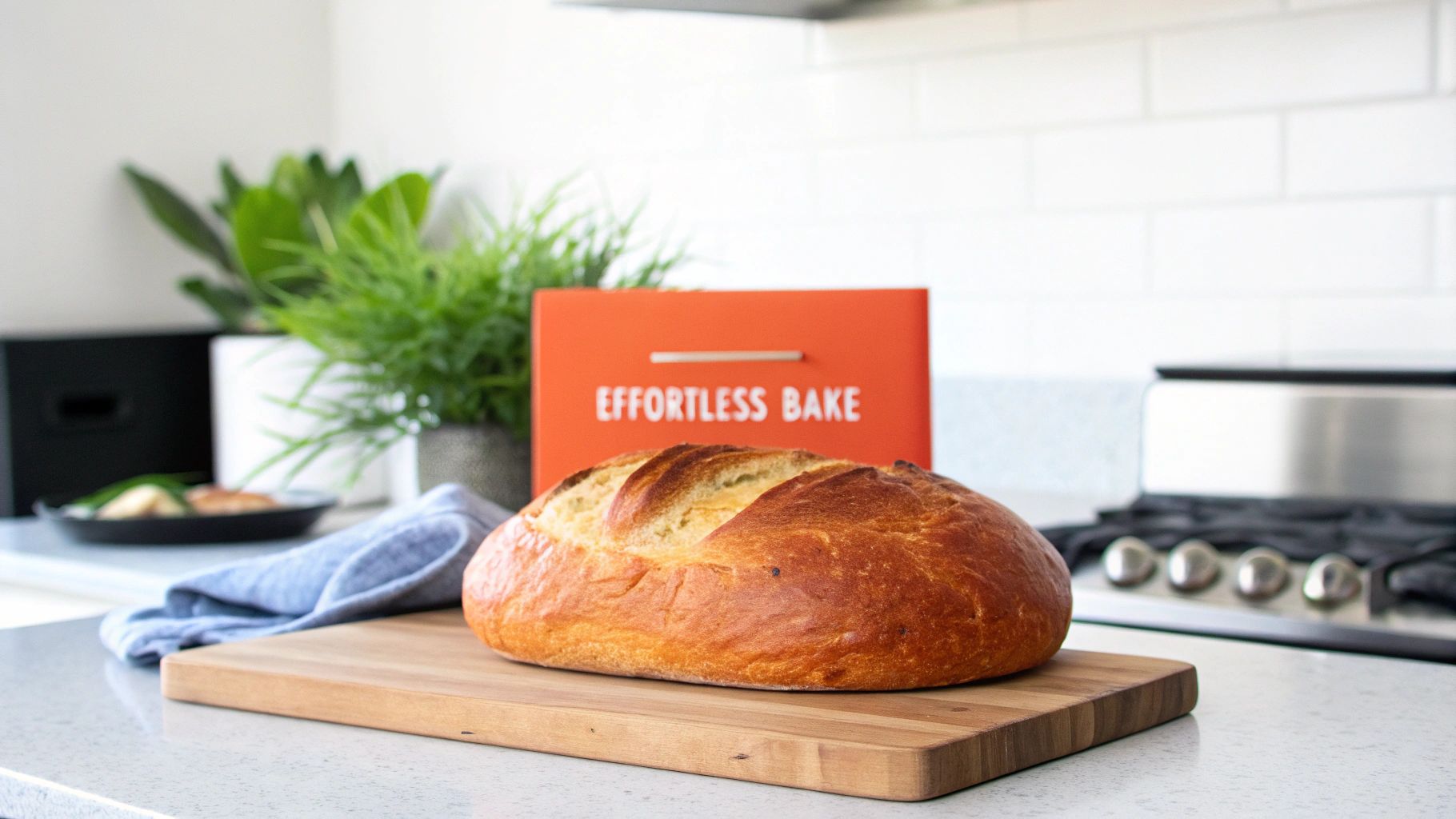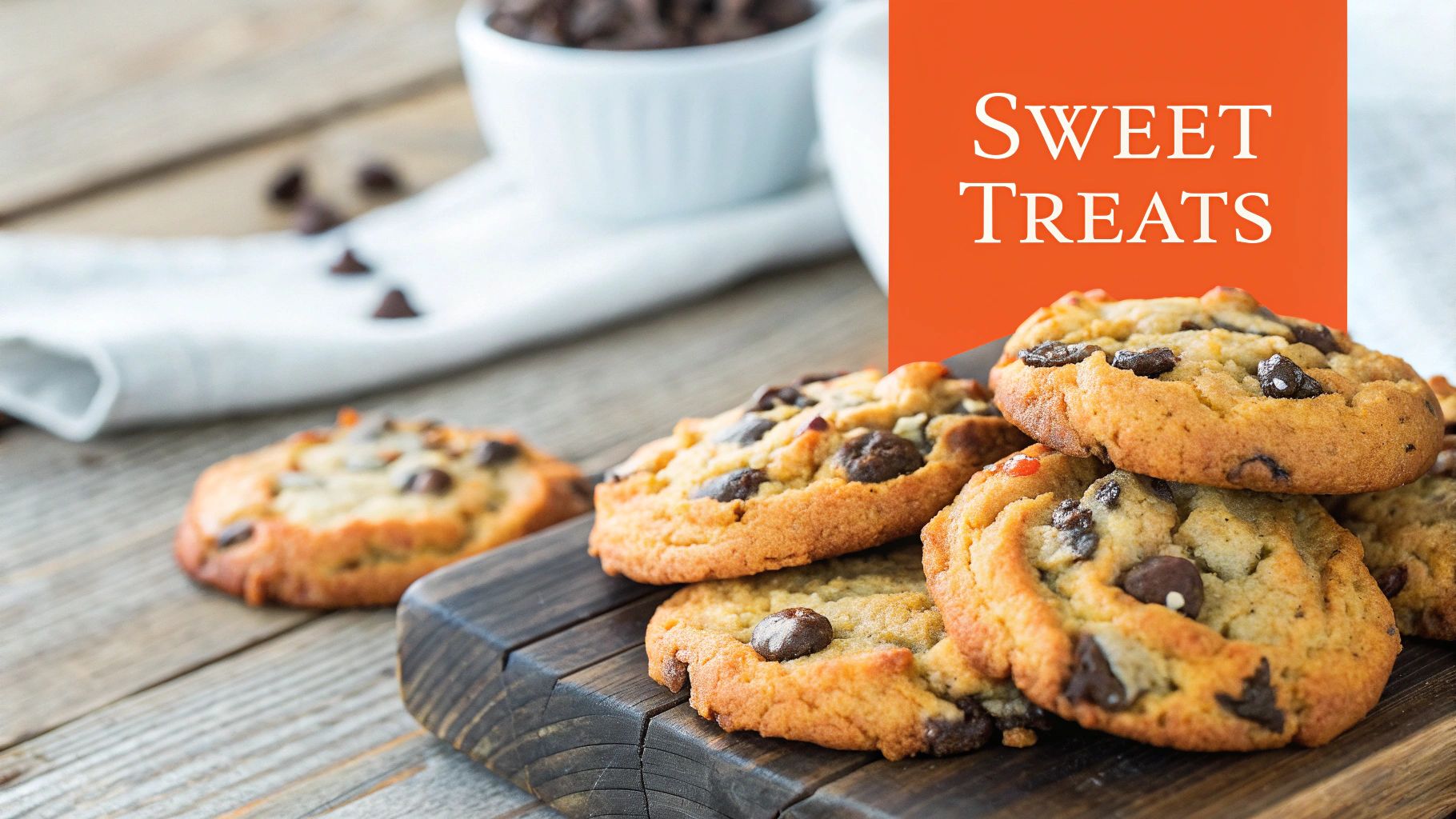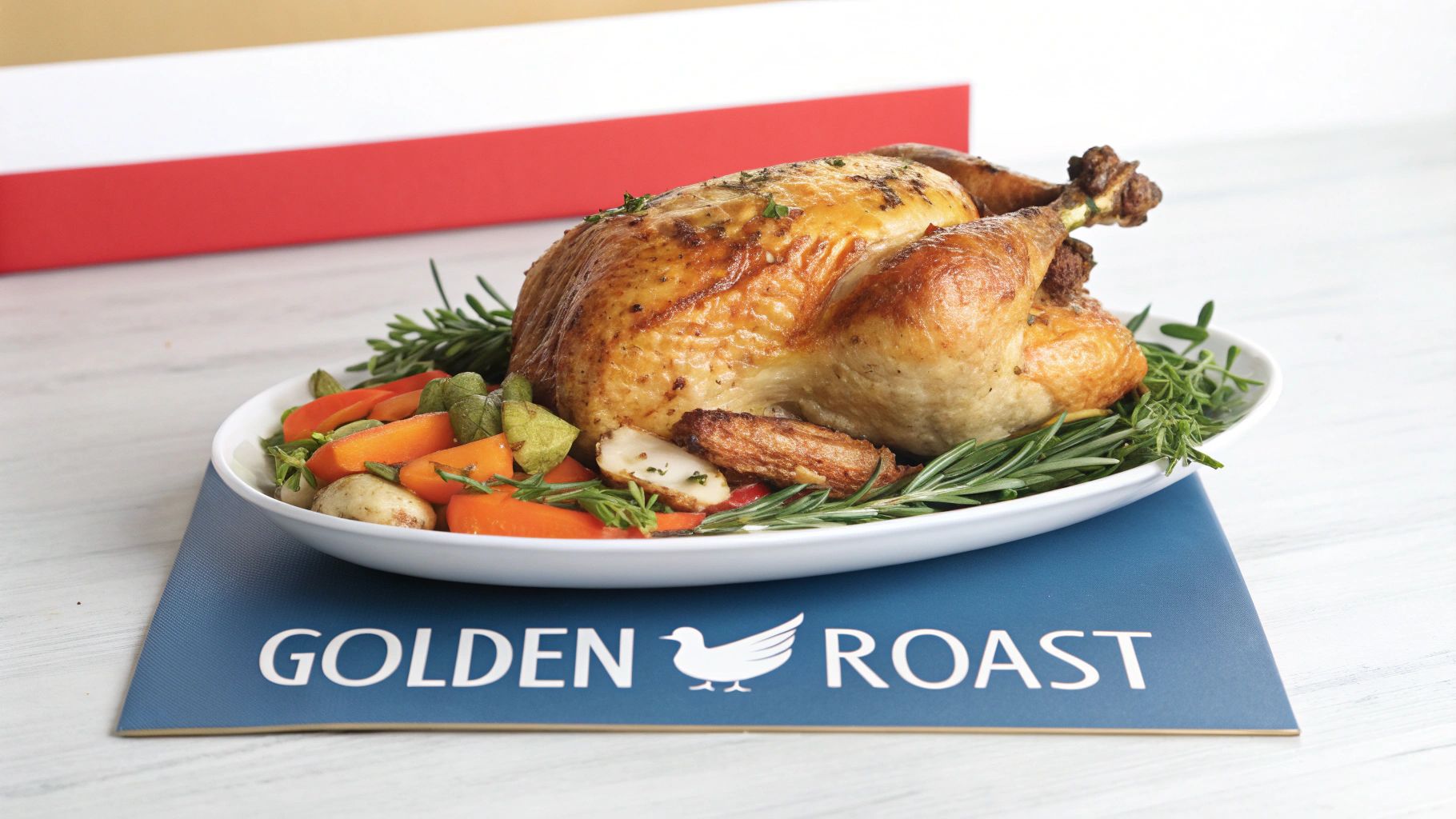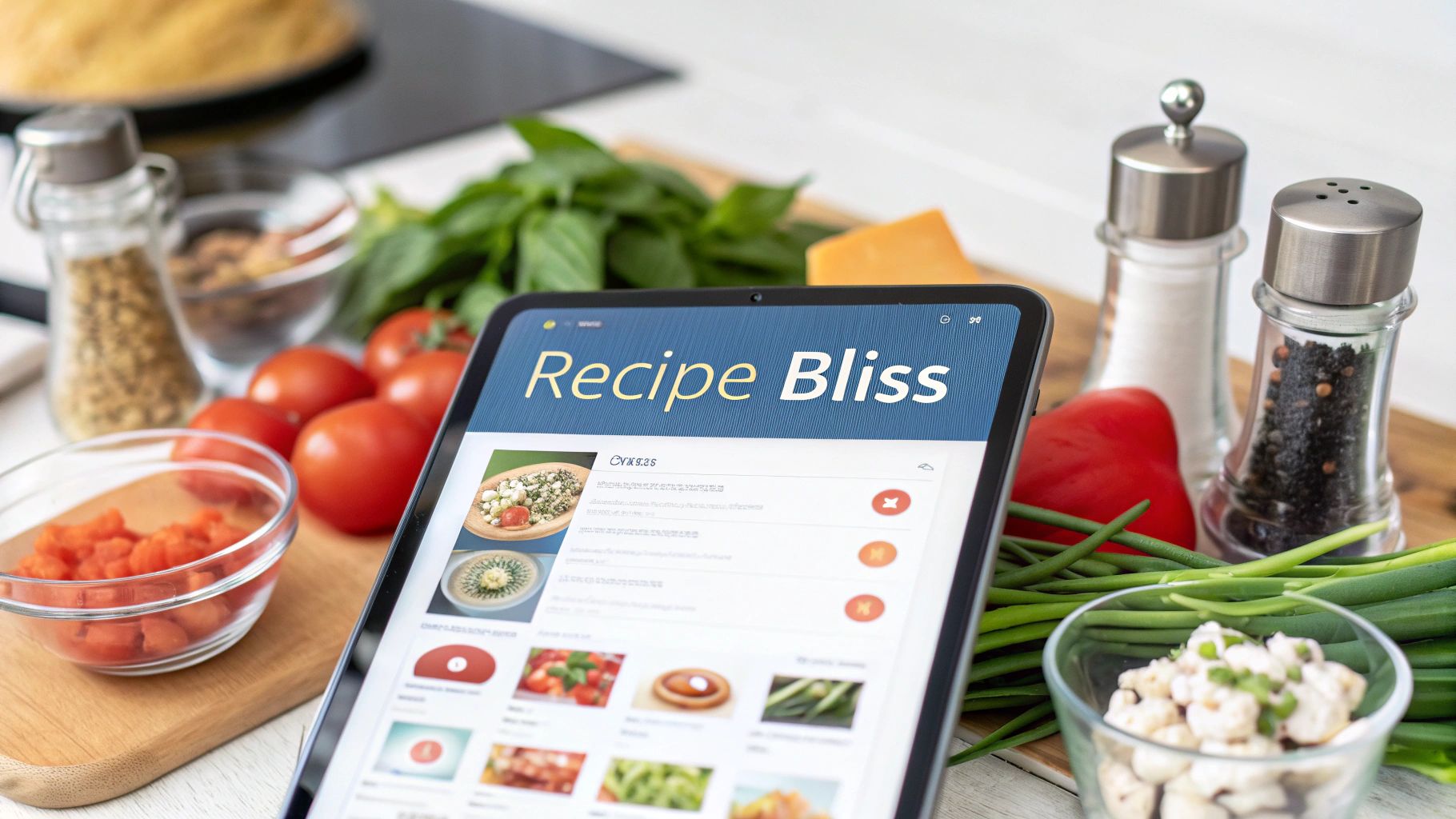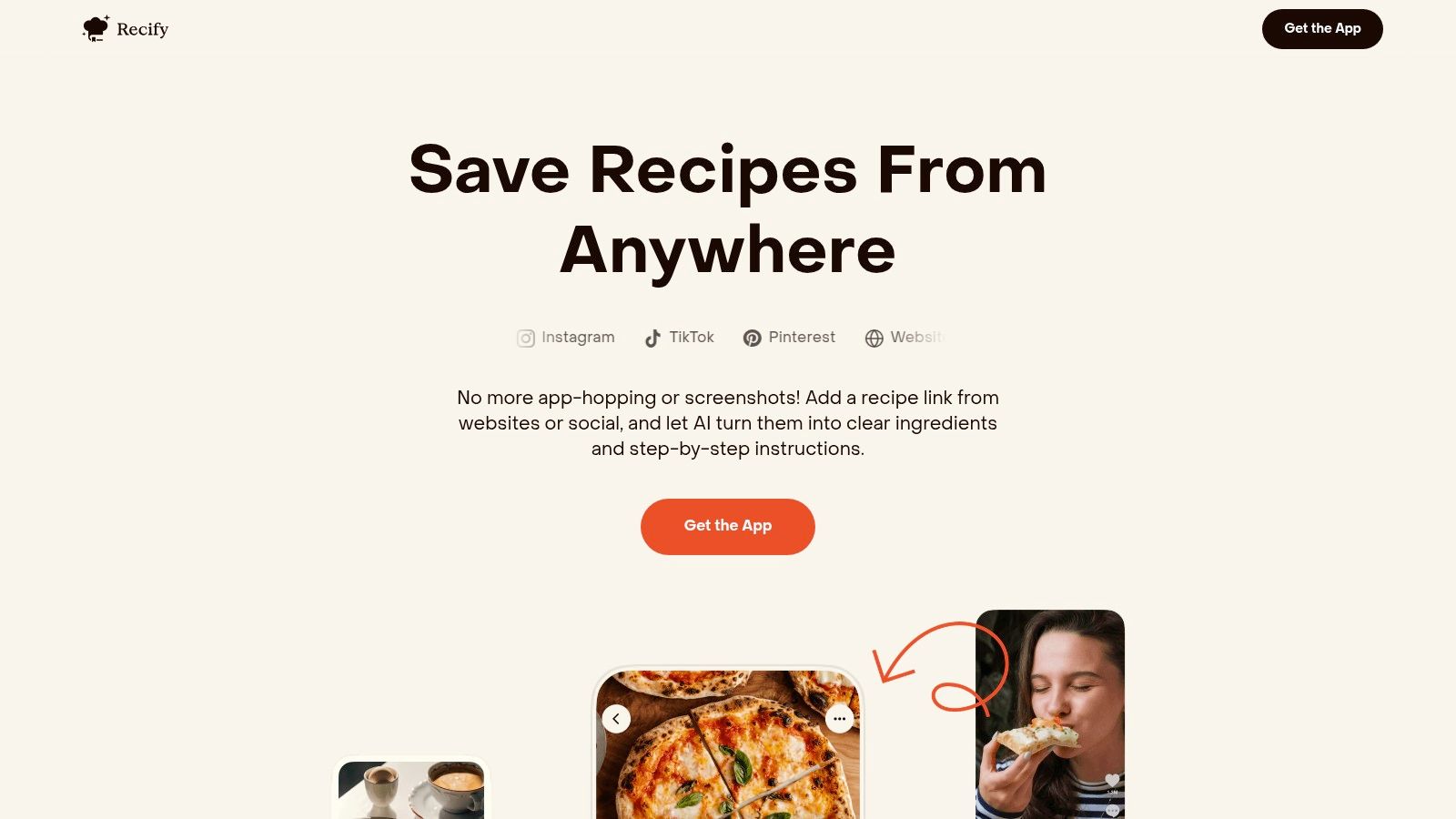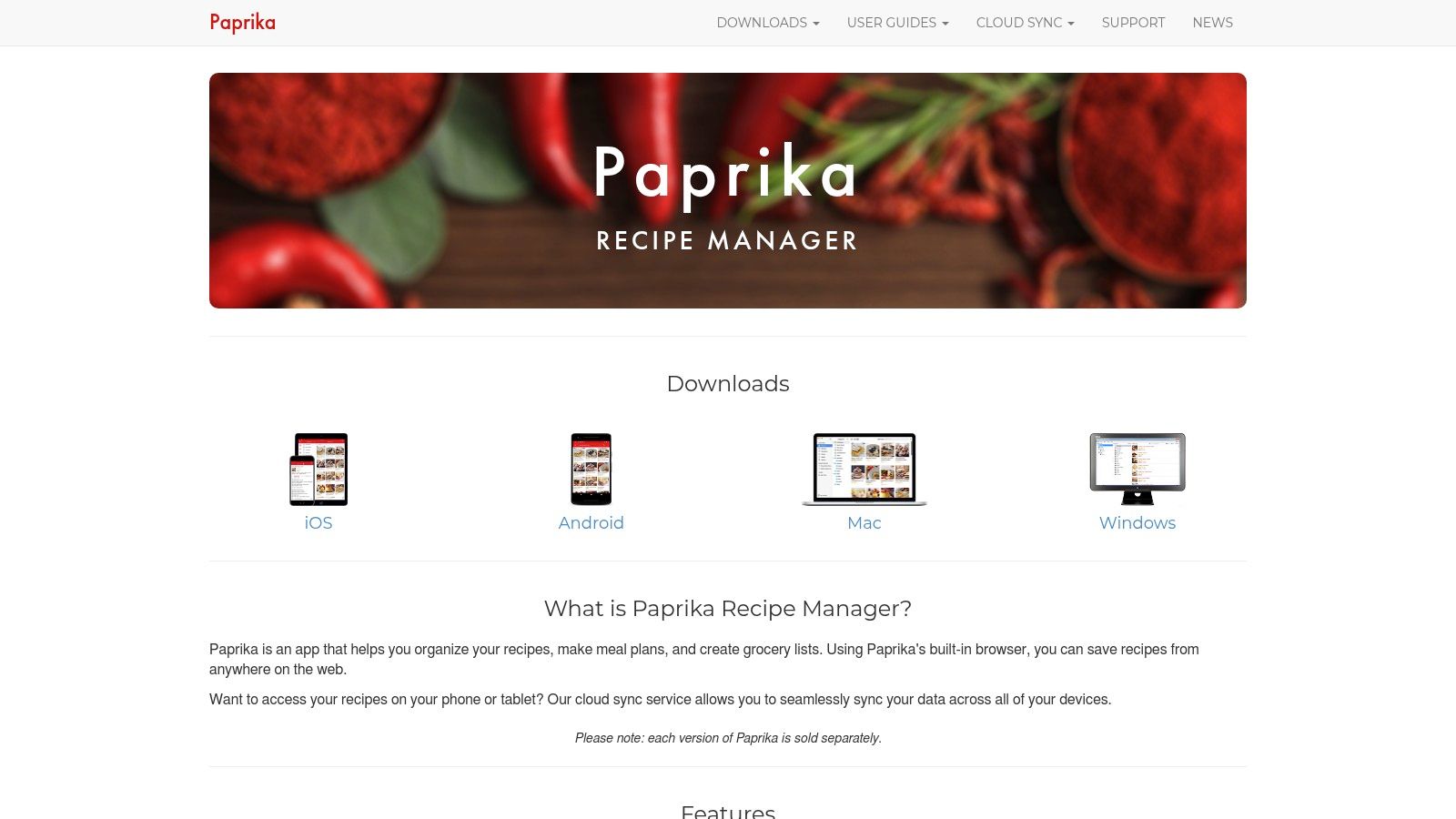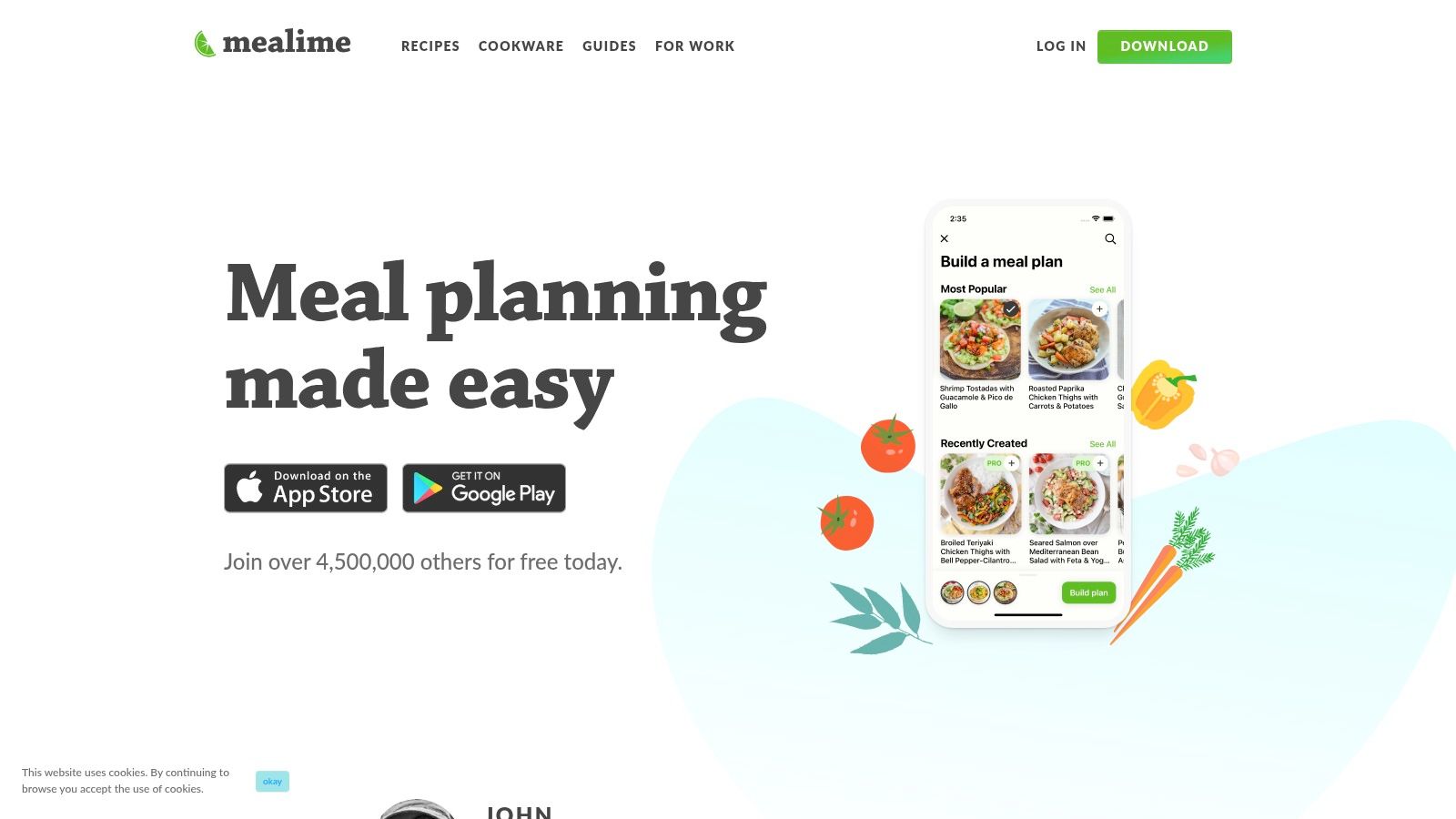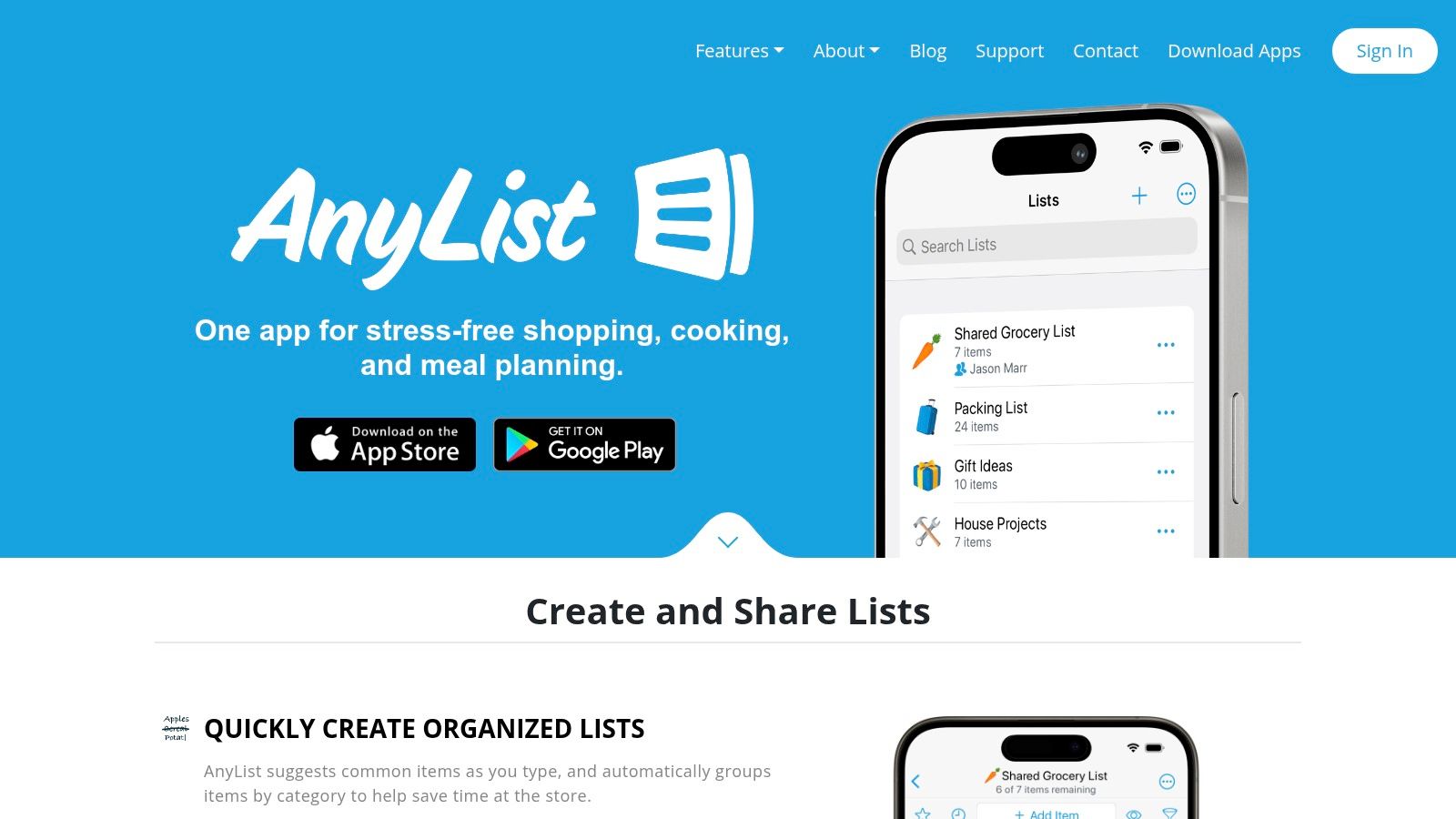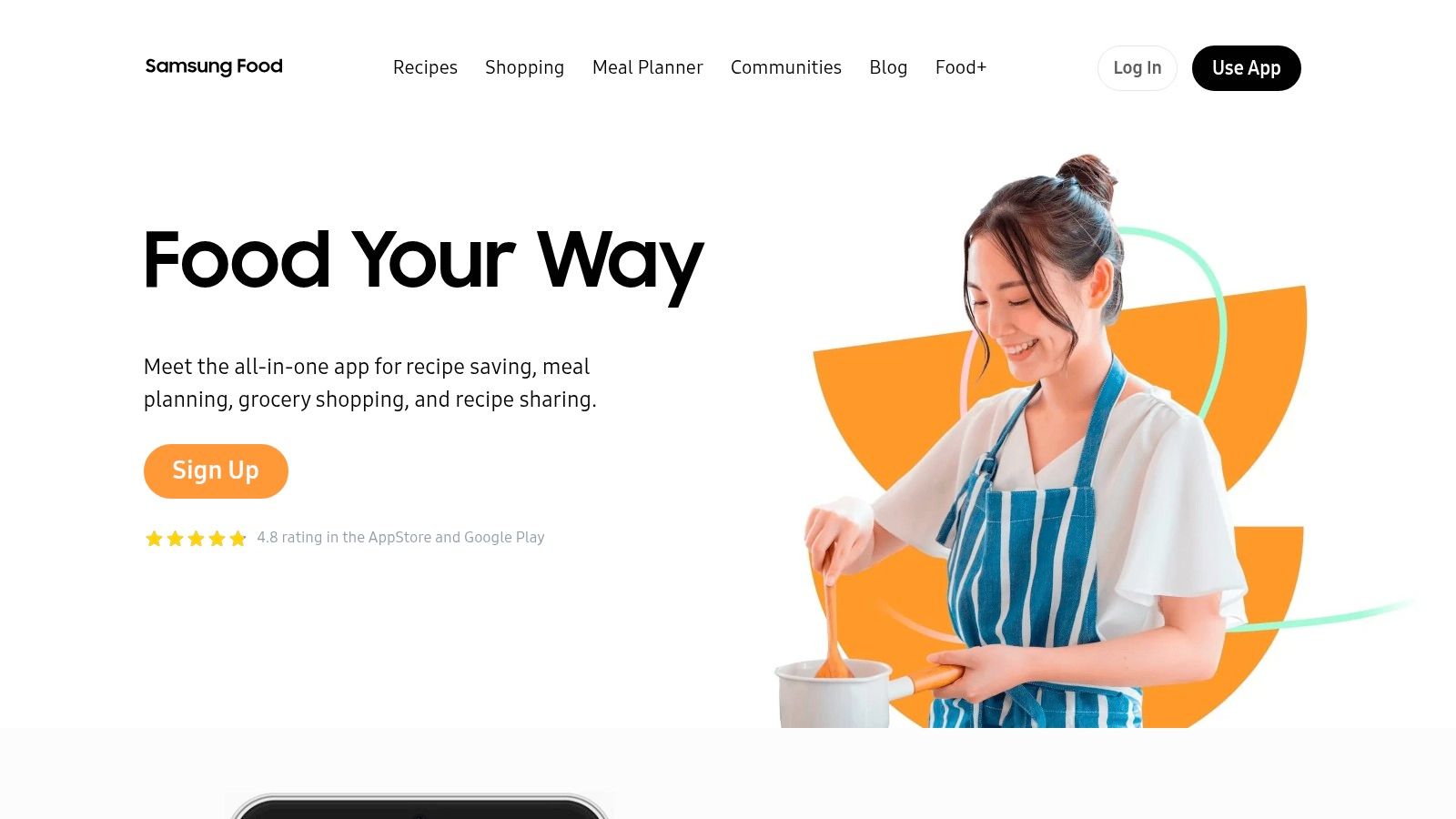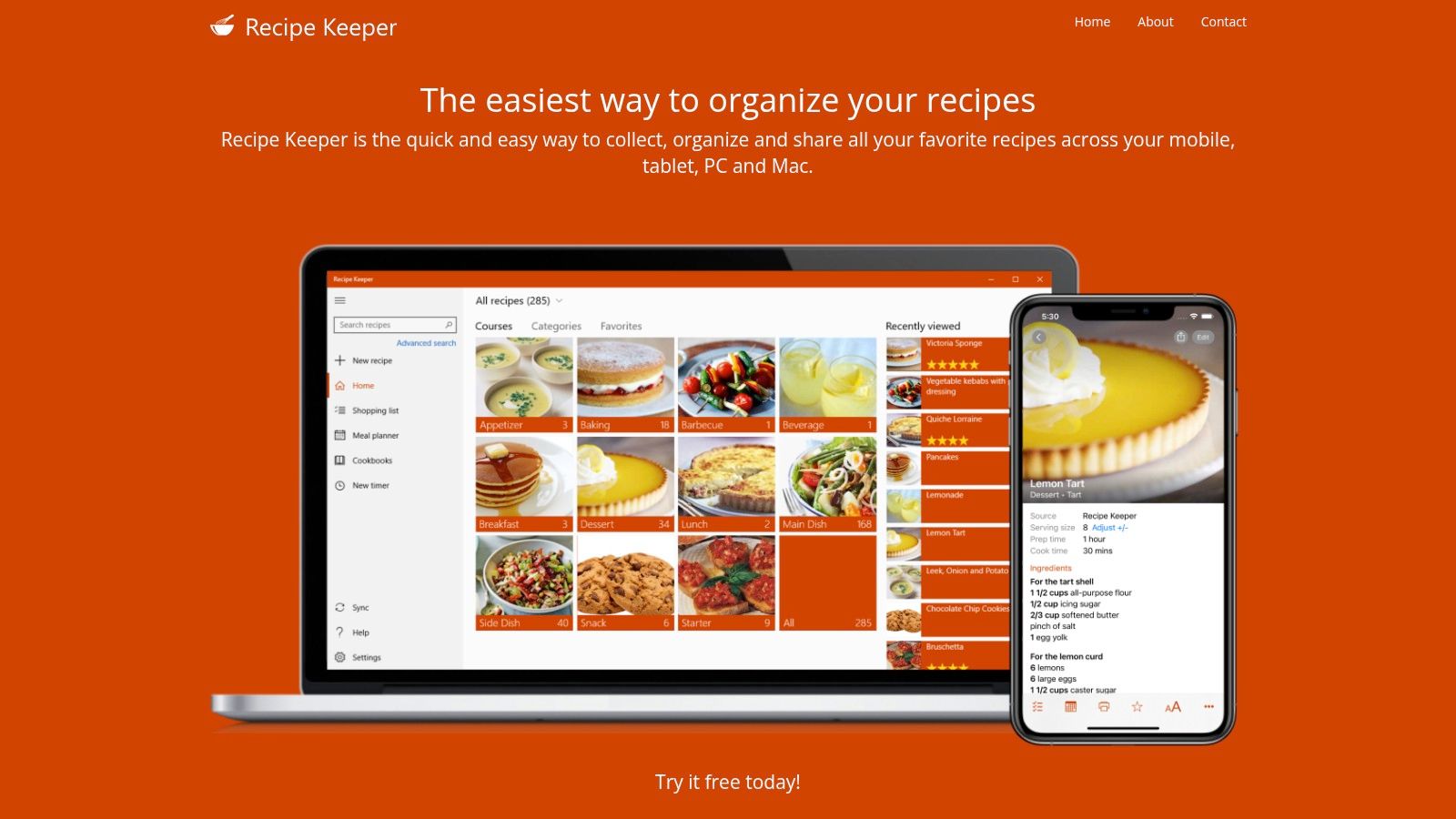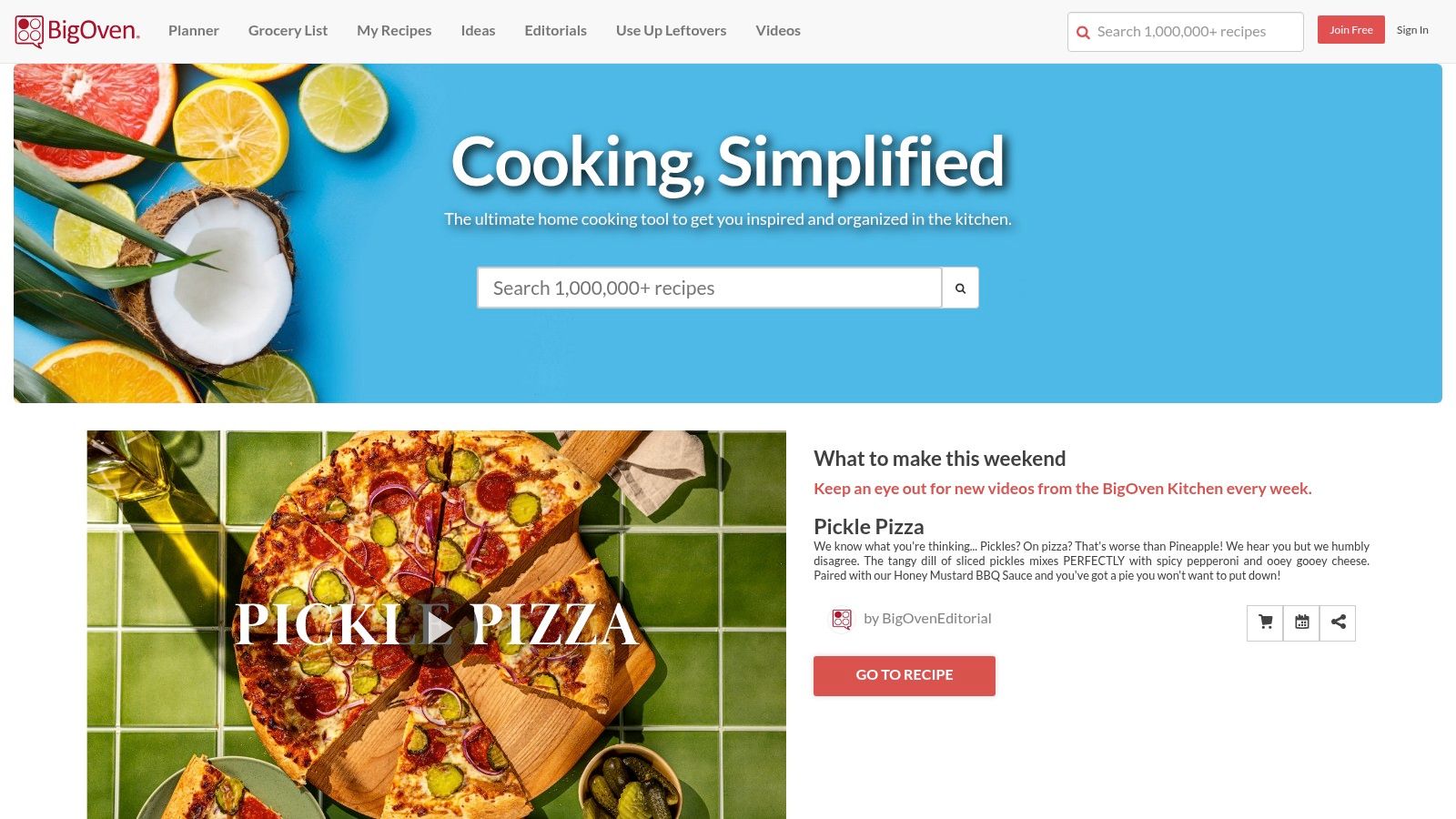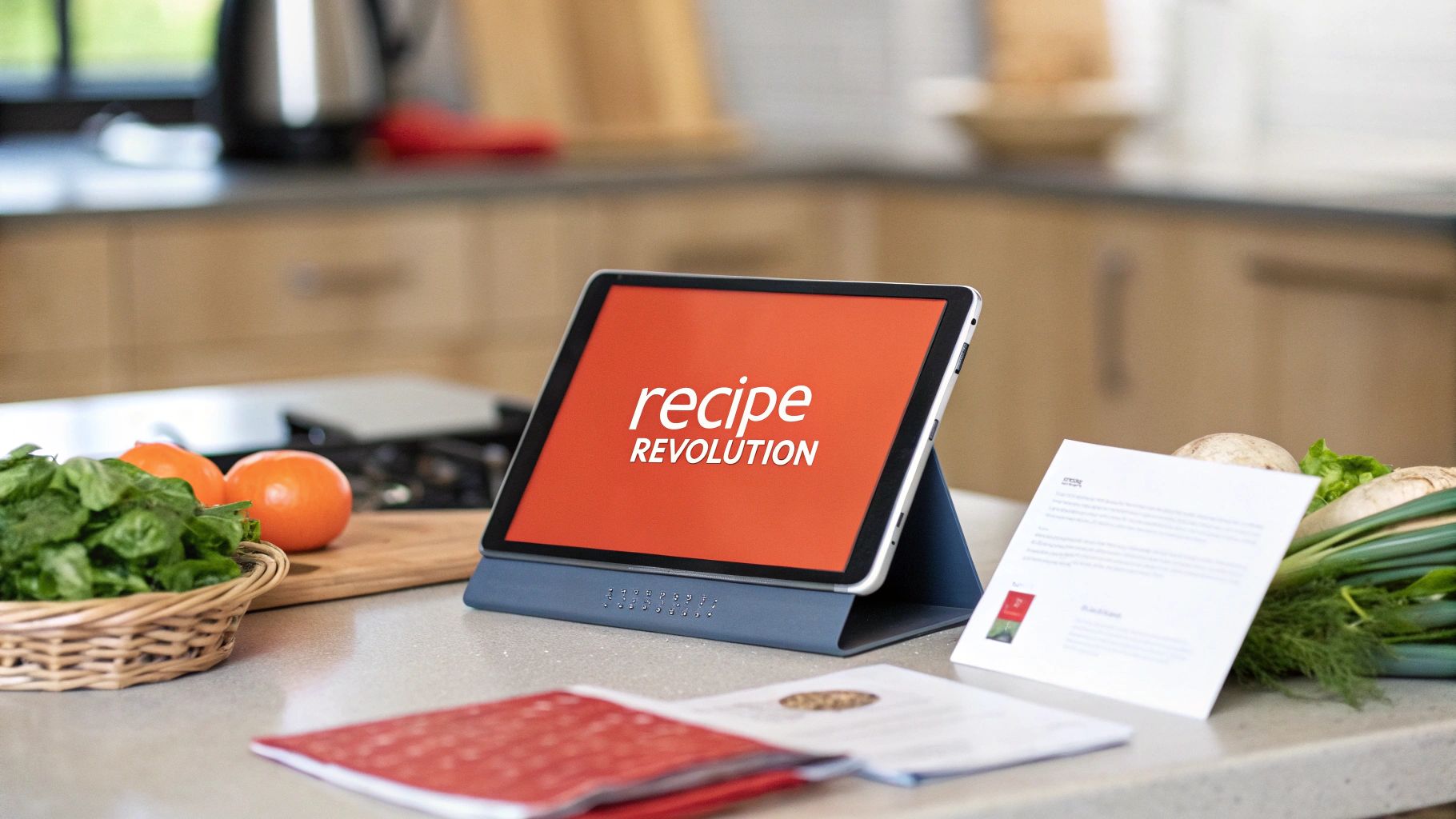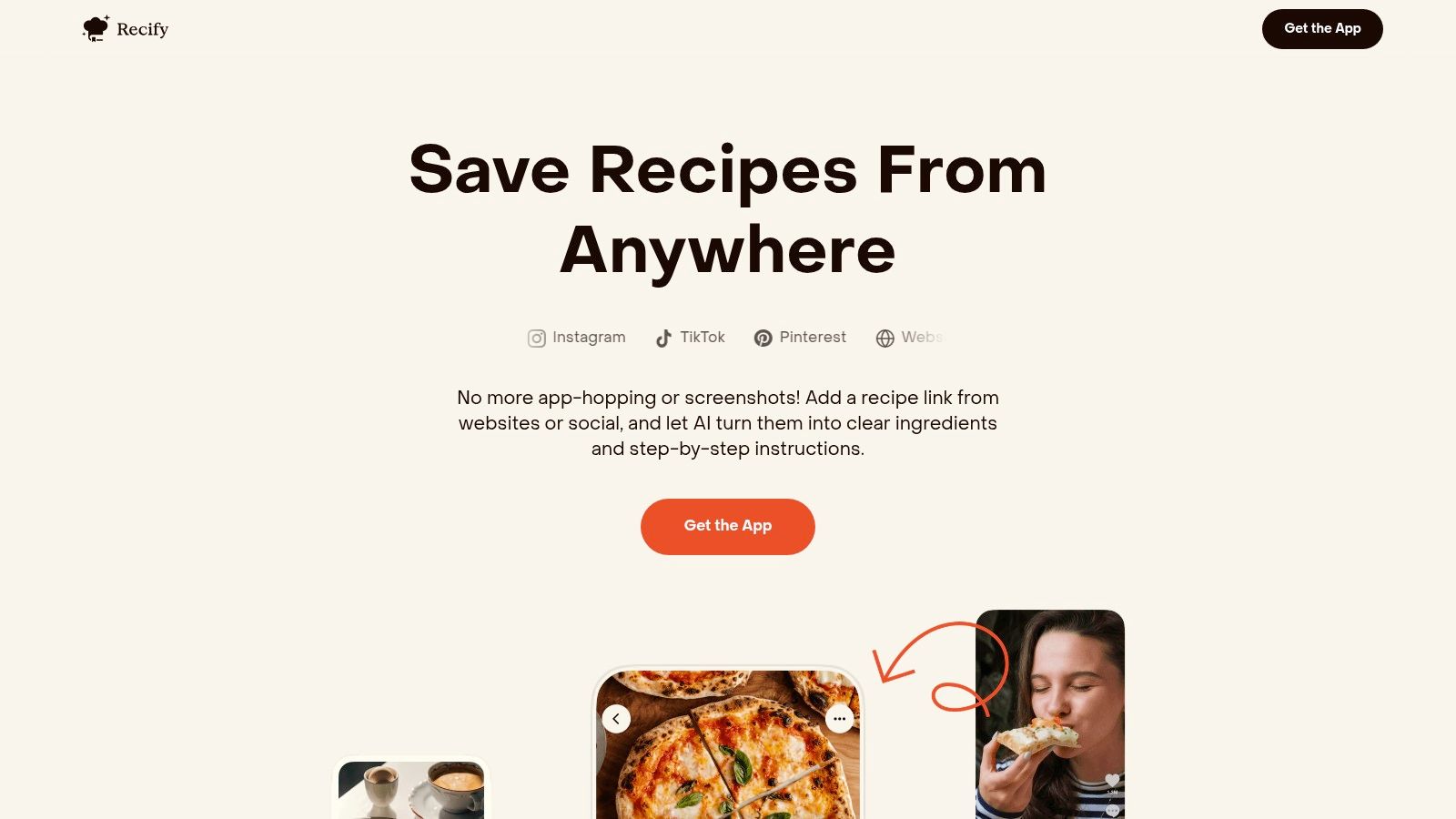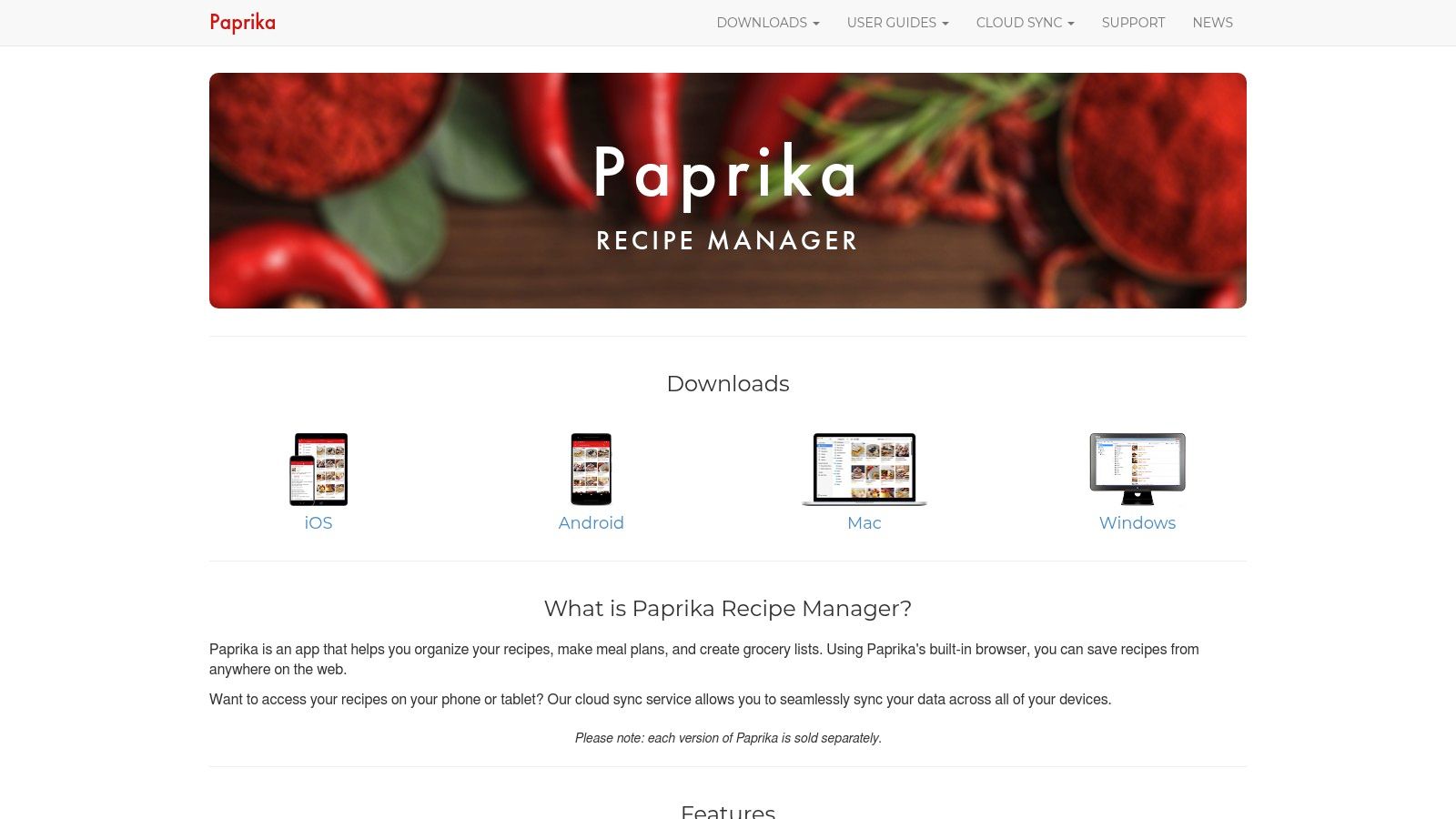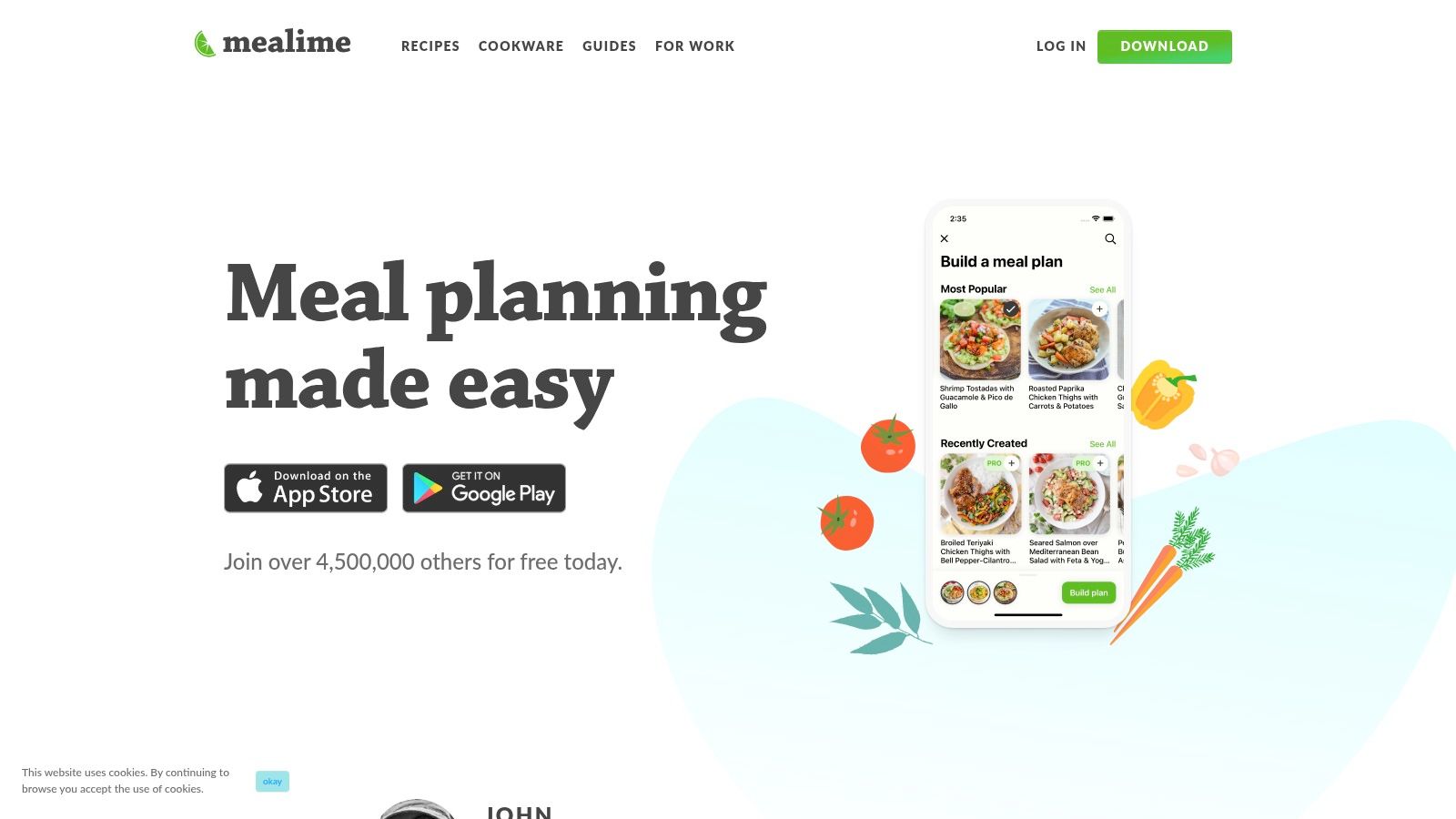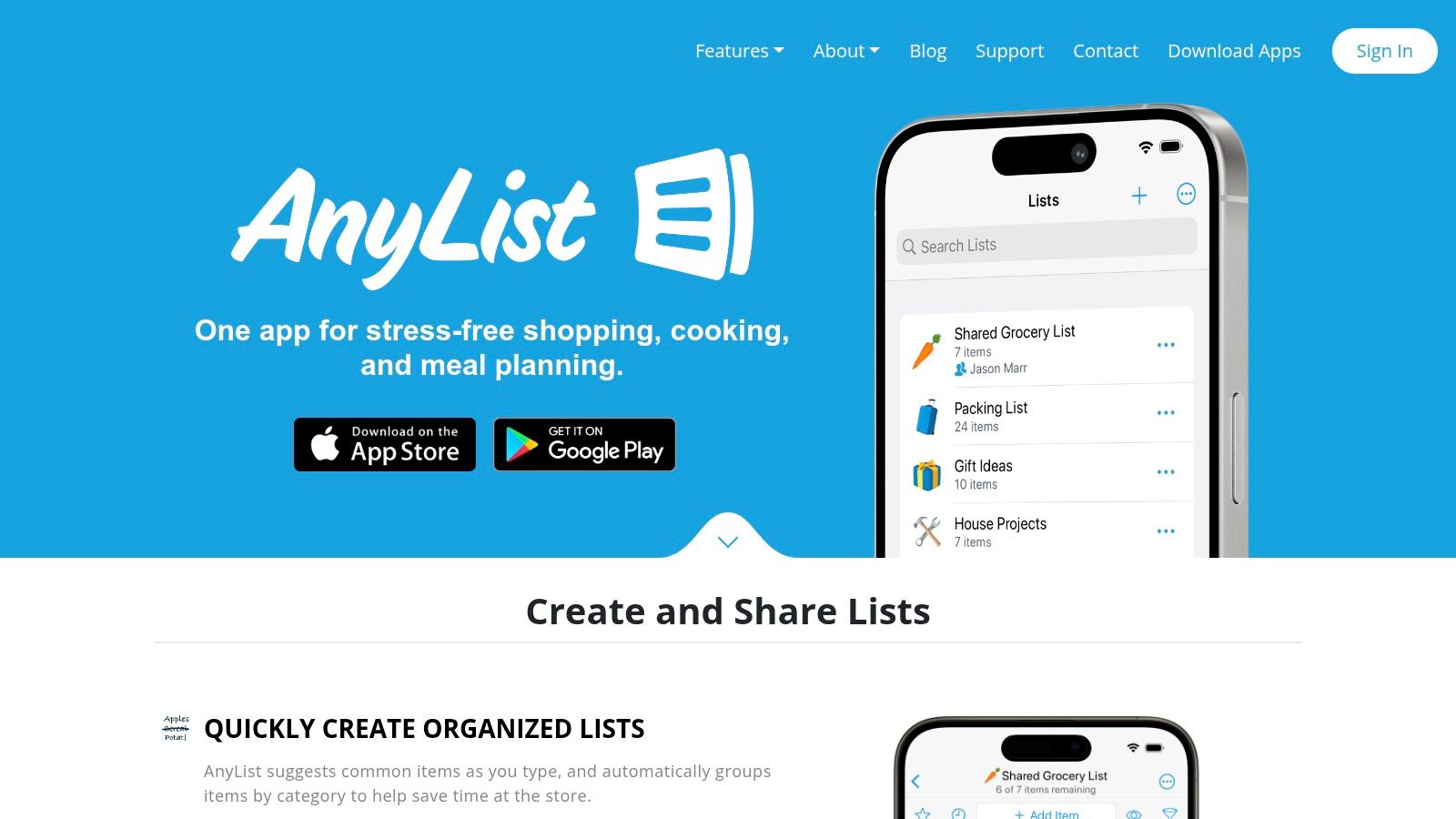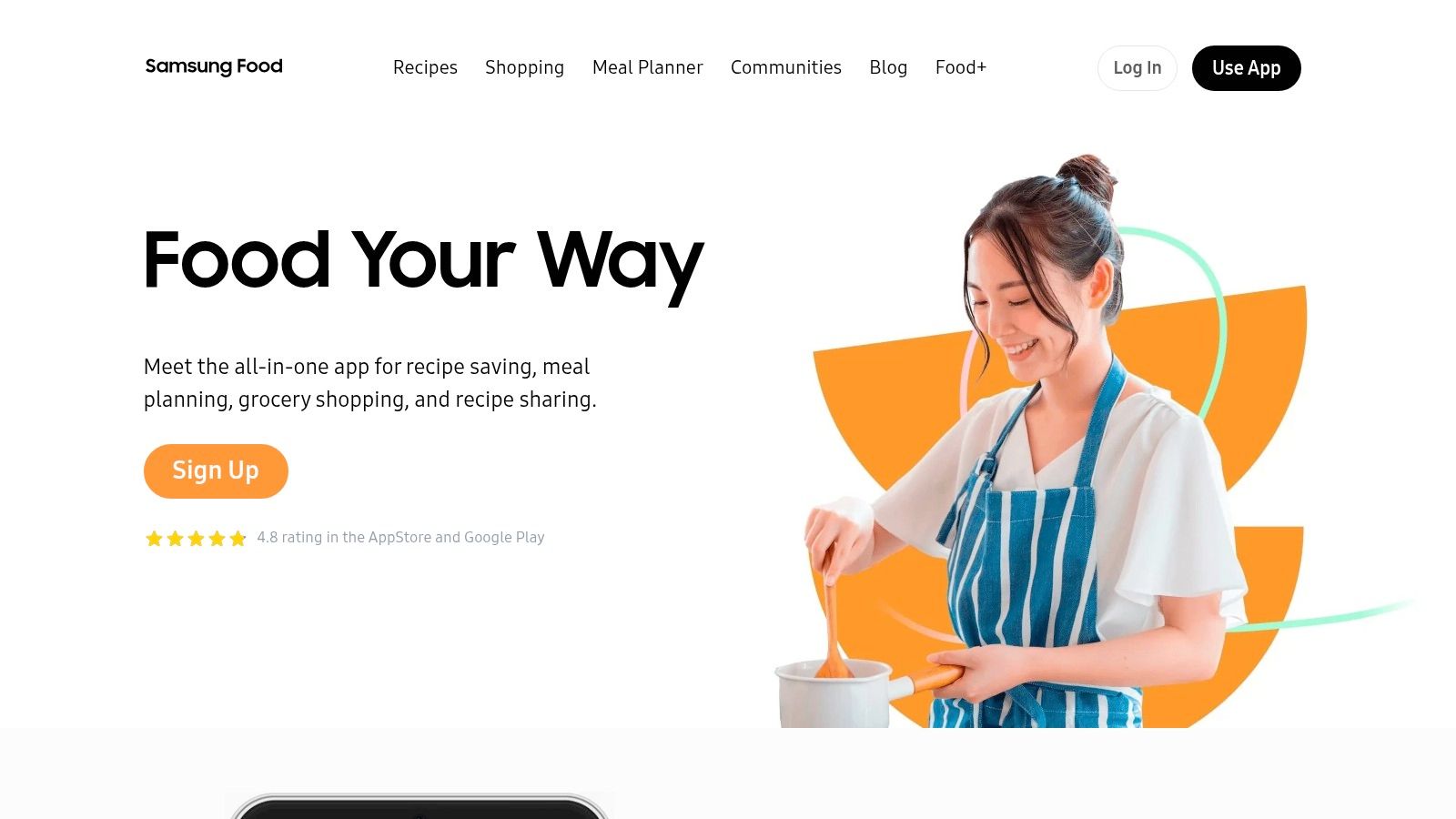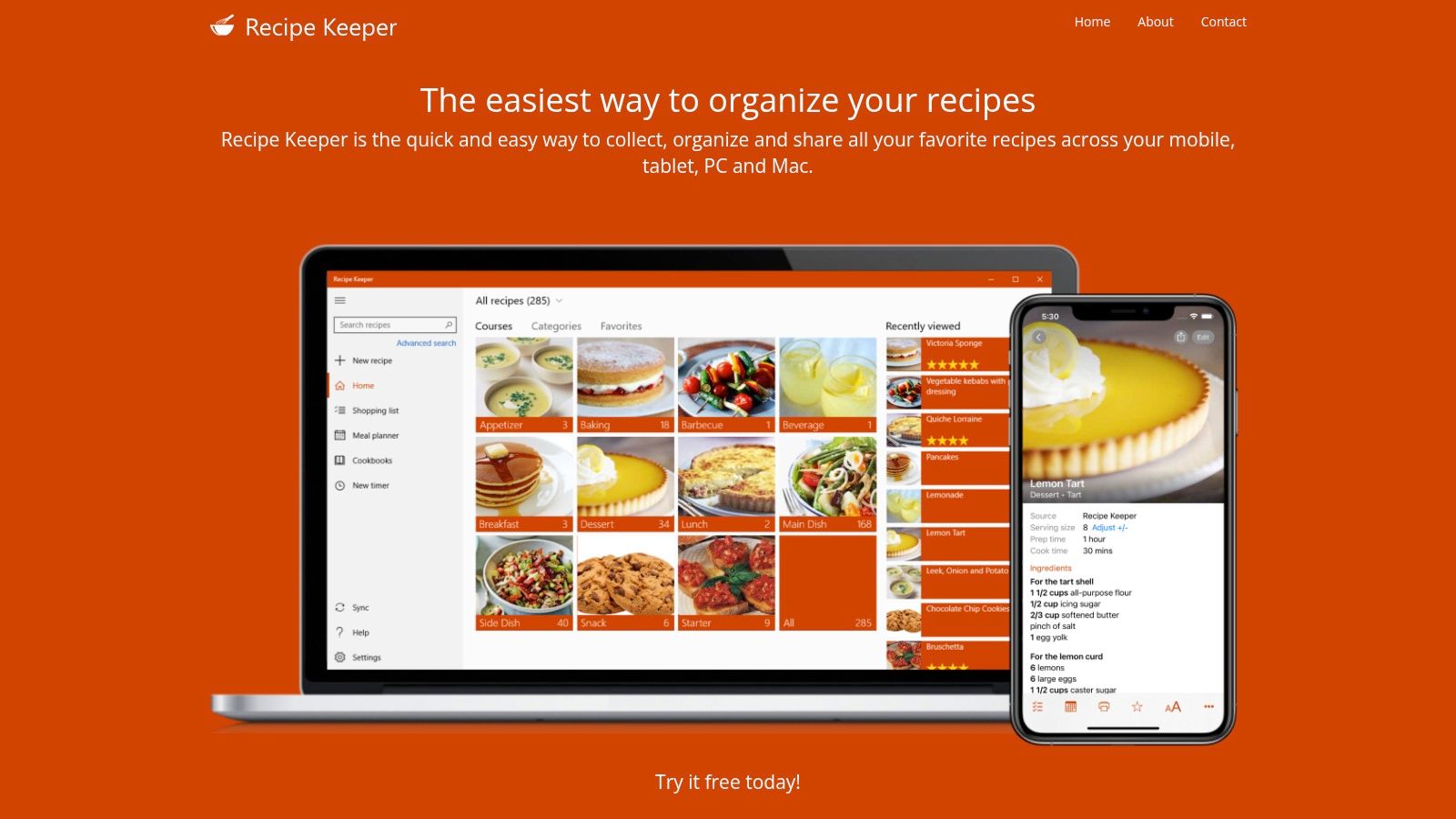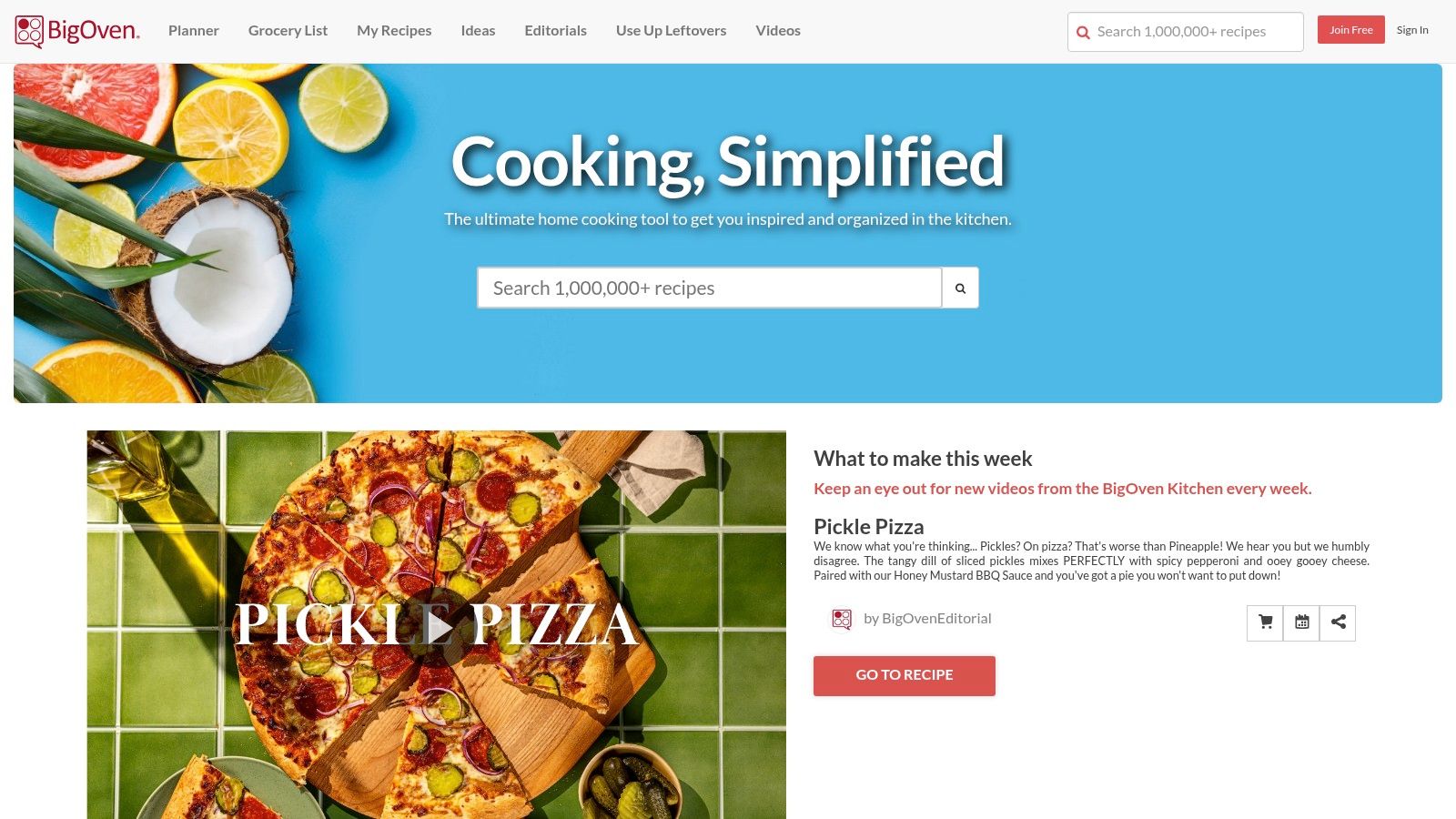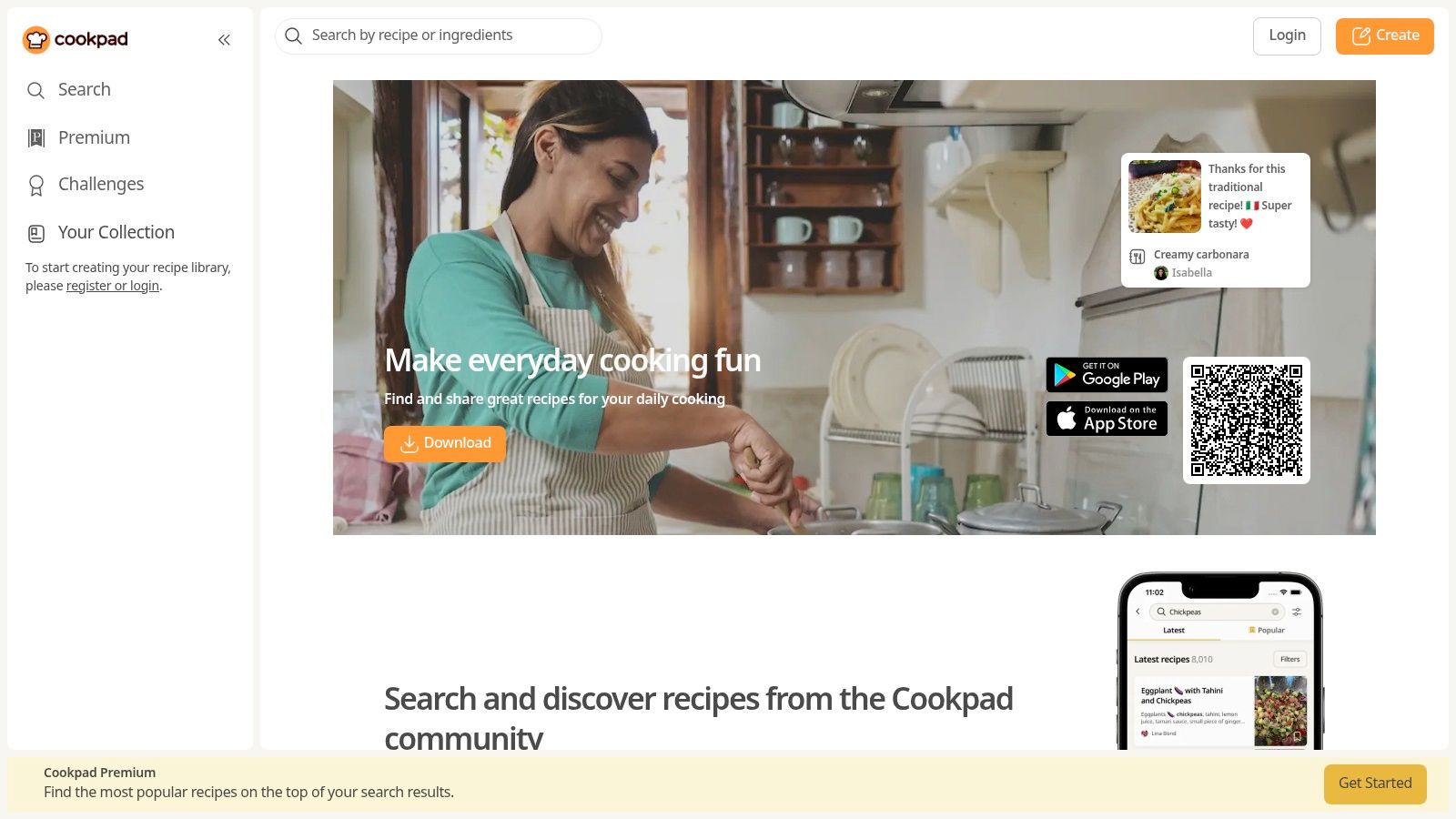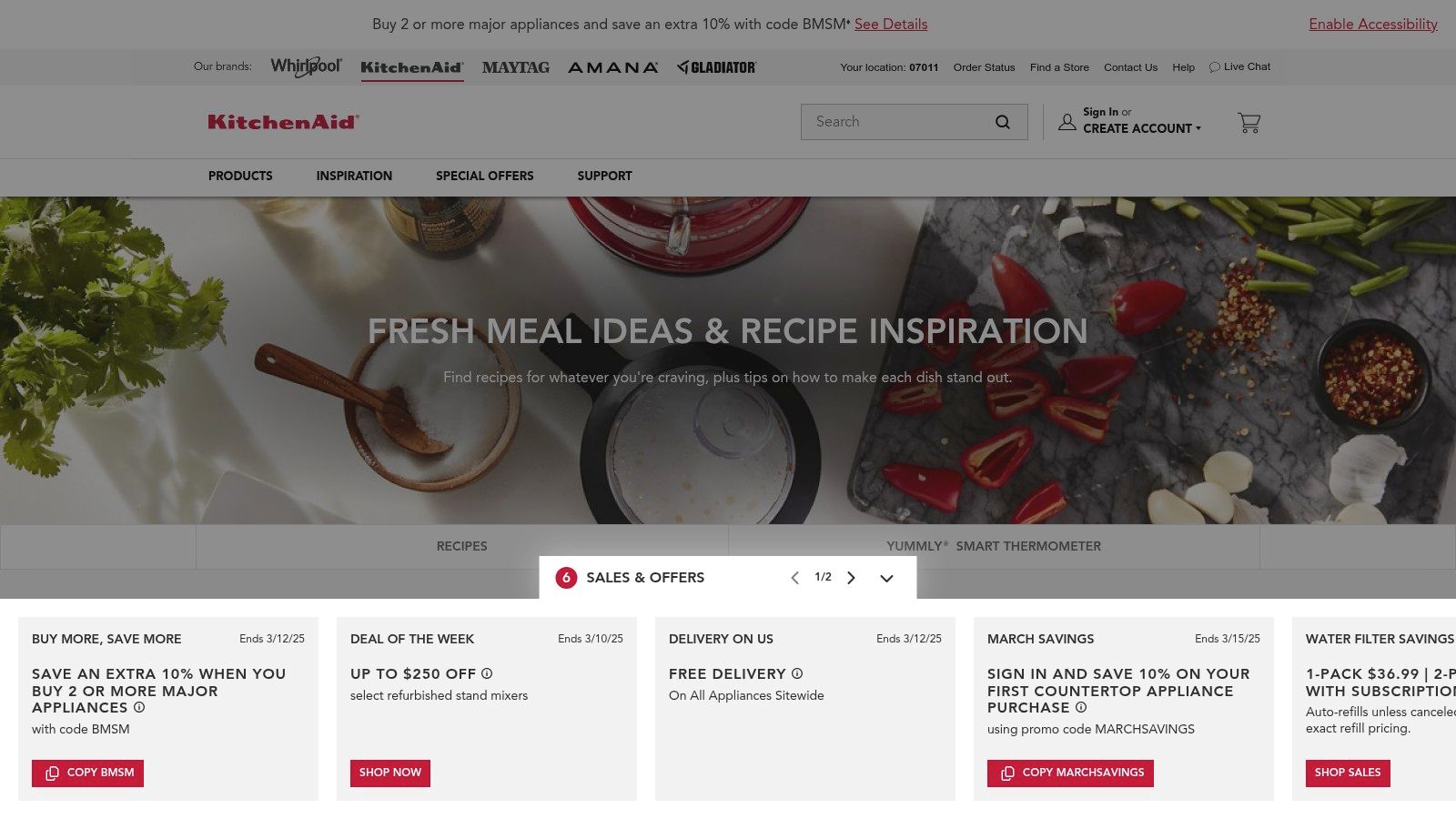Tame Your Digital Chaos: Simple Tips for a Stress-Free 2025
Is your digital life overflowing? Are you drowning in recipe PDFs, cooking videos, food blog bookmarks, and a constant stream of social media notifications? You're not alone. Maintaining digital organization is essential, especially for passionate food lovers.
Remember those overflowing recipe boxes and stained cookbooks? We've transitioned to digital, but the clutter has followed. Our methods for managing digital information have changed drastically, from saving files on hard drives to using cloud-based solutions.
What makes a modern approach effective? It's about creating systems that aren't just for storage, but are also active tools supporting your culinary creativity. This means seamlessly finding that perfect pasta sauce recipe, whether it's saved on your phone, in your email, or bookmarked from your favorite food blogger.
This article explores 10 practical digital organization tips to help you regain control of your digital culinary world. Learn strategies to streamline your recipe collection, manage your inbox, and conquer the digital clutter that steals your time and energy.
Get ready to discover a calmer, more organized, and ultimately more enjoyable digital cooking experience for 2025 and beyond.
1. Digital File Naming Conventions
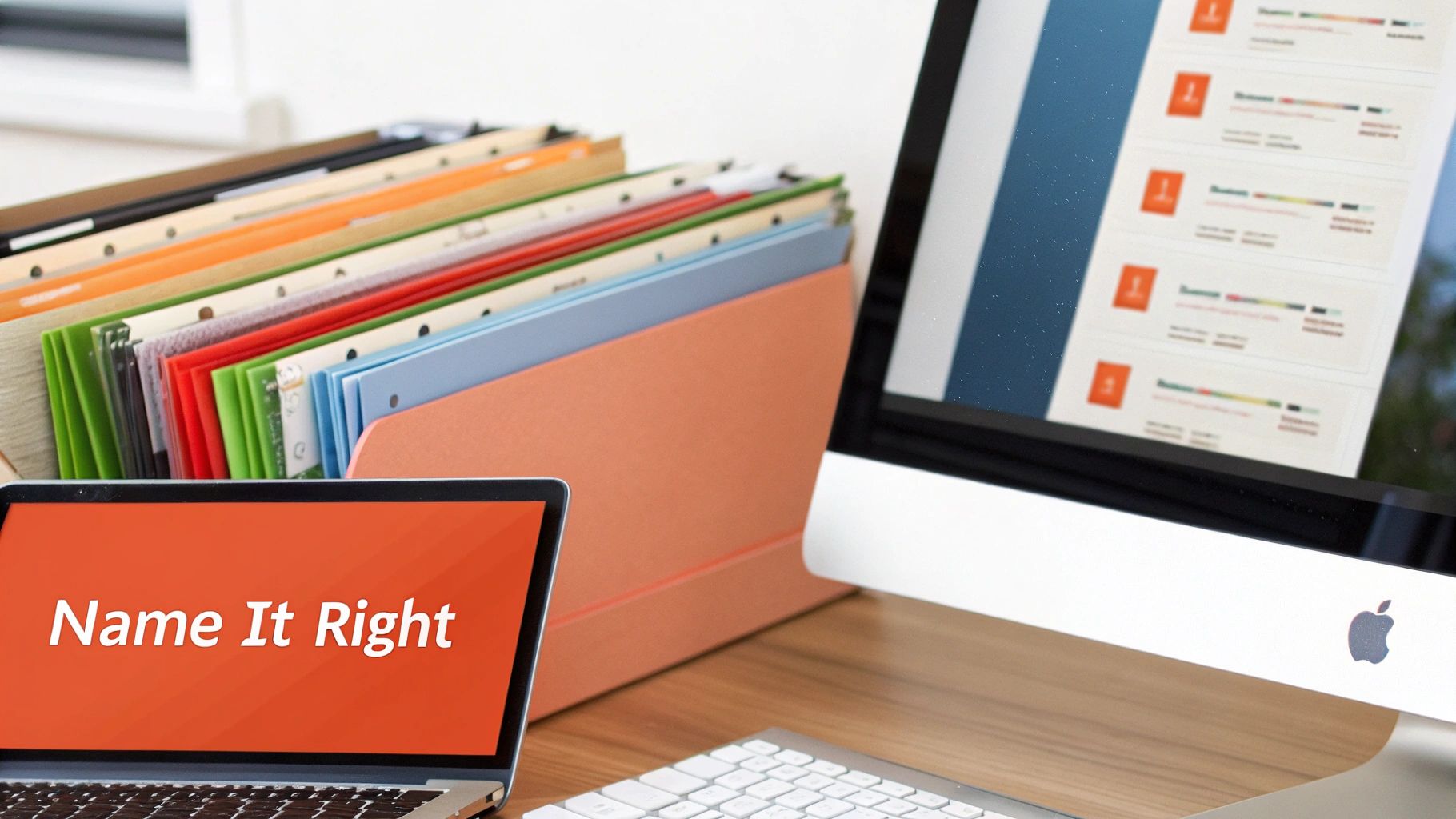
A cornerstone of digital organization is establishing clear and consistent file naming conventions. This systematic approach to naming files—from photos and videos to documents and recipes—makes finding them much easier. Imagine effortlessly locating that pasta recipe from last summer or the latest version of your holiday menu. A well-defined system eliminates endless scrolling through cluttered folders.
Consistent naming conventions allow you to quickly identify key file information at a glance. You can see the content, version, date, and other details without even opening the file. This is achieved by using a standardized format that includes dates (YYYY-MM-DD), version control, categories or project identifiers, and searchable keywords.
For example, instead of "IMG_4857.jpg," use "Pasta-Primavera-2024-06-15-v1.jpg." You instantly know what the photo is, when it was taken, and that it’s the first version.
This meticulous approach offers many benefits. These include improved searchability, less time wasted searching, prevention of duplicates, automatic chronological sorting, and a more professional structure when sharing files. Think of it as a library system for your digital files.
Of course, setting up these conventions takes time, and maintaining consistency requires everyone to follow the system. You might also need to rename existing files. Longer filenames can sometimes be truncated by certain systems.
However, the long-term benefits outweigh the initial effort. Productivity experts like David Allen, author of Getting Things Done (GTD), emphasize the power of structured file naming. Google, with its rigorous internal documentation practices, also highlights the importance of this practice. Information architecture professionals champion this for efficient information management.
Practical Tips for Implementation
- Start with the date in YYYY-MM-DD format: This ensures files are automatically sorted chronologically.
- Use hyphens or underscores instead of spaces: This prevents compatibility problems across different operating systems.
- Keep a documented naming convention guide: This ensures consistency over time and between users.
- Include version numbers for revised documents: Track changes easily and avoid confusion.
- Use batch renaming tools: These tools simplify updating existing files.
Real-world examples include Google’s internal documentation, which often follows [Project]-[Type]-[YYYYMMDD]-[Version]. Microsoft recommends [Department]-[Project]-[Description]-[Date]-[Version]. Academic research papers commonly use [Author]-[Topic]-[Year]-[Version]. You might be interested in: Our guide on a digital recipe organizer. Adopting these strategies will transform your digital life, saving you time and frustration.
2. PARA Method
Tired of digital recipe chaos? Sifting through countless screenshots, bookmarks, and scattered emails for that perfect pasta dish? The PARA Method might just be the organizational solution your digital kitchen needs. Developed by Tiago Forte as part of his "Building a Second Brain" methodology, it offers a refreshing approach to managing your digital recipes and so much more.
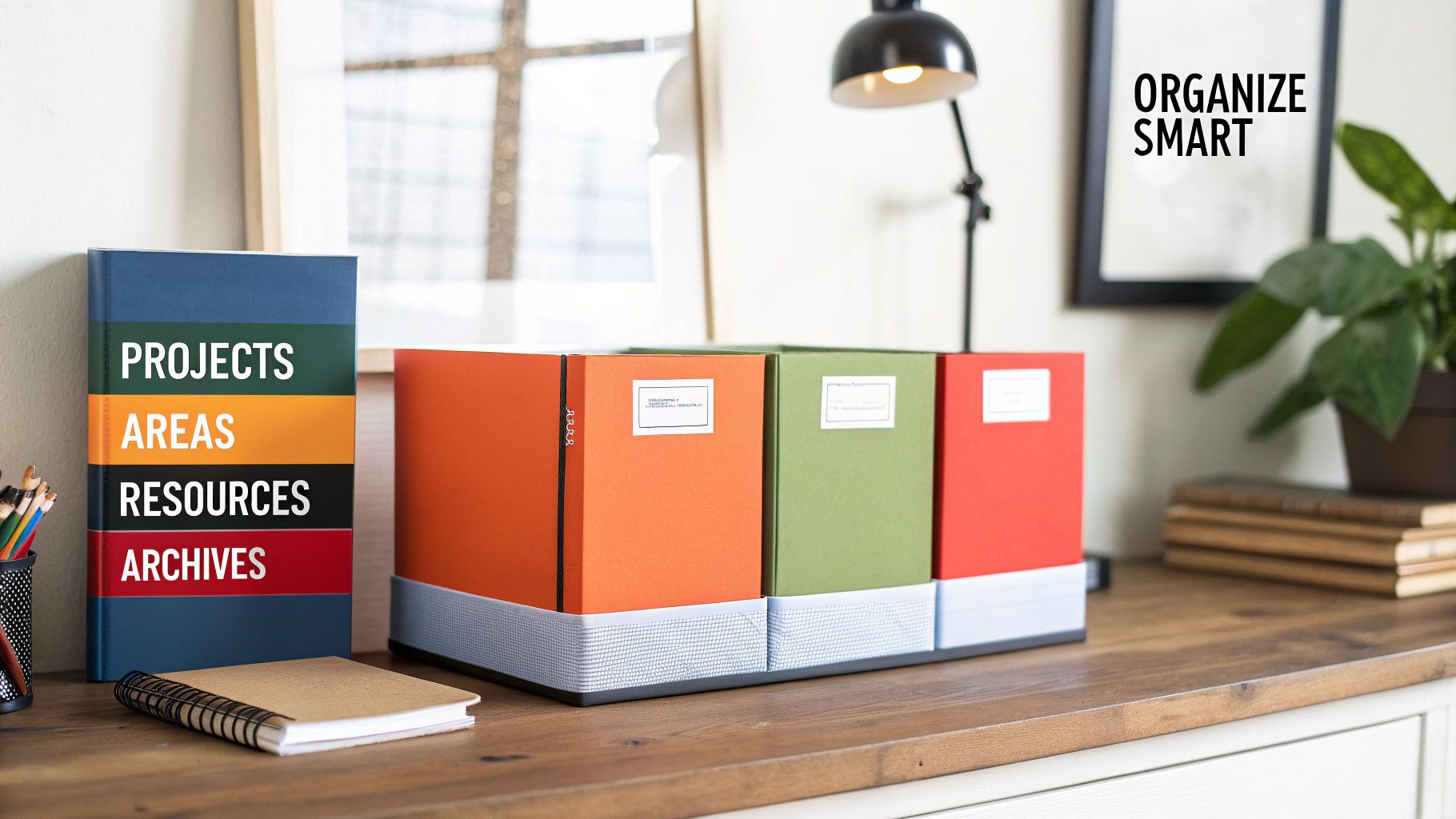
Instead of organizing by file type (PDFs, images, links), PARA organizes by actionability and relevance, using four key categories:
-
Projects: Short-term endeavors with a specific outcome. Think "Meal Prep for the Week" or "Thanksgiving Dinner." Each project would contain all related recipes, shopping lists, and cooking notes.
-
Areas: Ongoing responsibilities or areas of focus. "Healthy Eating," "Baking," or "Cuisine Exploration" could be areas holding recipes, resources, and inspiration related to those topics. This is where your go-to weeknight dinner recipes might reside.
-
Resources: Topic-based collections of information. "Vegan Recipes," "Bread Making Techniques," or "Cocktail Recipes" would fall under this category. These are your general reference points.
-
Archives: Inactive projects and materials no longer relevant to current endeavors. Completed projects like "Christmas 2022 Menu" or resources you no longer use can be moved here, freeing up space in your active areas.
Why PARA Deserves a Spot on This List
PARA’s strength lies in its universality. It works seamlessly across any platform – from note-taking apps like Evernote and Notion, to cloud storage services like Google Drive and Dropbox, and even your computer's file system. This cross-platform compatibility is a major advantage for home cooks who often save recipes from various sources.
Benefits and Drawbacks
Pros:
- Cross-Platform Harmony: Use PARA across all your devices and apps.
- Action-Oriented: Focuses on what you're actively working on.
- Reduced Decision Fatigue: Clear rules for where things belong.
- Scalability: Works for simple meal planning and large recipe collections.
- Regular Clean-Up: Archiving keeps your digital space tidy.
Cons:
- Initial Setup: Requires time to reorganize existing files.
- Potential Overlap: Some items might seem to fit in multiple categories.
- Ongoing Maintenance: Regular reviews are essential.
Real-World Examples:
- A food blogger using PARA in Notion to manage recipe development, photography, and social media promotion, keeping each project separate but interconnected.
- A home cook using PARA in their file system to organize recipes by cuisine, dietary restrictions, and seasonal dishes.
Tips for Implementation:
- Start Small: Begin with one platform (e.g., your recipe folder) before expanding.
- Consistent Structure: Use the same folder names across all platforms for easy navigation.
- Regular Reviews: Schedule time (monthly or quarterly) to archive completed projects and resources.
- Templates: Create templates for new projects (e.g., "New Recipe Idea") to ensure consistent organization.
- Don't Overthink: If unsure where something belongs, put it where you're most likely to find it.
Popularized by Tiago Forte and embraced by productivity experts like Ali Abdaal and Matt D'Avella, the PARA method offers a robust, adaptable system for conquering digital clutter and bringing order to your culinary world. Give it a try, and experience the joy of a truly organized digital recipe collection.
3. Inbox Zero Methodology
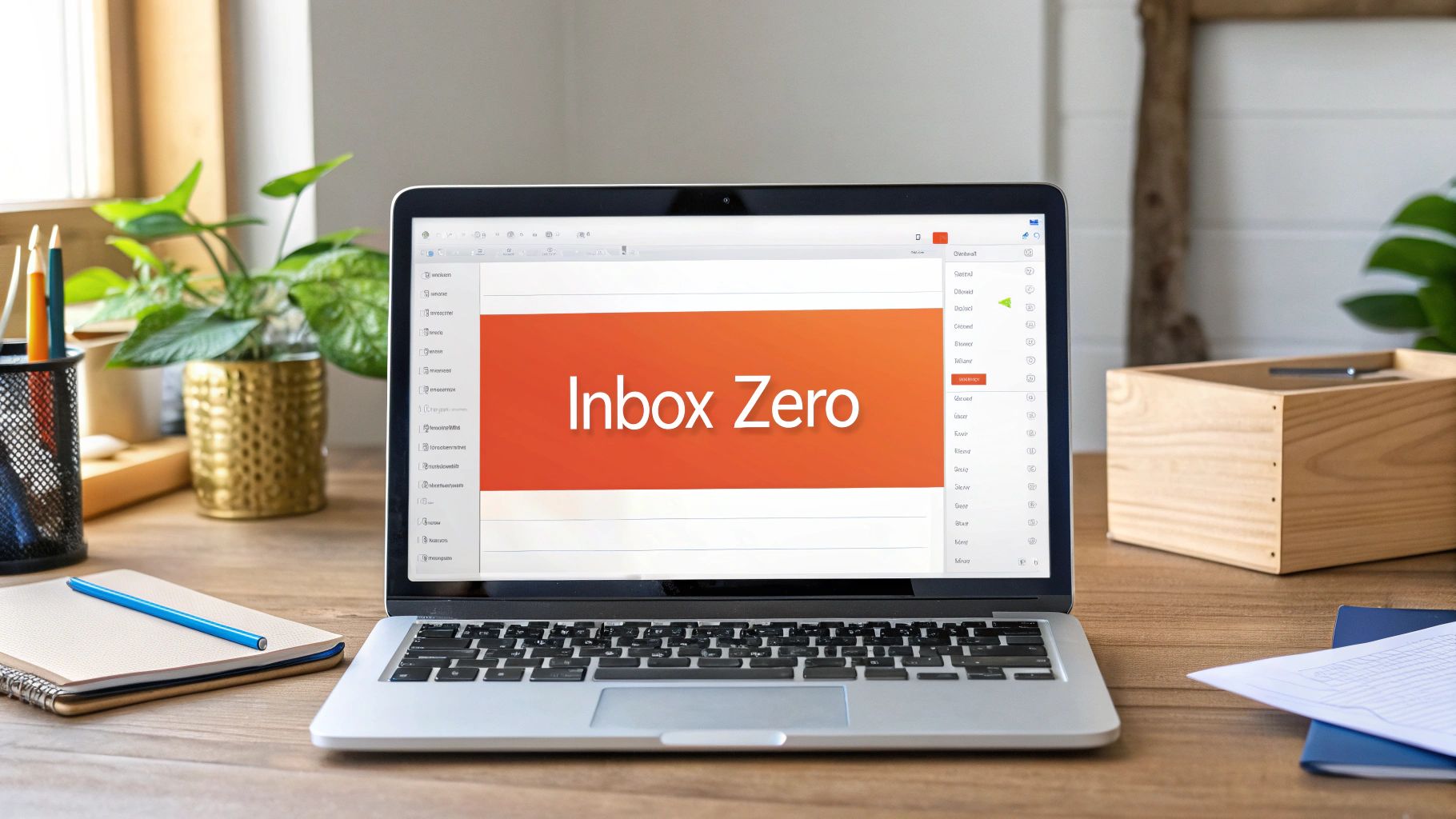
Overwhelmed by emails, newsletters, and social media? You're not alone. It's easy for this digital clutter to creep into other areas of your life, even enjoyable ones like exploring new recipes. The Inbox Zero methodology offers a solution to regain control and focus, not just for email, but for all your digital inboxes. This makes it incredibly helpful for managing multiple online sources for recipes, cooking inspiration, and communication.
Developed by productivity expert Merlin Mann, Inbox Zero isn't about a constantly empty inbox. It's about processing incoming information so it doesn't take over. Your inbox should be a temporary holding area, not permanent storage. The core principle is making quick decisions about each item.
- Delete: Remove anything irrelevant.
- Delegate: Forward tasks to the right person.
- Respond: Reply if it takes under two minutes.
- Defer: Schedule time for complex tasks.
- Do: Tackle quick tasks immediately.
This decisive action, combined with scheduled processing times and organized folders, transforms your inbox from stressful to useful.
Why Inbox Zero Matters for Recipe Enthusiasts
Imagine collecting recipes from emails, social media, and website notifications. Without a system, these digital gems get lost. Inbox Zero helps you categorize, save, and access those recipes when you need them.
The Rise of Inbox Zero and Deep Work
Mann popularized this methodology through his blog, 43 Folders, resonating with those seeking to tame their digital lives. Figures like Google's former CEO Eric Schmidt and productivity guru Tim Ferriss have reportedly embraced similar principles, boosting its popularity. The concept aligns with Cal Newport's "Deep Work" philosophy, emphasizing focus and minimizing distractions. Even companies like Basecamp have implemented company-wide email protocols inspired by these principles.
Pros and Cons of Inbox Zero
Pros:
- Reduces digital overwhelm and anxiety
- Prevents lost messages (like recipe links!)
- Improves response time
- Creates mental clarity
- Establishes sustainable digital habits
Cons:
- Can be time-consuming if overused
- Requires discipline
- May pressure immediate responses
- Challenging for high-volume inboxes
Practical Tips for Implementing Inbox Zero
- Scheduled Processing: Set daily times (e.g., morning, afternoon) to process your inbox.
- Two-Minute Rule: Act immediately on anything taking less than two minutes.
- Template Responses: Create templates for common replies.
- Unsubscribe: Regularly unsubscribe from unwanted newsletters and notifications.
- Filters and Rules: Use filters to automatically sort messages into folders (e.g., "Recipes," "Cooking Inspiration").
By using Inbox Zero, you regain control over your digital life, creating a more organized experience, even for something as enjoyable as collecting recipes.
4. Digital Minimalism
Feeling overwhelmed by overflowing recipe folders, constant cooking notifications, and endless food blogs? Digital minimalism might be the answer. It's not about giving up technology entirely. Instead, it’s about being more intentional with how you use it. Focus on the digital tools and content that truly add value to your culinary journey and minimize distracting time-wasters.
Digital minimalism prioritizes quality over quantity. Imagine a curated collection of your favorite recipe sources, easily accessible and clutter-free. Instead of passively scrolling, you actively engage with inspiring content.
Why It Matters for Home Cooks
The digital world offers a wealth of recipes, inspiration, and connection for passionate cooks. However, it’s easy to get lost. Digital minimalism helps you reclaim control over your digital kitchen, allowing you to:
-
Focus on what truly inspires you: Curate a few recipe apps that align with your cooking style and dietary needs instead of being bogged down by countless options.
-
Reduce decision fatigue: A streamlined digital space makes choosing what to cook easier, eliminating the overwhelm of endless choices.
-
Enjoy cooking more: Minimize distractions and be more present in the kitchen, savoring the process of creating delicious meals.
Features of Digital Minimalism
-
Intentional Technology Selection and Use: Choose tools that serve your culinary goals.
-
Regular Digital Decluttering: Periodically review and remove unused apps, files, and bookmarks.
-
Focus on High-Value Digital Activities: Prioritize using technology for activities that enhance your cooking, like learning new techniques or connecting with other food enthusiasts.
-
Reduction of Attention-Grabbing Notifications: Disable non-essential notifications from recipe apps and social media.
-
Creation of Technology Usage Rules and Boundaries: Set specific times for checking food blogs or social media to prevent it from taking over your day.
Pros & Cons
Pros:
- Reduced digital overwhelm and information anxiety
- Improved focus and attention
- More intentional relationship with technology
- Saved time by eliminating low-value digital activities
- Improved mental wellbeing
Cons:
- May initially feel like missing out on food trends
- Can be challenging if your work requires constant online presence
- Requires ongoing assessment of your digital needs
Real-World Examples
Think of applying Marie Kondo's principles to your digital pantry. Just as you declutter your physical kitchen, declutter your digital cooking space. Several tech executives and thought leaders, like Cal Newport (author of Digital Minimalism), embrace this philosophy for a more balanced and fulfilling life.
Practical Tips for Implementation
-
Conduct a 30-day digital declutter: Take a break from non-essential cooking apps and social media platforms for 30 days to reset your relationship with technology.
-
Delete unused apps: Remove any recipe apps, cooking games, or food-related platforms you haven't used in the past month.
-
Unsubscribe from unused services: Unsubscribe from email newsletters or food blogs that no longer inspire you.
-
Set specific times for checking email and social media: Designate specific times for engaging with food-related content online to prevent it from consuming your entire day.
-
Replace passive scrolling with active, intentional digital activities: Instead of mindlessly browsing recipes, actively search for specific dishes or techniques you want to learn.
By embracing digital minimalism, you can transform your digital kitchen from a source of stress into a valuable tool. You’ll have more time, focus, and energy to savor the joys of creating and sharing delicious meals.
5. Folder Hierarchy System
A well-organized digital life can feel incredibly empowering. When it comes to managing your files, a Folder Hierarchy System can be your key to success. This system uses nested folders, similar to a traditional filing cabinet, to create a logical structure. Main categories branch out into subcategories, making it easy to find exactly what you need. This is particularly helpful for managing large amounts of data and ensuring everything remains accessible.
Imagine your physical documents. You wouldn't throw all your papers into a single drawer. Instead, you’d use separate folders for bills, medical records, and other important documents. A Folder Hierarchy System replicates this digitally. It provides a clear visual structure, perfect for organizing information because it mirrors how we naturally organize physical items.
Key features of this system include the nested folder structure, the parent-child relationship between folders (creating a clear path from general categories to specific files), and a “breadcrumb” navigation path showing your location within the system. Maintaining a consistent depth of categories (typically 3-5 levels) prevents over-complication and simplifies navigation. For example, Recipes/Desserts/Chocolate Lava Cake is preferable to a lengthy path like Documents/Recipes/Desserts/Cakes/Chocolate/Chocolate Lava Cake.
This system’s familiarity and scalability contribute to its widespread use. From Microsoft's recommended structure for corporate document management to university libraries organizing research, its applications are diverse. Film production companies might organize assets by project, department, and stage, while architectural firms could categorize projects by client, year, and project type. Even personally, organizing photos by year, event, or location simplifies retrieval. Check out this article on How to Categorize Recipes for a practical example.
While effective, a Folder Hierarchy System has limitations. Files usually reside in a single location to avoid duplicates, which can be restrictive if a file belongs to multiple categories. Deeply nested hierarchies can lead to excessive clicking, and the system can become unwieldy without careful planning. Regular maintenance is crucial to prevent a digital "junk drawer."
Tips for Effective Implementation
-
Limit Depth: Aim for 3-5 levels to avoid navigation fatigue.
-
Create an Index: For complex systems, an index document explaining your folder structure can be invaluable.
-
Consistent Naming: Use clear, consistent names for all folders.
-
Broad to Specific: Start with broader categories at the top, becoming more specific as you go deeper.
-
Regular Audits: Periodically review and consolidate unused folders to maintain a streamlined system.
The Folder Hierarchy System's popularity stems from influences like the Windows File Explorer design, traditional library categorization, corporate IT practices, and even productivity experts like David Allen, whose Getting Things Done (GTD) methodology recommends similar approaches. By understanding its features and following these tips, you can leverage the Folder Hierarchy System to conquer digital clutter and maintain an organized file system.
6. Tagging Systems
Say goodbye to rigid folder structures and hello to the flexibility of tagging! Tagging offers a powerful, non-hierarchical approach to organizing your digital recipes and cooking resources. Instead of confining a recipe to a single folder (like "Desserts" or "Chicken"), you can apply multiple tags, such as "dessert," "chocolate," "cake," "easy," and "quick." This allows you to find recipes through a variety of searches. It’s especially useful for managing diverse recipe collections and adapting to evolving tastes.
Think of tagging like adding searchable keywords to your recipes. This system allows your files to exist in multiple categories simultaneously, breaking free from the limitations of traditional folder hierarchies. Imagine searching for "vegetarian" and "summer" and instantly finding all relevant recipes, regardless of their original source. This multi-dimensional organization is the core strength of tagging.
Features and Benefits
-
Non-hierarchical Organization: Eliminate nested folders! Tagging allows for a flatter, easier-to-manage structure, especially for large collections.
-
Multiple Tags per Item: Assign as many tags as you need to accurately describe each recipe.
-
Flexible Categorization: Easily adapt your organization as your culinary interests change. Start with basic tags and add more specific ones as your collection grows.
-
Searchable Metadata: Tags act as searchable metadata, enabling easy retrieval of desired recipes.
-
Cross-Categorical Relationships: Discover unexpected connections between recipes based on shared tags.
Pros
-
Multi-Categorization: A single recipe can belong to several categories. A "Chicken Stir-fry" could be tagged "chicken," "stir-fry," "Asian," "quick," and "weeknight."
-
Adaptability: Easily incorporate new cuisines, dietary restrictions, or cooking styles by simply adding new tags.
-
Powerful Search: Combine tags with search terms for highly specific results. Find that "vegan gluten-free chocolate cake" in seconds!
-
Connects Related Items: Uncover relationships you might have otherwise missed with a traditional folder-based system.
Cons
-
Consistency is Key: A consistent tagging strategy is crucial; otherwise, your system can become disorganized.
-
Requires Discipline: Regularly tagging new recipes and refining your system demands ongoing effort.
-
Less Visually Intuitive: Unlike folders, tags don't offer a visual hierarchical representation.
-
Tag Sprawl: Without regular maintenance, you might accumulate many redundant or similar tags.
Real-World Examples
-
Evernote: Categorize notes containing recipes, grocery lists, and meal plans.
-
Notion: Manage your entire recipe collection using rich tagging and filtering features.
-
Adobe Lightroom: If you're a food blogger, use keywords (tags) to organize your food photos.
Tips for Implementation
-
Create a Tag Dictionary: Maintain a list of standard tags for consistent application.
-
Use Tag Hierarchies: Some apps support parent/child tags (e.g., "cuisine:Italian," "cuisine:Mexican").
-
Combine Tags with Search: Search for "dinner" AND "Italian" to quickly narrow down your options.
-
Regularly Audit and Consolidate: Merge similar tags and delete unused ones to maintain a streamlined system.
-
Use Prefixes: Prefixes help categorize tags (e.g., "ingredient:chicken," "method:baking," "occasion:holiday").
How Tagging Gained Popularity
Tagging became popular through early social bookmarking services like Del.icio.us, where users collaboratively tagged web pages. Thomas Vander Wal coined the term "folksonomy" to describe this user-generated tagging. This concept was adopted by applications like Evernote and is now a cornerstone of modern knowledge management systems like Notion and Roam Research.
Tagging earns its spot on this list because it's a flexible and powerful organizational method for your digital recipe collection. It allows you to find recipes based on different criteria, adapt to changing needs, and discover new culinary connections. While it requires some initial effort, the benefits of a well-implemented tagging system are well worth it.
7. Time-Based Organization
Time-based organization offers a refreshing way to organize digital files. Instead of focusing on what something is, it emphasizes when it was created or accessed. This approach creates a natural timeline of your digital content, making it feel less like a rigid filing cabinet and more like a personal journal. It’s especially useful for information with a strong time component. Think of your digital life as a flowing river of information, not a static library.
Many people recall information based on when something happened. For example, you might remember a recipe not by its ingredients ("chicken dishes") but by when you made it ("that pasta from last summer"). This time-based memory is where this organizational method excels.
How It Works
The basic idea is simple: organize your digital files by date. Here are a few ways to do this:
- Date-Based Folders: Create folders labeled by year, month, or even specific dates (e.g., "2024/10/October" or "2024-10-26").
- Date Prefixes in Filenames: Add date prefixes to filenames, even within project folders (e.g., "2024-10-27_PumpkinPieRecipe.pdf"). This helps with chronological sorting.
- Journaling Apps: Apps like Day One inherently use chronological ordering, perfect for logging recipes, food experiences, or meal plans.
- Photo Apps: Apple Photos and Google Photos have built-in timeline features, making it easy to rediscover past photos.
Real-World Examples
- Digital Recipe Journal: Imagine a daily log of your cooking, including recipes, adjustments, and tasting notes. A time-based system captures this journey, letting you relive it chronologically.
- Seasonal Recipe Collections: Organize photos of seasonal cooking by month or year. This makes it easy to find your summer grilling photos or autumn baking projects.
- Food Blog Archives: Time-based organization simplifies content creation for food bloggers. Archiving by date creates a natural content calendar and makes past content easy to find.
Pros and Cons
Pros:
- Natural History: Track the evolution of your cooking skills and preferences.
- Simplicity: Easy to understand and use, minimizing mental effort.
- Less Decision Fatigue: No more worrying about where to file a recipe.
- Complements Project-Based Organization: Great for archiving completed cooking projects.
Cons:
- Search Dependence: Finding a specific recipe might require searching or browsing dates.
- Doesn't Group Related Content: Recipes are mixed chronologically, regardless of type. Tagging can help.
- Less Effective for Reference Materials: Evergreen cooking techniques or basic recipes might be better organized categorically.
Tips for Implementation
- Consistent Dates: Use YYYY-MM-DD for easy sorting.
- Regular Reviews: Periodically review (monthly/quarterly) to keep content relevant and organized.
- Combine With Tagging: Add tags like #pasta, #vegetarian, or #2024-10 for better searching.
- Timeline Visualization: Explore tools with timeline views to visualize your cooking journey.
Why It Matters
Time-based organization is a valuable alternative, offering a unique view of your digital content. It's great for journals, historical records, and time-sensitive content. It's ideal for tracking your cooking journey and revisiting past creations. Combining it with tagging or project folders creates a powerful system for managing your digital culinary world.
8. Digital Batching
Digital batching is your secret weapon against endless digital distractions. Instead of constantly juggling notifications, emails, and messages, group similar tasks together and tackle them in specific time blocks. Think of it as meal prepping for your digital life—it streamlines the entire process. This method also works wonders for organizing digital content, helping you efficiently manage everything from recipes to social media posts.
This is especially helpful for home cooks, food bloggers, and anyone passionate about food online. Imagine setting aside a specific time each week to save and organize new recipes. No more endless scrolling through open tabs or cluttered bookmark folders! Social media fans can batch-create their food photos and posts for the week, freeing up time to actually enjoy cooking and eating.
Features of Digital Batching
- Scheduled Time Blocks: Set specific times for activities like email, social media, or recipe organization.
- Grouped Processing: Handle similar tasks together, such as editing all your food photos at once.
- Reduced Context Switching: Minimize the mental fatigue of jumping between different tasks.
- Task-Specific Digital Environments: Use separate browser profiles or workspaces for different activities, like one for recipe research and another for social media.
- Notification Batching: Check notifications at set intervals instead of reacting to each one immediately.
Pros of Digital Batching
- Increased Focus and Reduced Digital Distraction: Minimize interruptions and accomplish more.
- Improved Processing Efficiency: Handle similar tasks faster when grouped together.
- Reduced Decision Fatigue: Simplify your day by making fewer decisions about what to do next.
- Predictable Routines: Create a sense of control and order in your digital life.
- Time Savings: Grouping similar actions streamlines your workflow and reduces wasted time.
Cons of Digital Batching
- Delayed Responses: Batching communication can delay responses, especially to urgent messages.
- Requires Discipline: Sticking to a schedule takes effort and commitment.
- Challenging in Reactive Environments: Difficult if your work demands immediate responses.
- Needs Personalization: Adapt the method to your specific workflow and needs.
Examples of Digital Batching
- Schedule 30 minutes each morning and evening for emails related to recipes or collaborations.
- Dedicate one hour every Sunday to plan and schedule social media food posts for the week.
- Edit all photos from your latest cooking project at once, not individually.
- Implement a "no-notifications" period while following a complex recipe.
Tips for Implementation
- Schedule It: Block out specific times for email, social media, and recipe organization.
- Create Dedicated Workspaces: Use different browser profiles or desktops for different tasks.
- Batch Similar Tasks: Group related actions like downloading and organizing recipes or backing up photos.
- Use Scheduling Tools: Tools like Boomerang for Gmail or Hootsuite can help batch outgoing communications.
- Process Downloaded Files Regularly: Dedicate time to sort and organize downloaded recipes and resources.
Evolution and Popularity
Digital batching takes inspiration from several productivity methods. Cal Newport's "Deep Work" emphasizes focused, distraction-free time for deep thinking. The Pomodoro Technique uses timed intervals for focused work with short breaks. Time blocking, popularized by experts like Nir Eyal, author of "Indistractable," provides a framework for structuring your day. These concepts form the foundation of digital batching.
Digital batching is a valuable skill. By implementing these strategies, you regain control of your time and attention, allowing you to focus on what truly matters – enjoying cooking and sharing your culinary passions.
9. Cloud-Based Centralization
We create, consume, and manage files across multiple devices every day. Cloud-based centralization offers a powerful solution to organizing our digital lives, especially for recipes, photos, and important documents. It creates one central cloud storage system as the single source of truth for all your digital content. This provides seamless access and synchronization across all your devices. No more emailing files to yourself or wondering which device has the latest version!

This approach eliminates the limitations and risks of storing files only on your local devices. Imagine accessing your grocery list on your phone at the store, even if you created it on your laptop. Or collaborating on a recipe with a friend, both working on the same document at the same time. Cloud-based systems make these scenarios possible.
Key Features of Cloud Storage
Cloud storage solutions offer some compelling features, including:
- Cross-device synchronization: Changes made on one device automatically update on all others.
- Version history: Revert to earlier versions of your files if needed.
- Collaborative capabilities: Work on documents together with colleagues or friends.
- Automatic backup: Your data is safe even if a device is lost or damaged.
Cloud-based centralization has several advantages:
- Universal Access: Your files are available from any device, anywhere, with an internet connection.
- Automatic Backup & Redundancy: Data loss from device failure is no longer a major concern.
- Seamless Collaboration: Sharing and co-editing documents becomes simple and efficient.
- Consistent Organization: Maintain a unified file structure across all your devices.
- Reduced Risk of Data Loss: Backups and version history offer peace of mind.
However, there are also some potential drawbacks to consider:
- Internet Dependency: A stable internet connection is required for full functionality.
- Privacy & Security Concerns: Choose a reputable provider like Google Drive and enable two-factor authentication.
- Subscription Costs: Many cloud storage services require a monthly or annual fee.
- Third-Party Reliance: You rely on the provider for data access and security.
- Storage Limitations: Free tiers often have limited storage capacity.
Real-World Examples and Implementation Tips
Real-world examples include Google Drive, Microsoft OneDrive / Office 365, Dropbox, and Apple iCloud. These platforms have made cloud-based centralization a mainstream practice. For a specific example, see: Our guide on organizing online recipes.
Here are some tips for implementing cloud-based centralization effectively:
- Choose one primary cloud service: This avoids fragmenting your data.
- Set up offline access: Access critical files even without internet.
- Use folder sharing: Collaborate by sharing folders instead of emailing files.
- Enable two-factor authentication: Increase security and protect your data.
- Regularly audit your cloud storage: Remove unneeded files to free up space and maintain order.
By understanding the benefits, drawbacks, and best practices of cloud-based centralization, you can use this powerful method to streamline your digital life and keep your information readily available and securely backed up.
10. Progressive Summarization: Distill Your Culinary Knowledge
Do you ever feel lost in a sea of saved recipes? Progressive Summarization, a technique from Tiago Forte, can help. It transforms a disorganized digital recipe collection into a usable culinary knowledge base. Instead of scrolling endlessly, you can quickly find and use your favorite recipes. This method makes the list because it offers a practical way to organize digital information, especially recipes.
Progressive Summarization distills information through layers of highlighting and summarizing. It's like creating a personal, annotated cookbook from online resources. Think of it as refining your understanding of and access to the most important parts of your recipes.
How It Works
Progressive Summarization's core is a layered approach to reviewing and condensing information. It works with our natural attention, making it easier to remember and apply what we learn.
-
Layer 0 (Capture): Save the recipe. Clip it, bookmark it, or add it to your note-taking app. Don't edit; just save. For example, save a pasta recipe from a blog directly into your Notion recipe database.
-
Layer 1 (Bold): On your first review, bold key ingredients, crucial steps, or interesting variations. You might bold "fresh basil" and "slow simmer" in your pasta recipe.
-
Layer 2 (Highlight): On your second review, highlight the most important bolded points. Maybe you highlight "slow simmer" because it's key to a rich sauce.
-
Layer 3 (Summarize): Write a concise summary at the top. Include highlighted information and crucial details. Your summary might be: "Slow-simmered tomato sauce with fresh basil. Perfect for a weeknight meal."
-
Layer 4 (Beyond): Create higher-level summaries and link related notes. This is for important, frequently used information. You might link your pasta recipe to other Italian dishes.
Real-World Examples
-
A home cook creates a personalized cookbook in Notion, summarizing baking recipes and highlighting key tips.
-
A food blogger uses the technique to process research on regional cuisines, noting key ingredients and techniques.
-
A social media enthusiast organizes cooking tips from online channels, easily finding them when needed.
Pros
-
Efficient Review: Find the core of any recipe quickly.
-
Context Preservation: Keep the original recipe while noting key takeaways.
-
Reduced Overwhelm: Manage your recipe collection and focus on the best.
Cons
-
Time Investment: Requires multiple reviews, which takes time initially.
-
Subjectivity: Relies on your judgment of what’s important.
Tips for Implementation
-
Don’t aim for perfection. Capture information that resonates with you.
-
Only process recipes you use.
-
Adapt the layers as needed. You may not need all four for every recipe.
Popularized By
Tiago Forte, author of Building a Second Brain, popularized Progressive Summarization. It's popular in knowledge management and note-taking platforms like Notion and Roam Research. While not specifically for recipes, its flexibility makes it powerful for managing any digital information, including your culinary collection.
Digital Organization Strategies: 10-Point Comparison
| Strategy |
🔄 Complexity |
⚡ Resource Requirements |
📊 Expected Outcomes |
💡 Ideal Use Cases |
⭐ Key Advantages |
| Digital File Naming Conventions |
Low-medium setup; requires team consistency |
Minimal—focus on guidelines and simple tools |
Improved file searchability and organized metadata |
Document management, file sharing |
Consistent, chronological, and professional organization |
| PARA Method |
Medium-high setup; ongoing review and maintenance |
Moderate—requires multi-platform integration |
Actionable, cross-platform organization tailored to projects |
Knowledge work, project management |
Scalable, clear categorization that fits dynamic workflows |
| Inbox Zero Methodology |
Moderate; disciplined scheduling required |
Minimal—leverages existing email tools |
Reduced inbox clutter and improved response times |
Email management, communication-heavy work |
Enhances focus and reduces digital overwhelm |
| Digital Minimalism |
Low; involves habit change and regular decluttering |
Minimal; centered on self-discipline |
Lower digital clutter and improved focus |
Personal tech use, focus enhancement |
Intentional usage leading to improved wellbeing and reduced overload |
| Folder Hierarchy System |
Medium; requires thoughtful structure design |
Moderate; planning and periodic reorganization |
Clear visual structure and logical grouping of information |
Corporate document management, offline organization |
Familiar, intuitive structure with nested categorization |
| Tagging Systems |
Moderate; demands consistency and discipline |
Minimal; digital tagging practices |
Flexible, multi-dimensional organization with cross-references |
Knowledge management, creative projects |
Non-hierarchical, allowing items in multiple categories |
| Time-Based Organization |
Low; based on chronological order |
Minimal; relies on consistent date formats |
Natural chronological record and simplified sorting |
Journals, logs, historical record keeping |
Simplifies organization by leveraging time as a natural guide |
| Digital Batching |
Moderate; requires scheduling and habit adjustments |
Minimal; focuses on time management techniques |
Increased focus, efficiency, and reduced context-switching |
Task management, routine digital processing |
Saves time by grouping similar tasks and reducing distraction |
| Cloud-Based Centralization |
Low-medium; initial setup involves syncing and setup |
Moderate; may involve subscription fees and internet use |
Universal accessibility and collaborative organization |
Cross-device file management, team collaboration |
Automatic backup, seamless access, and consistent organization |
| Progressive Summarization |
High; multiple review layers and time investment required |
Moderate; investing time in note refinement |
Condensed, accessible notes with key highlights for fast retrieval |
Research, content creation, study reviews |
Efficient retrieval through layered distillation reducing information overload |
Ready to Reclaim Your Digital Life?
Implementing digital organization strategies can feel daunting, but remember to start small. Choose one or two techniques that resonate with you. Perhaps setting clear file naming conventions will be your starting point. Or maybe the PARA method (Projects, Areas, Resources, Archives) for organizing documents will make the biggest difference.
Embrace what works best for you, whether it's achieving inbox zero, setting up a robust folder structure, or using a tagging system for collections, like recipes. Experiment with time-based organization and digital batching to free up time and mental energy.
As you implement these strategies, you'll notice increased productivity and a greater sense of calm in your digital life. Remember key concepts like cloud-based centralization, offering easy access to your files from anywhere, and progressive summarization for quickly grasping key information in longer documents.
Embracing the Evolving Digital Landscape
As technology evolves, staying adaptable is crucial. New tools and trends, such as AI-powered organization and advanced search functionalities, constantly emerge, simplifying digital life management. Consider exploring these options as they become available.
Key Takeaways
- Start Small and Build Momentum: Don’t try to do everything at once. Focus on a few key strategies and gradually add more.
- Consistency Is Key: Regular digital maintenance prevents future clutter build-up.
- Embrace Adaptability: The digital world is always changing, so be open to new tools and methods.
Tired of scattered screenshots, lost links, and recipe chaos? Recify offers a powerful solution. Transform your recipes into a beautifully organized digital cookbook. Import links from any website, including YouTube, Instagram, TikTok, and Pinterest, and let Recify’s AI create clear, easy-to-follow recipes. Start your free trial today and experience stress-free cooking!
